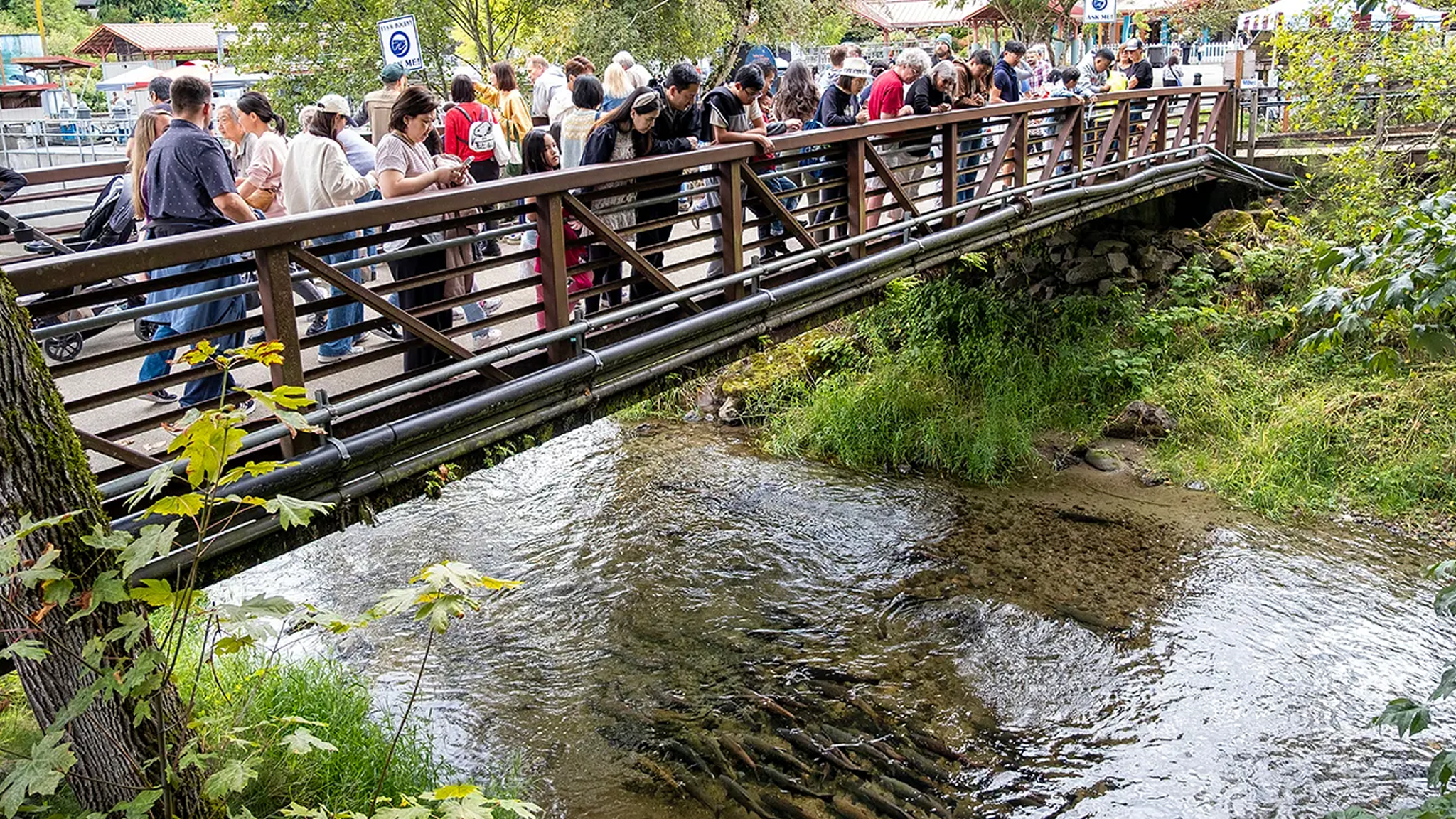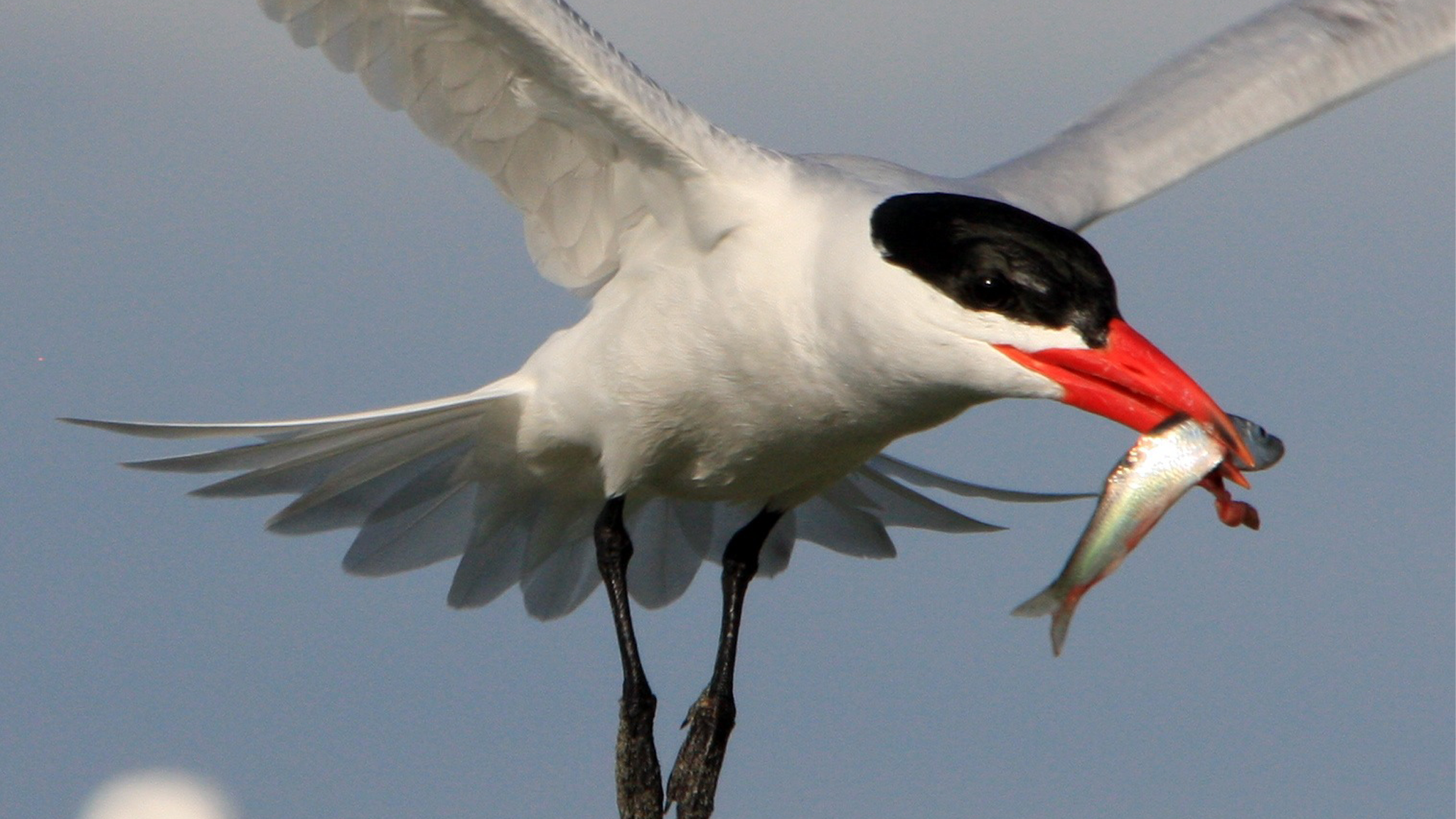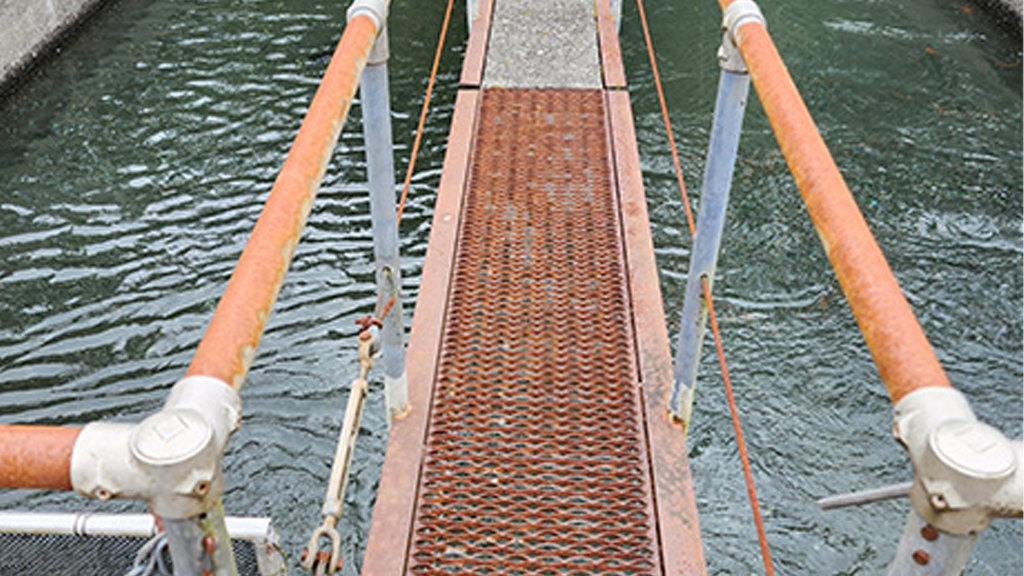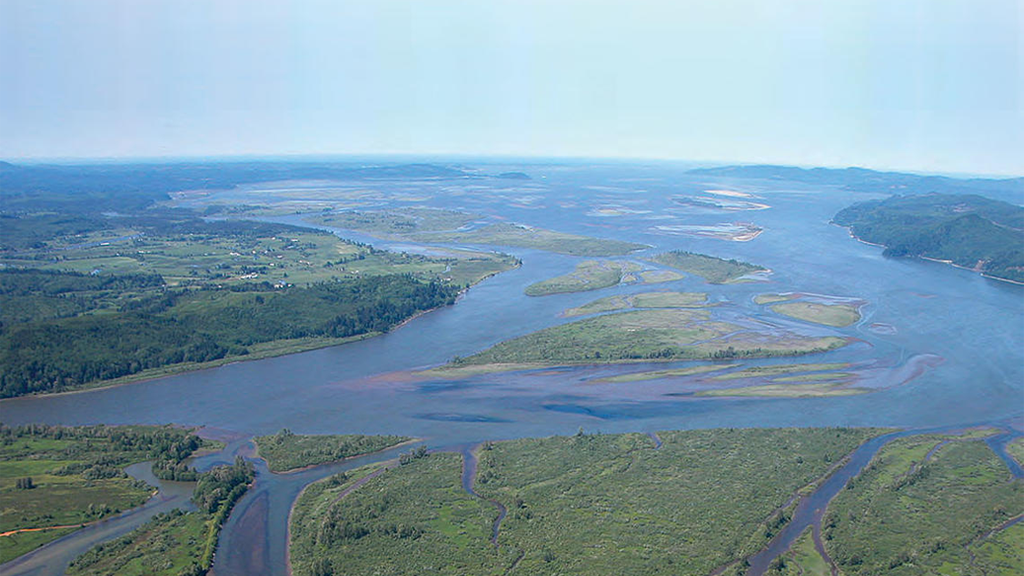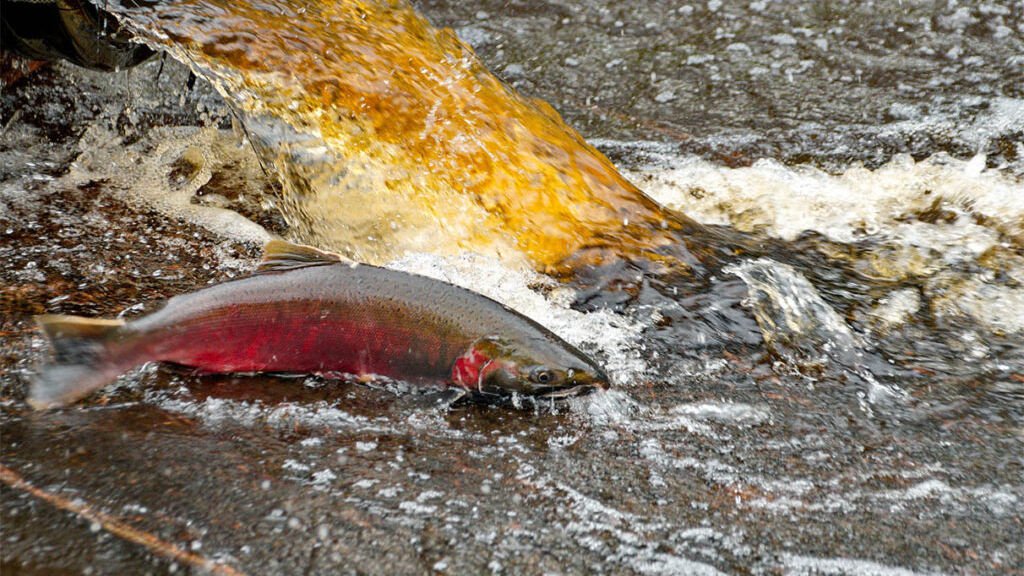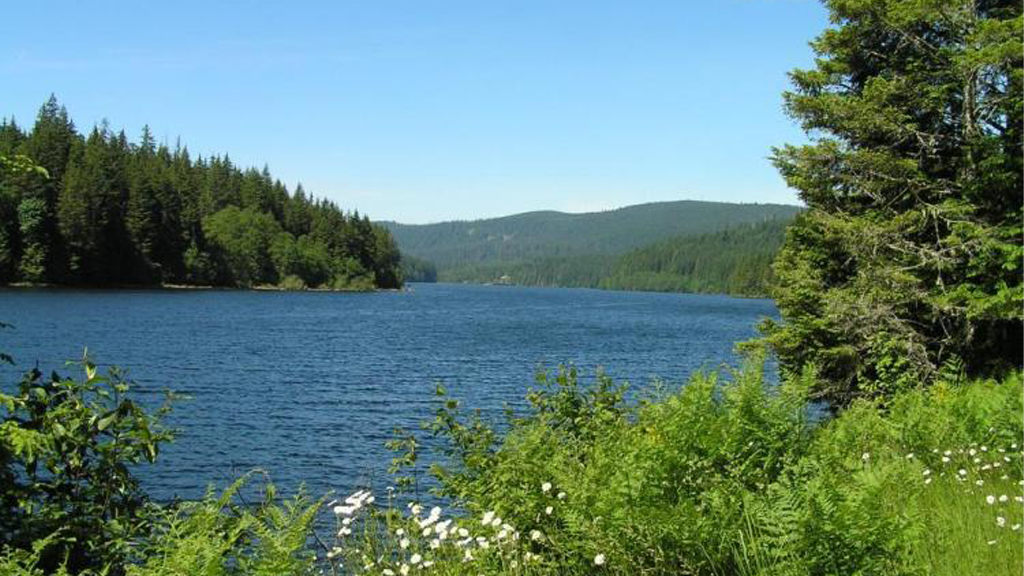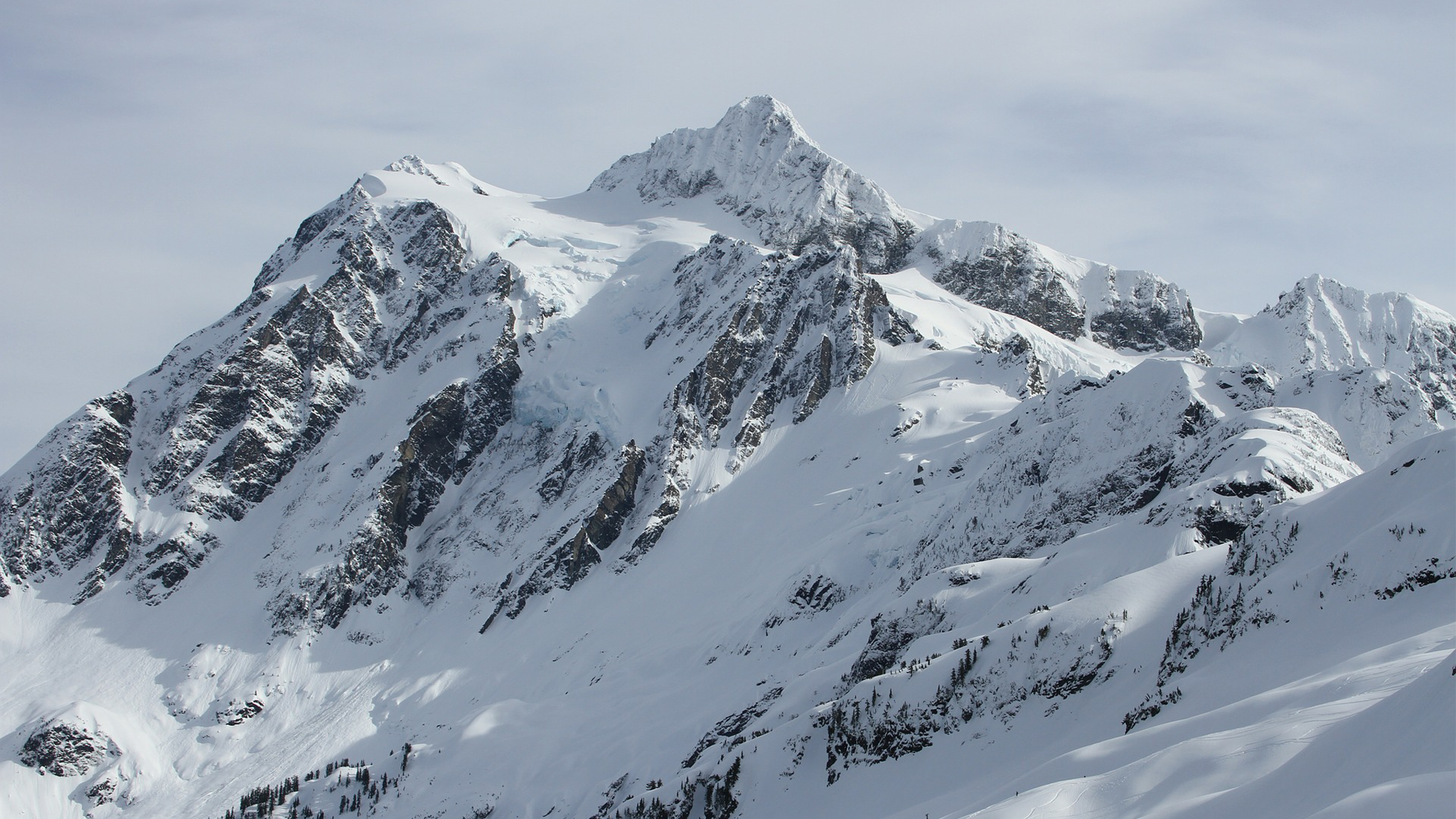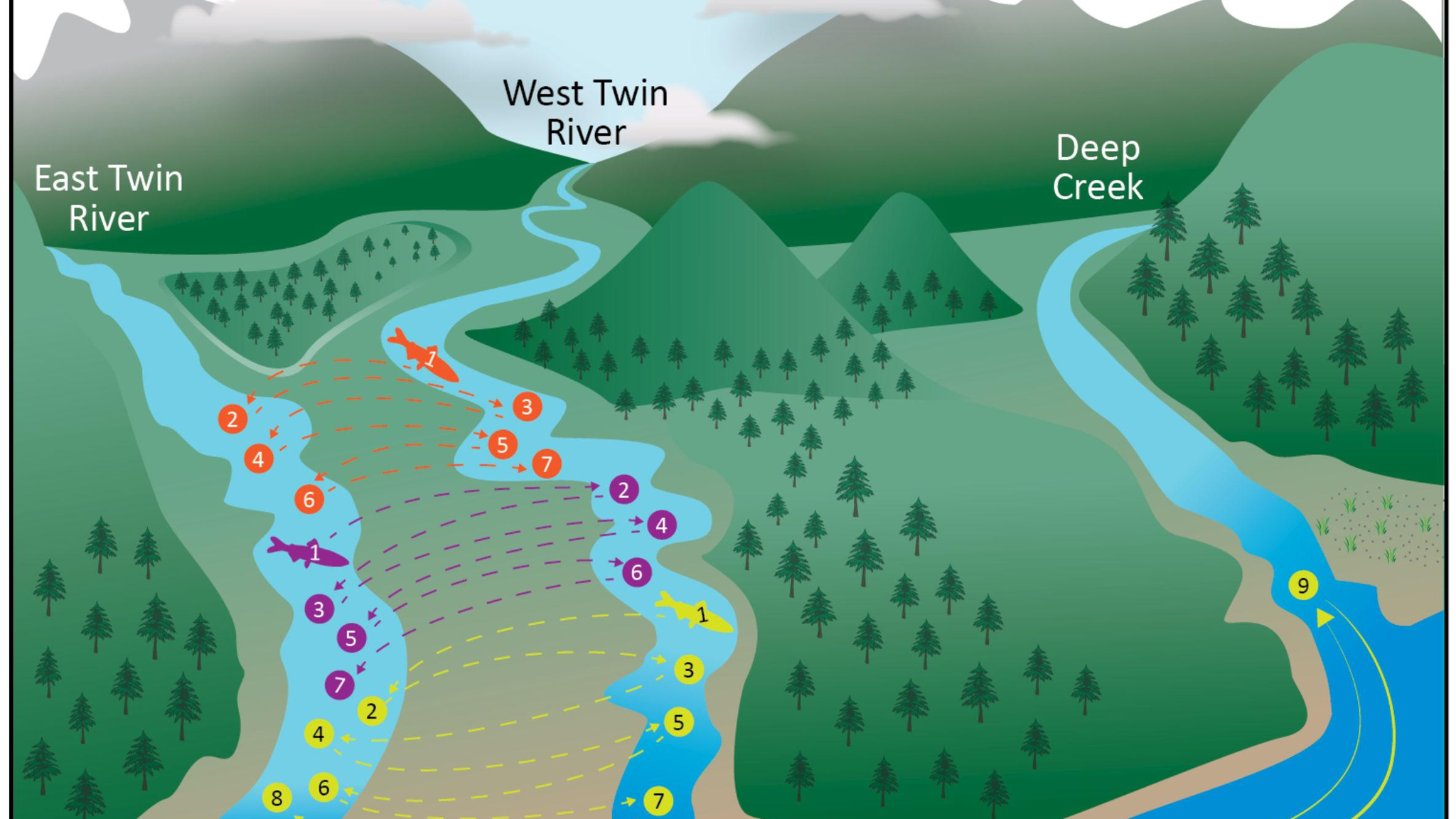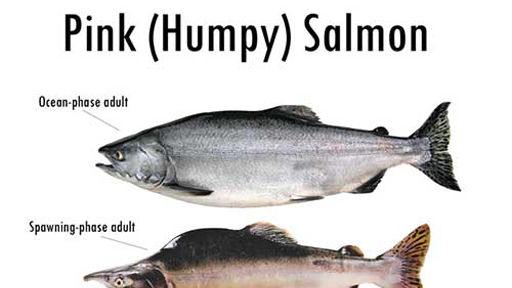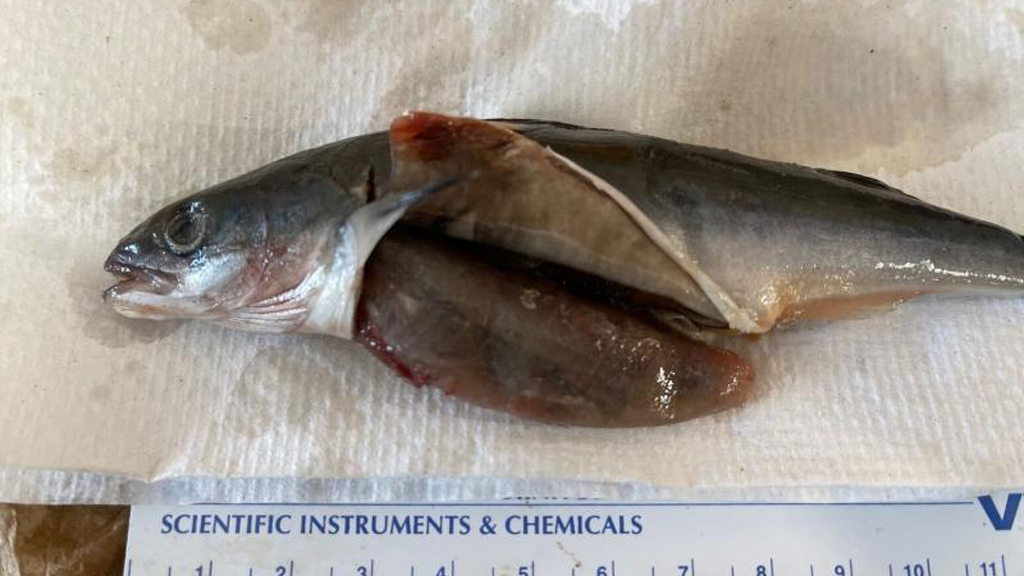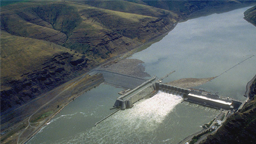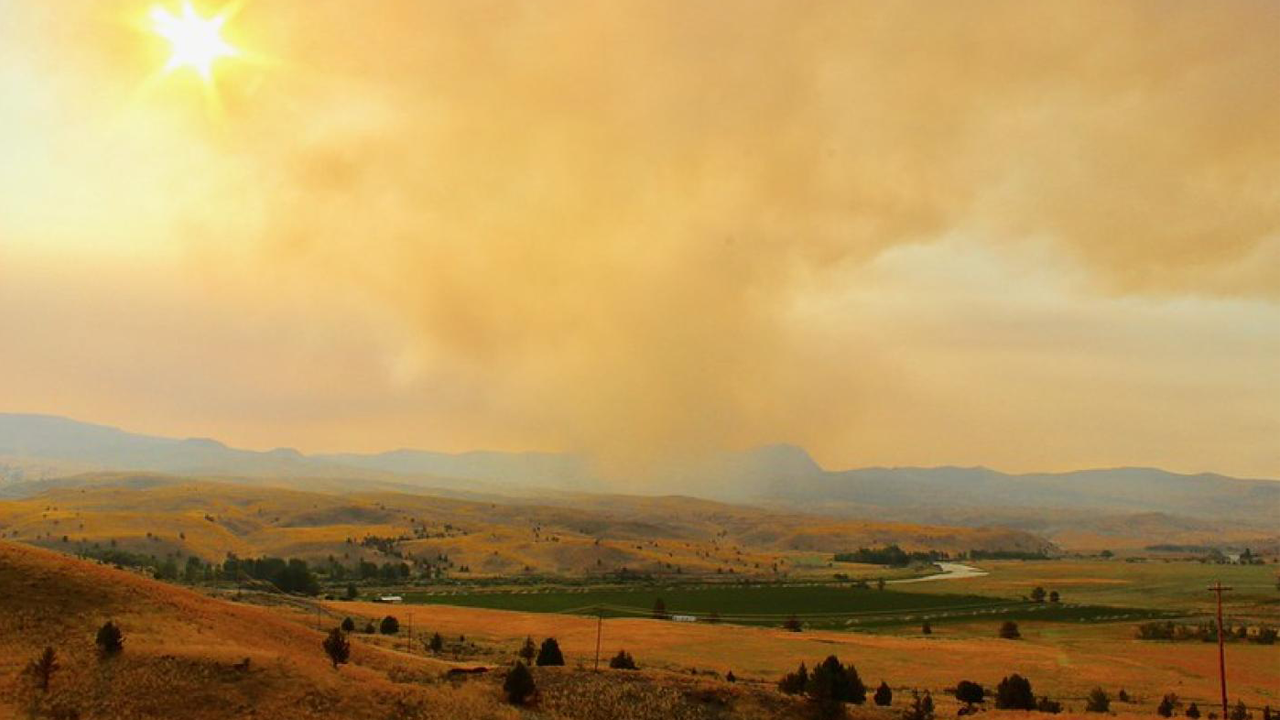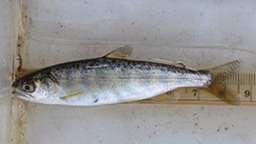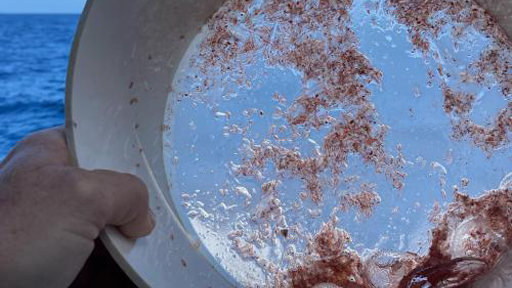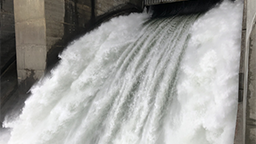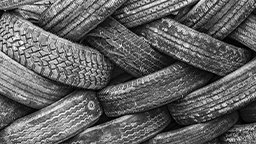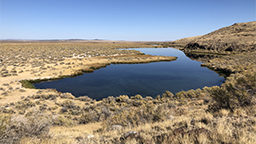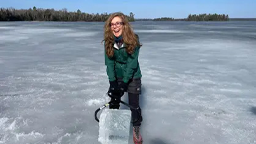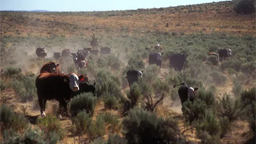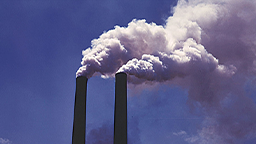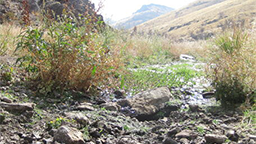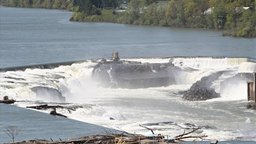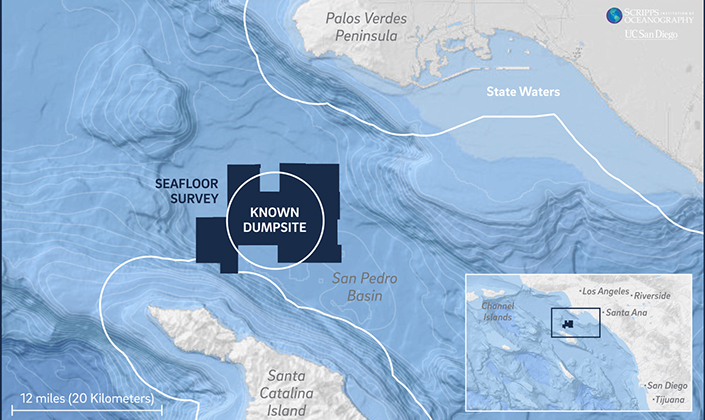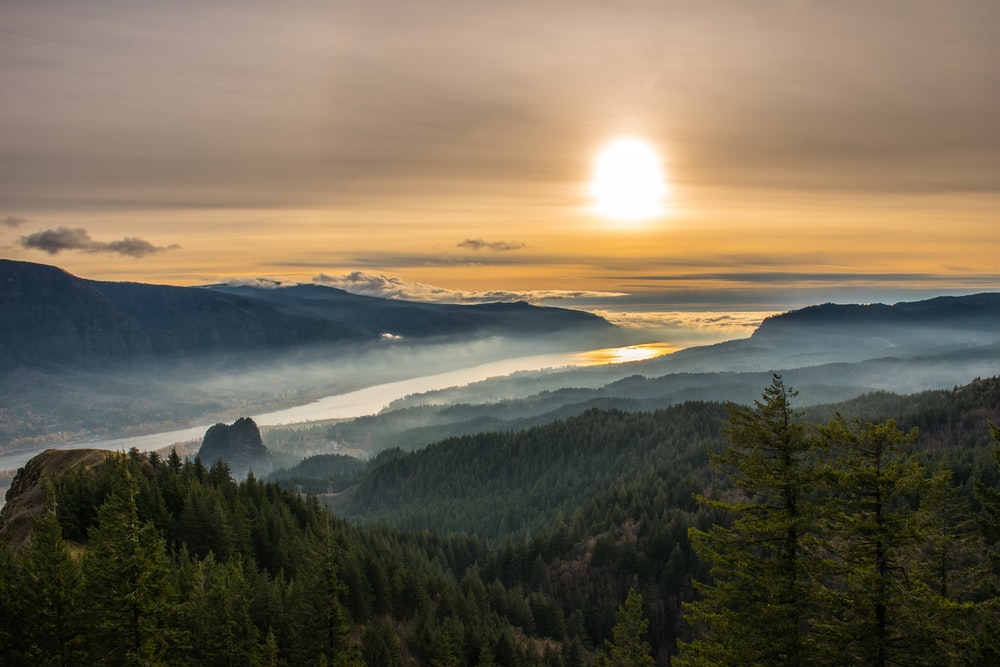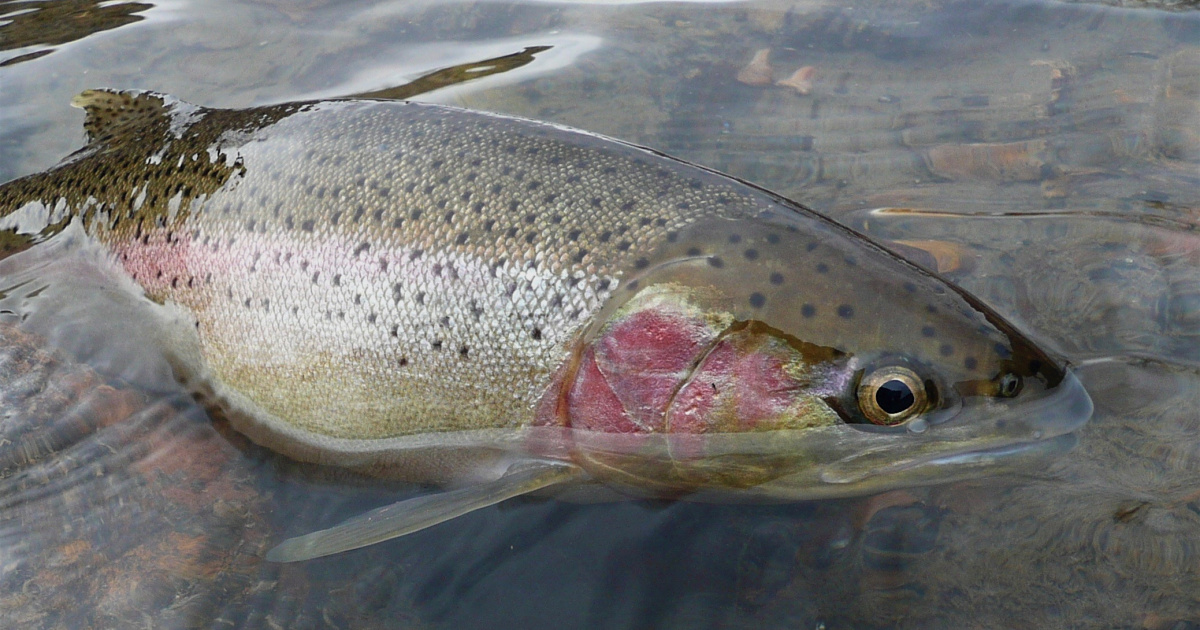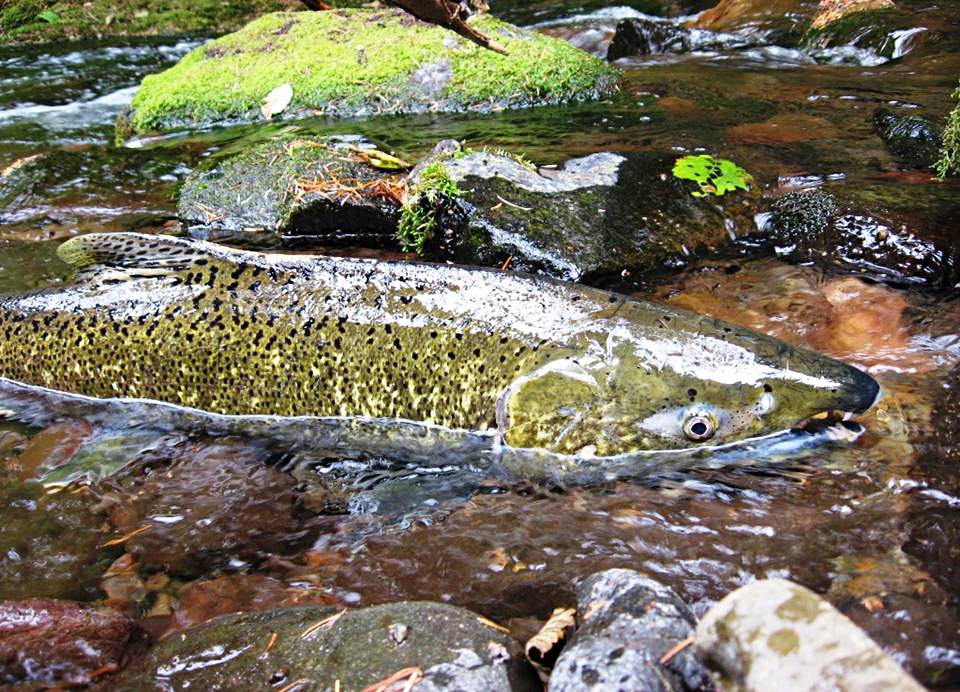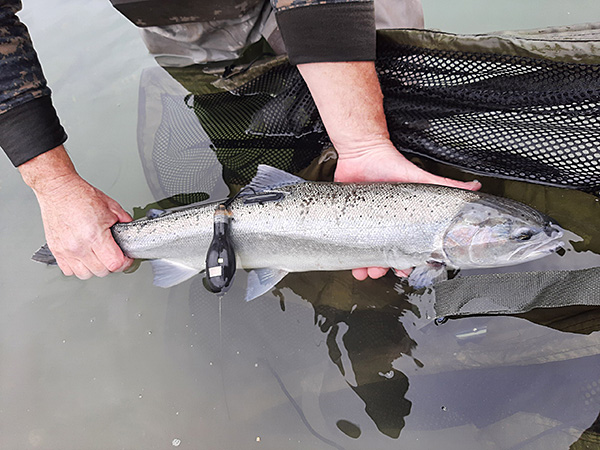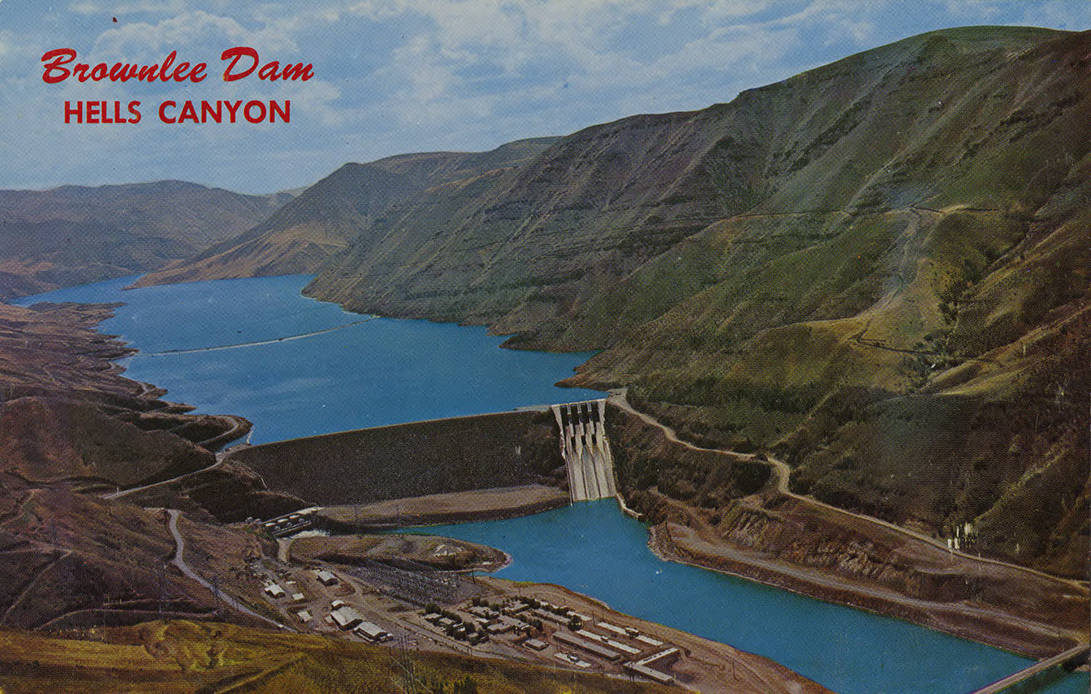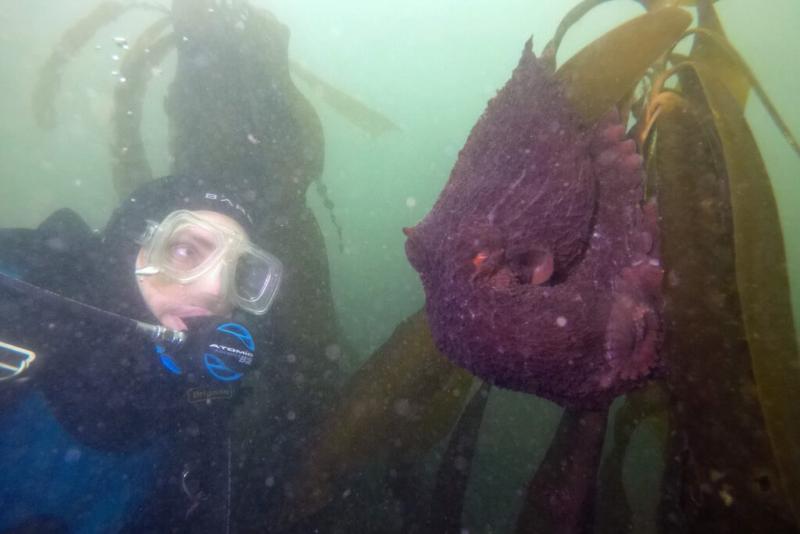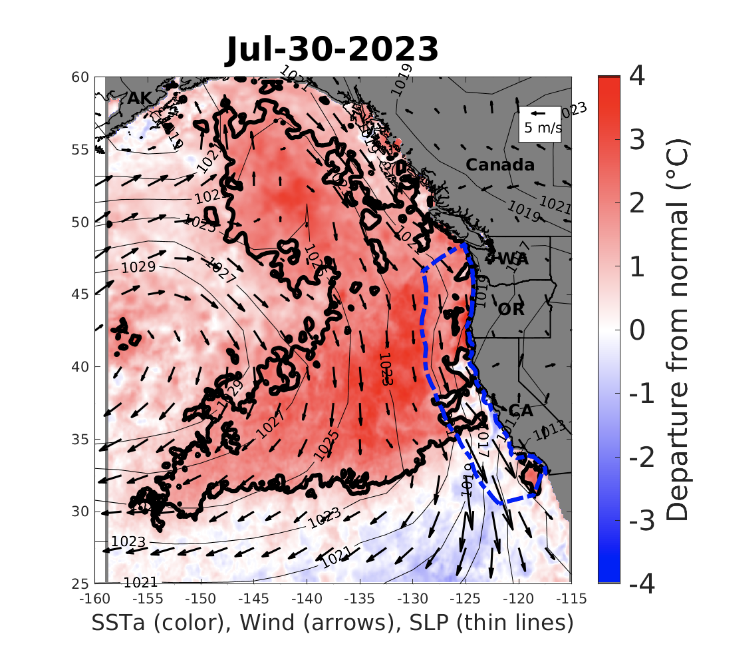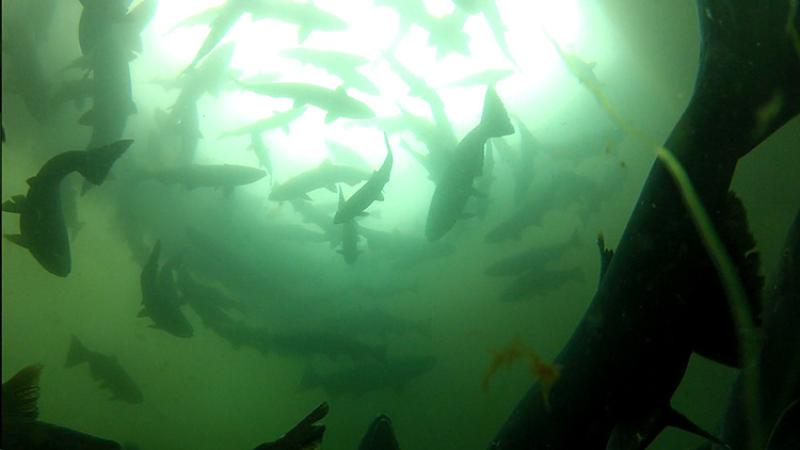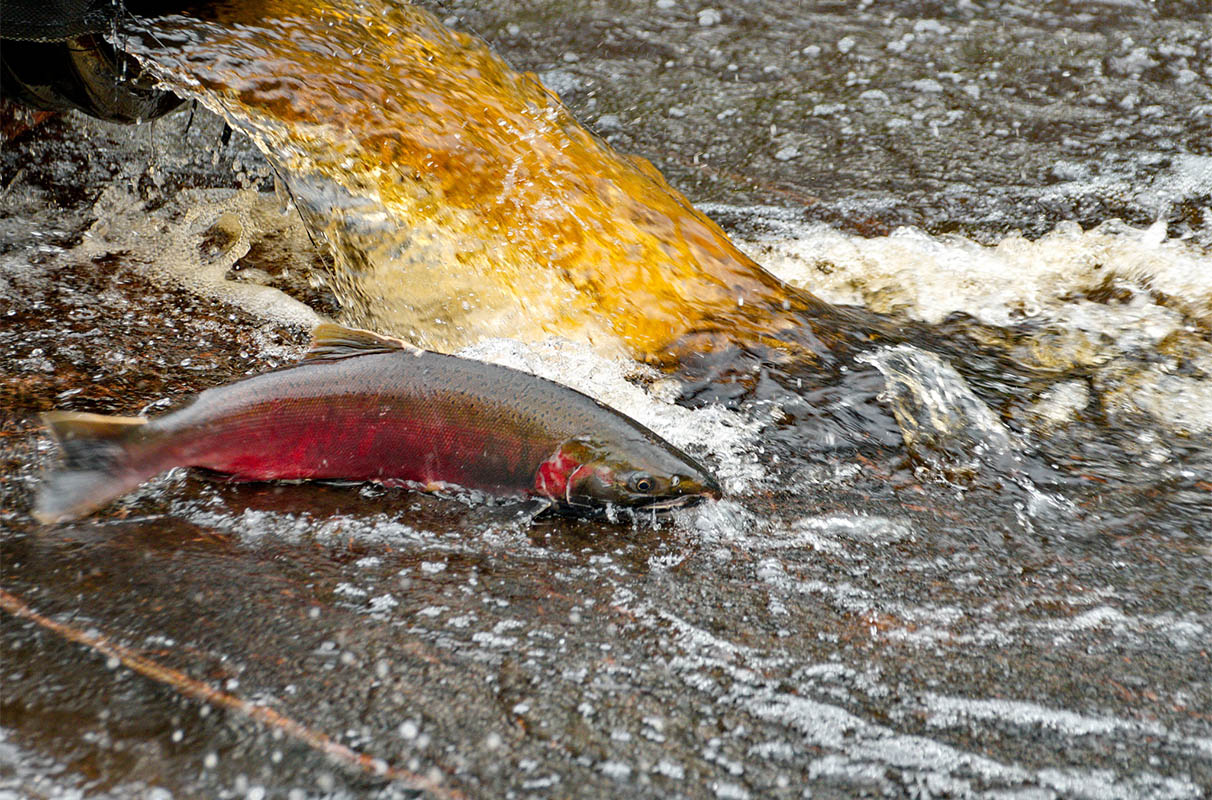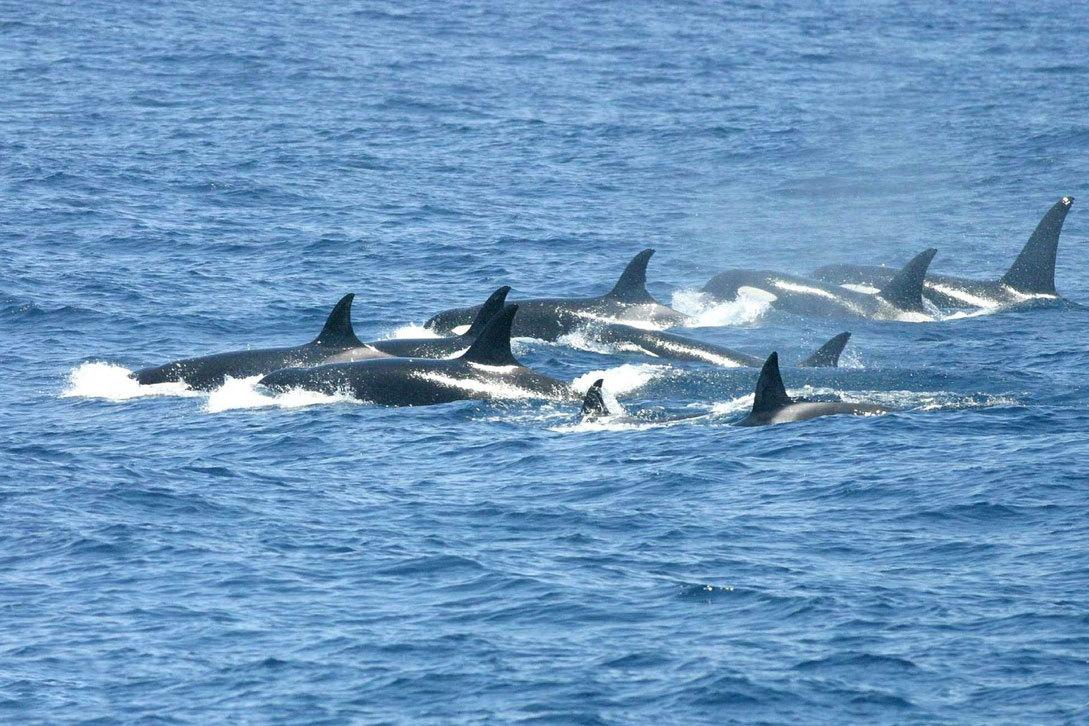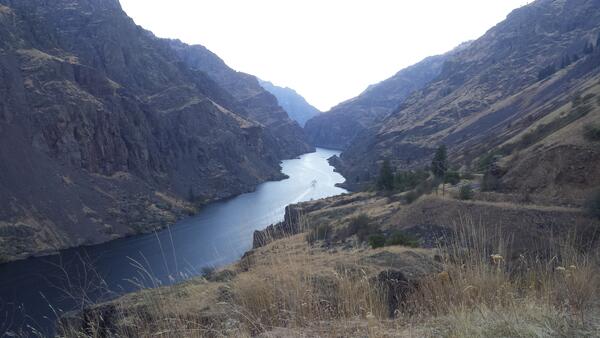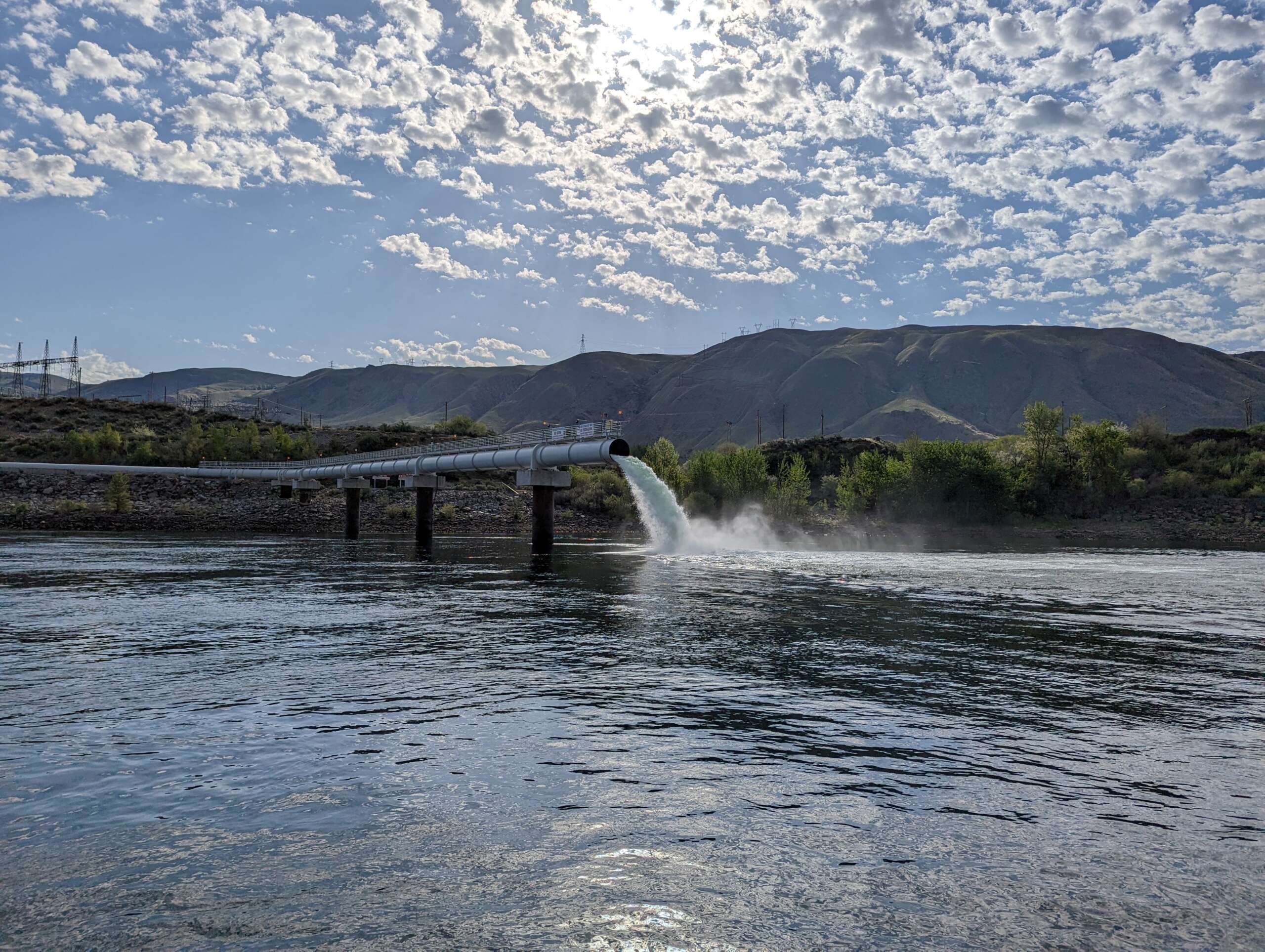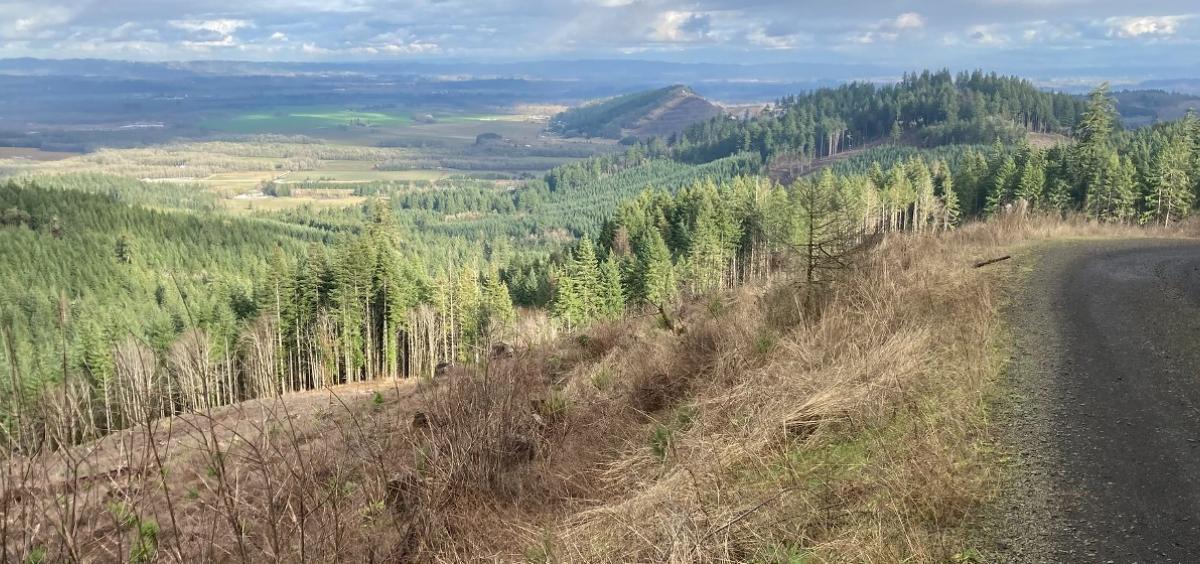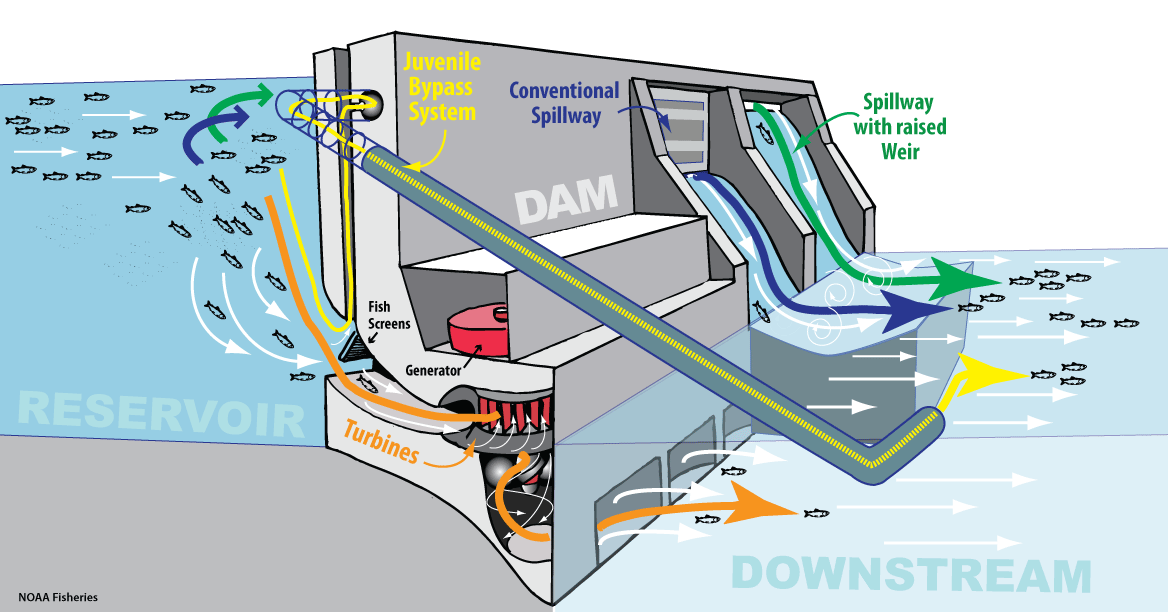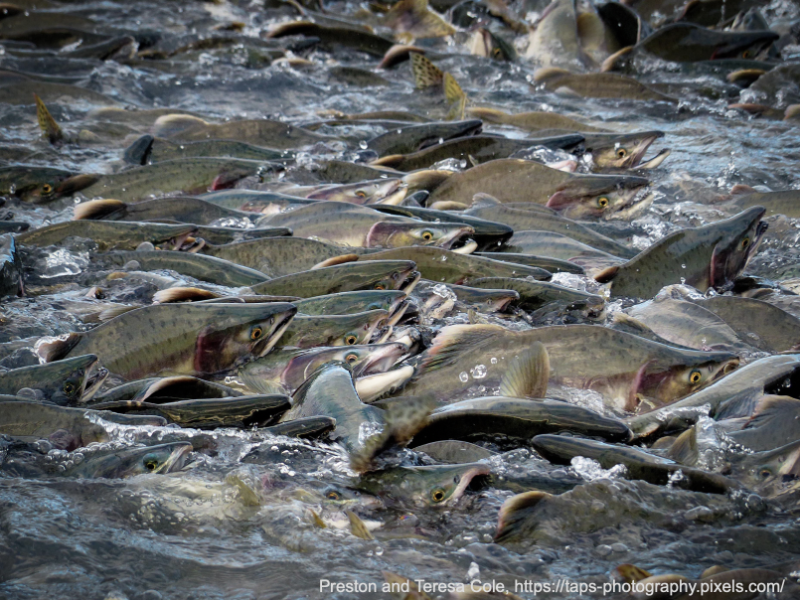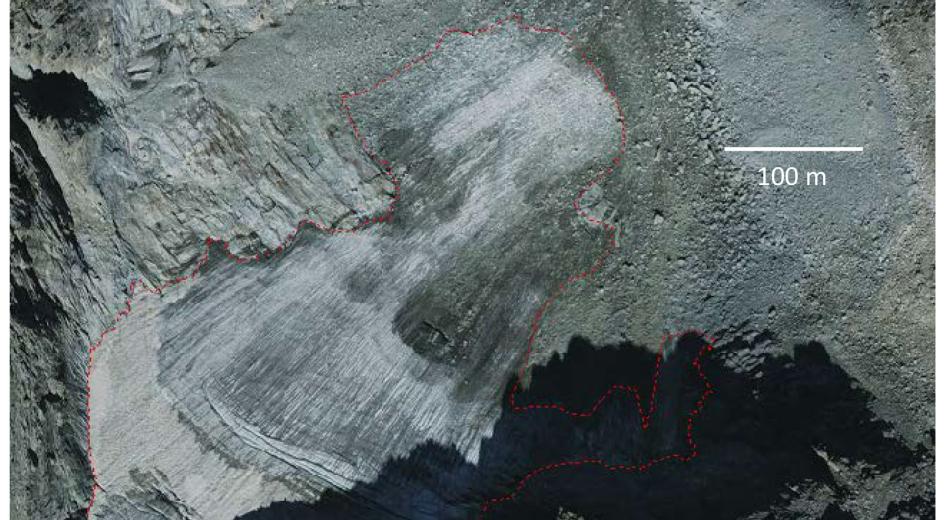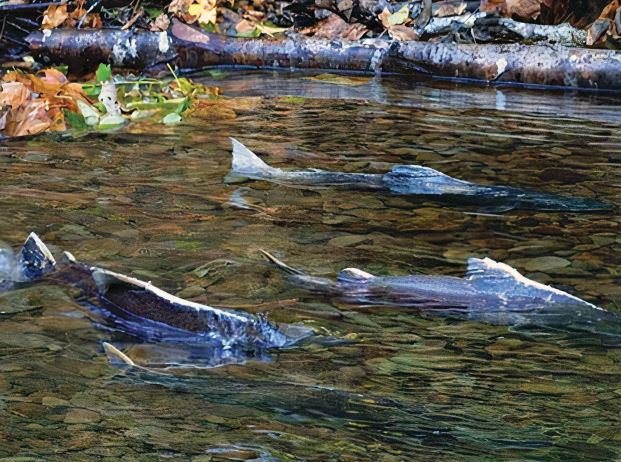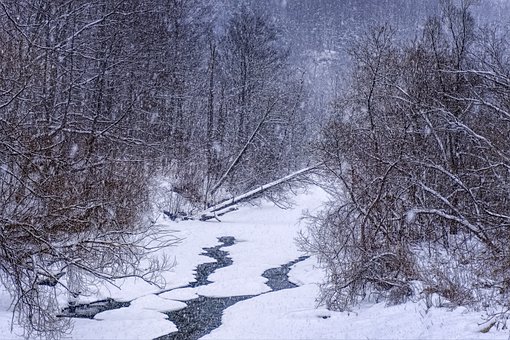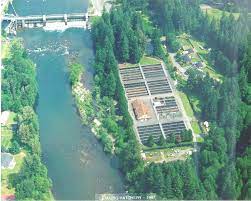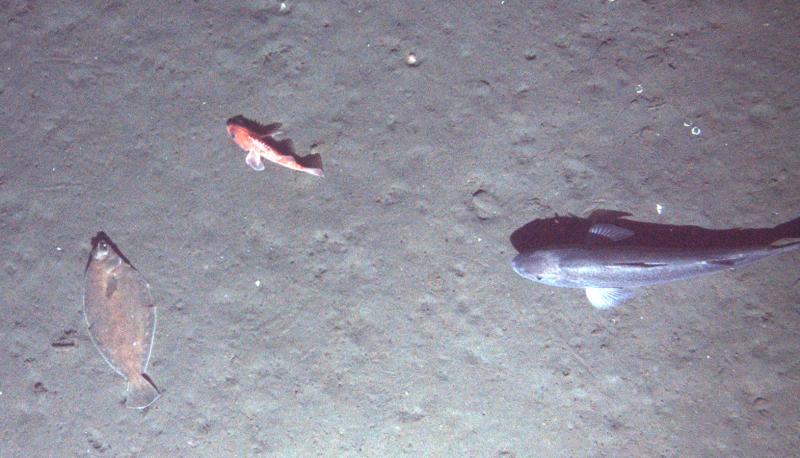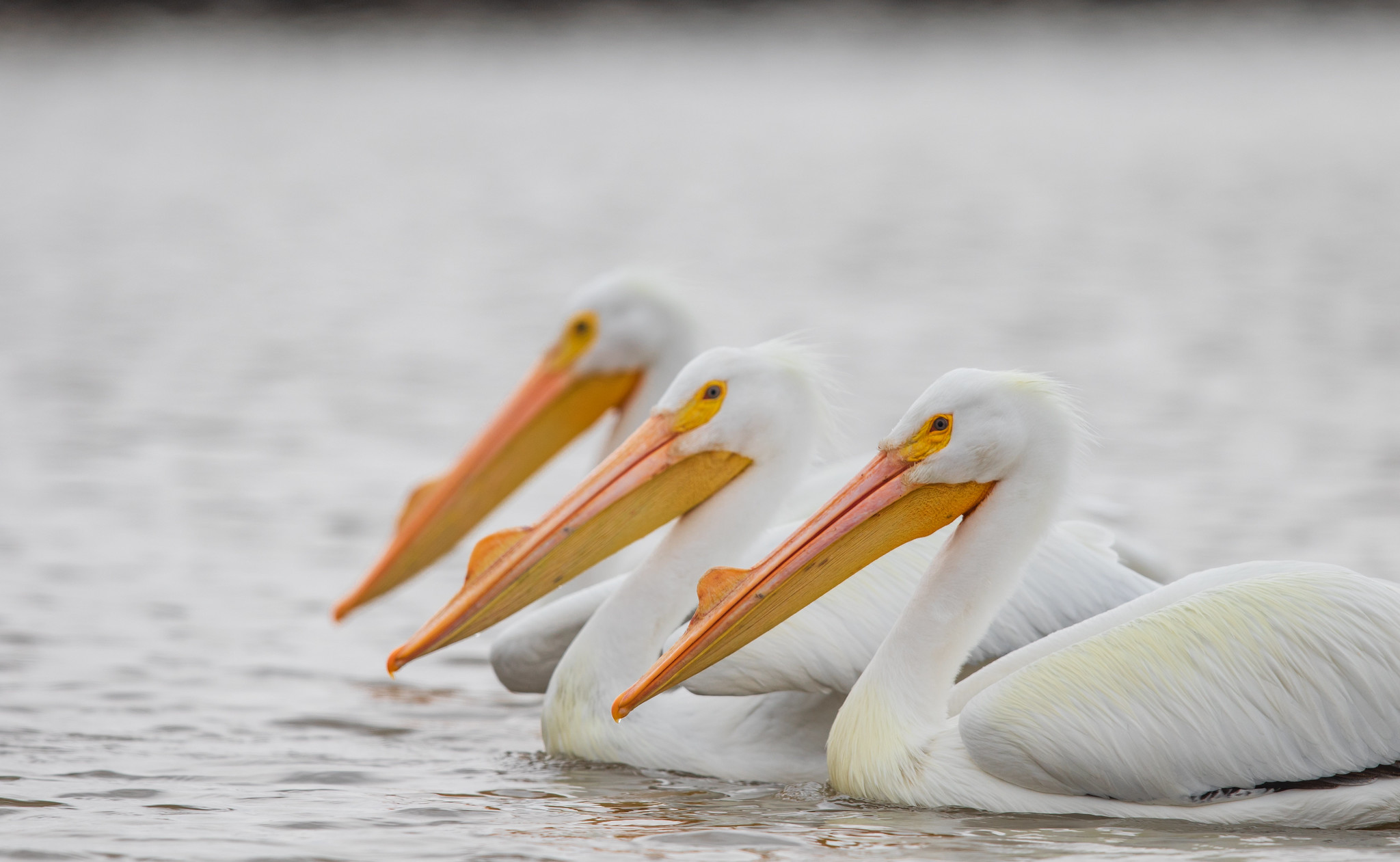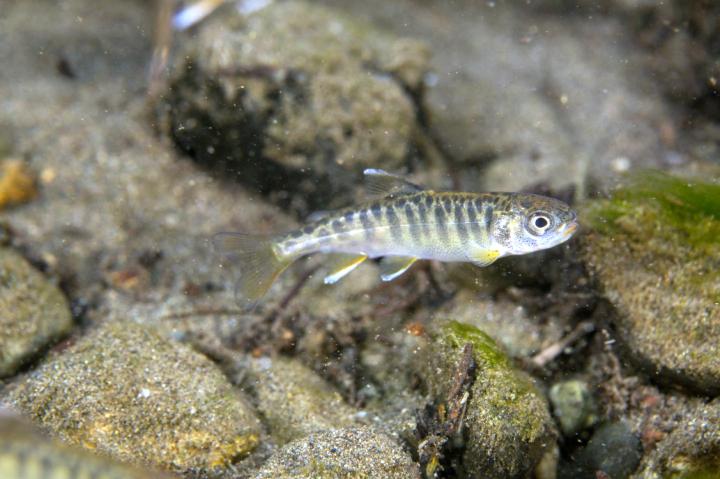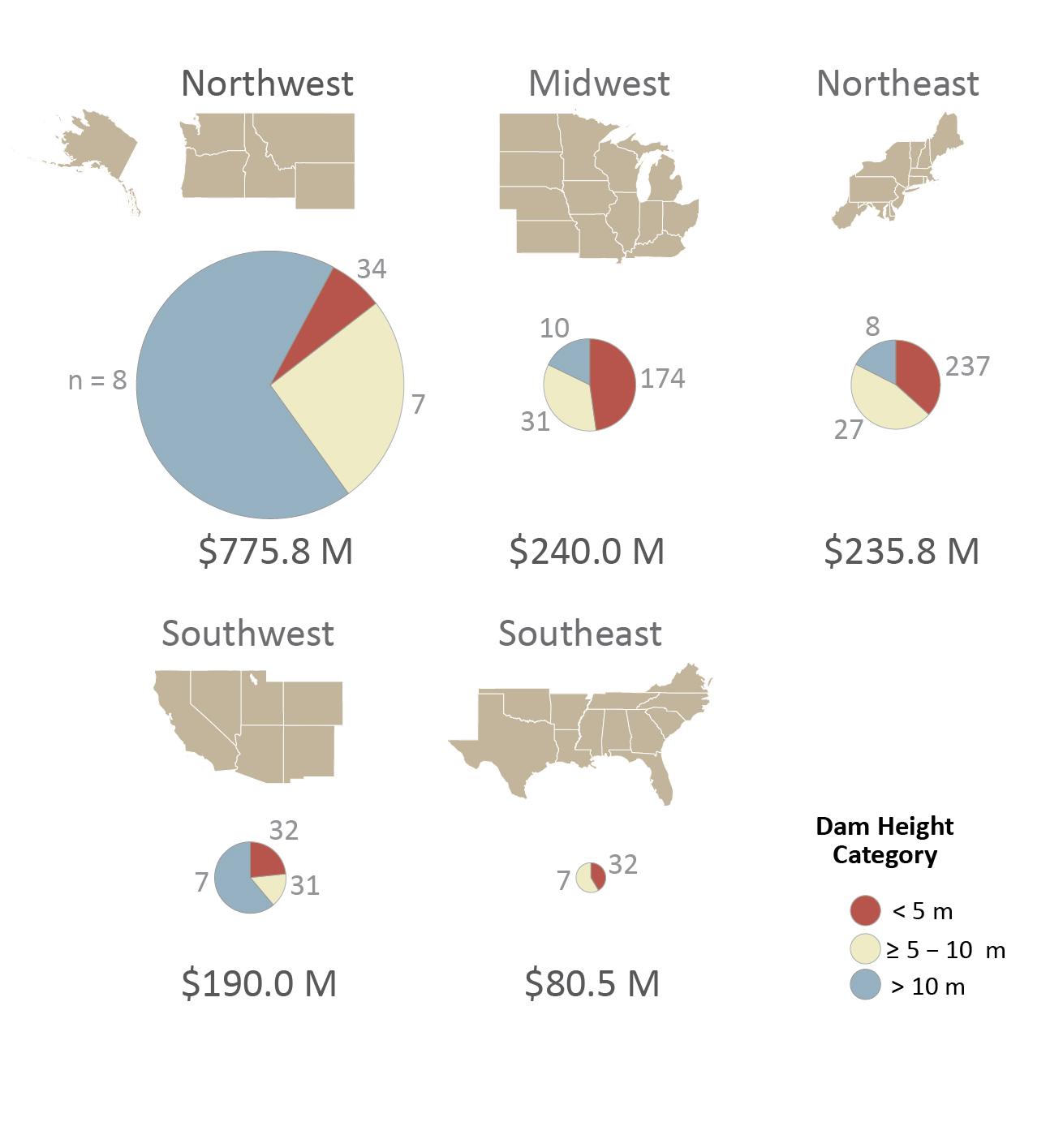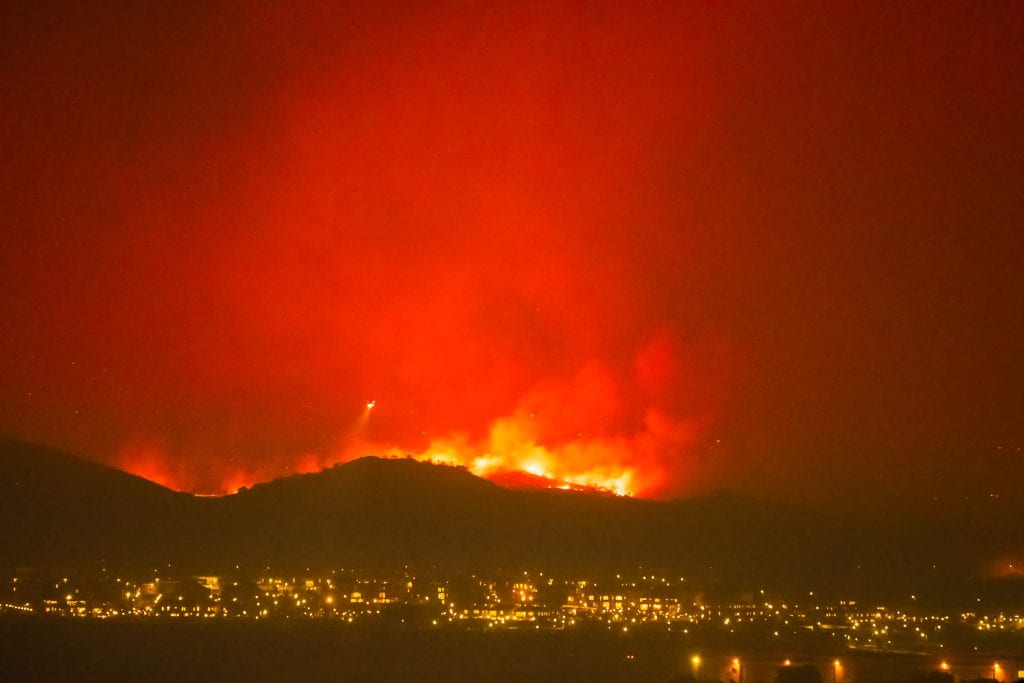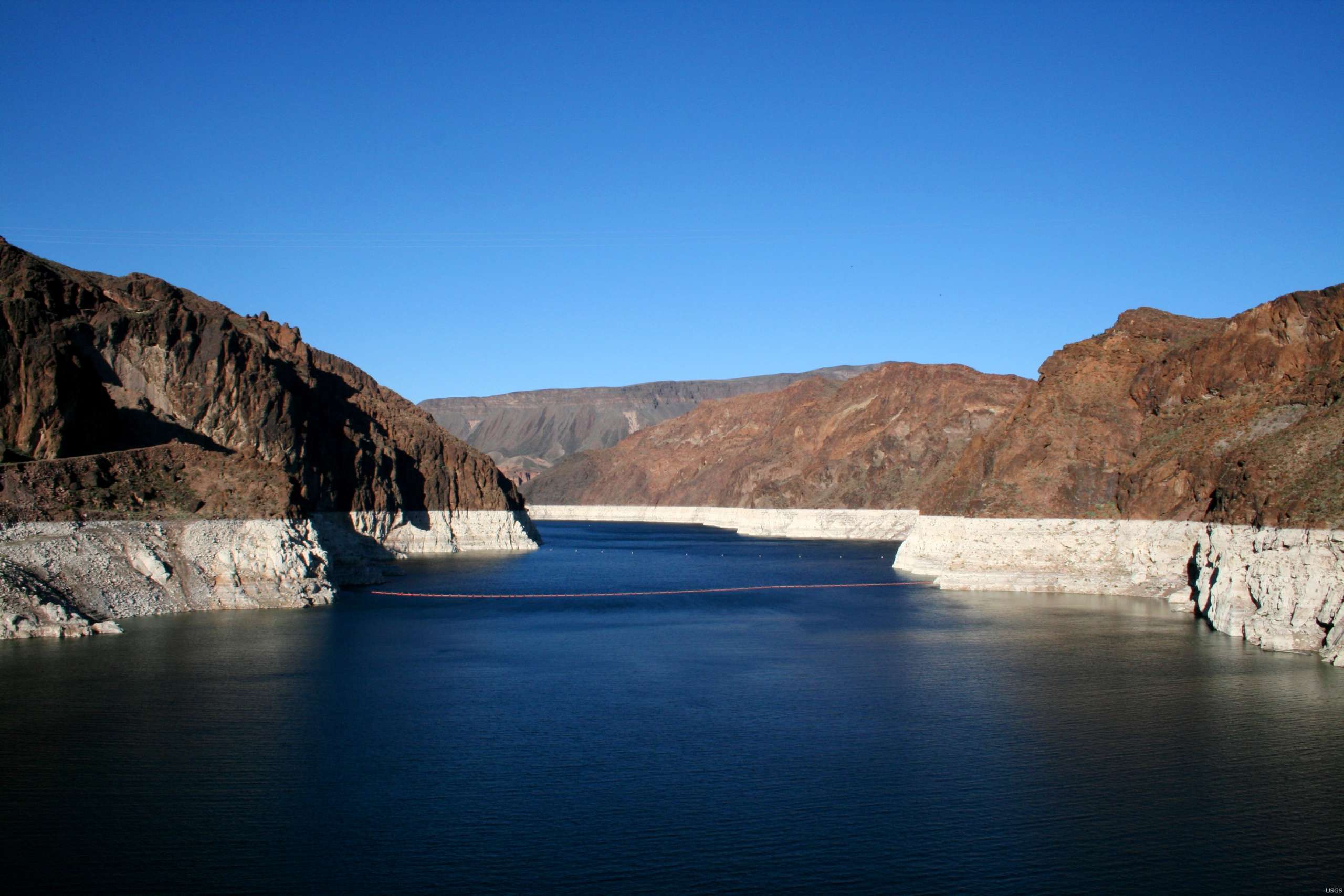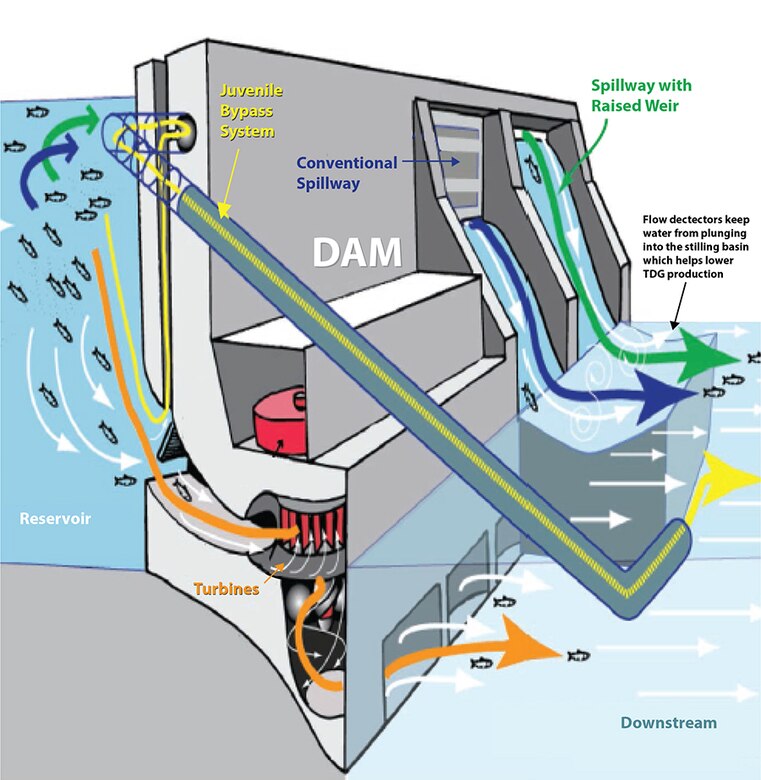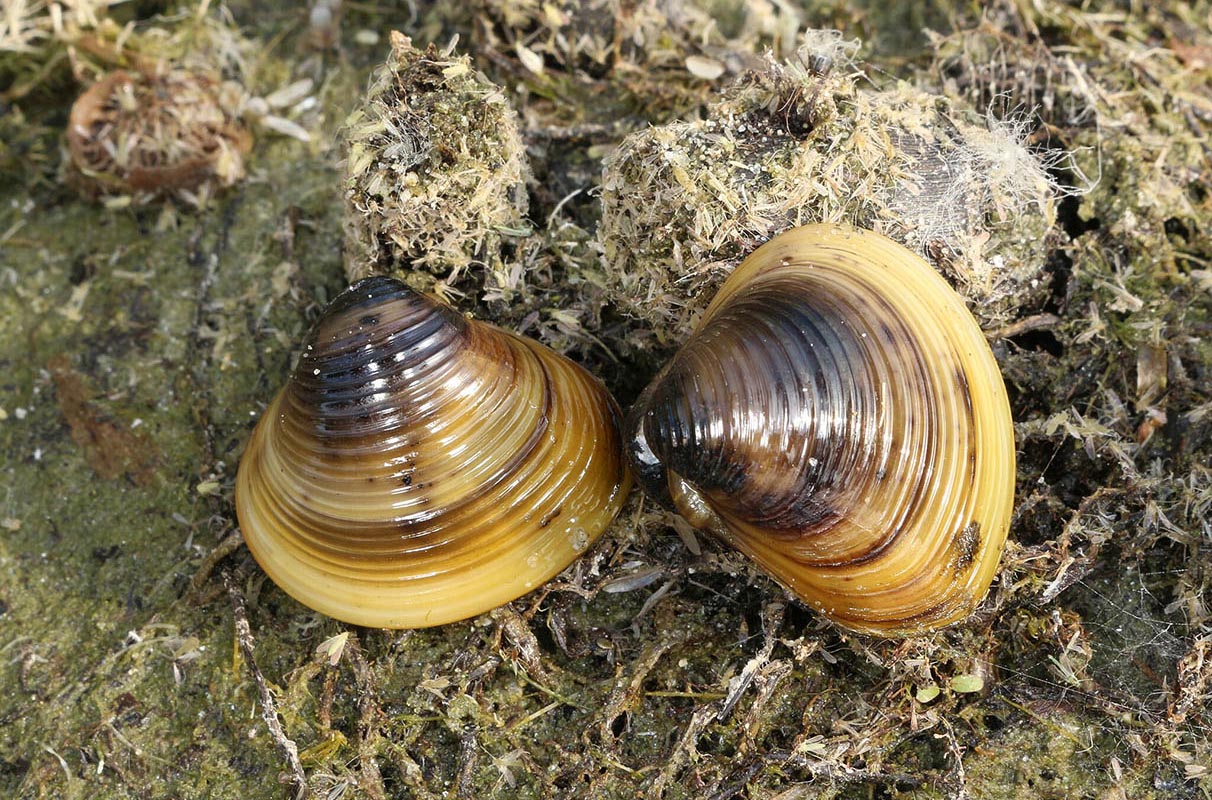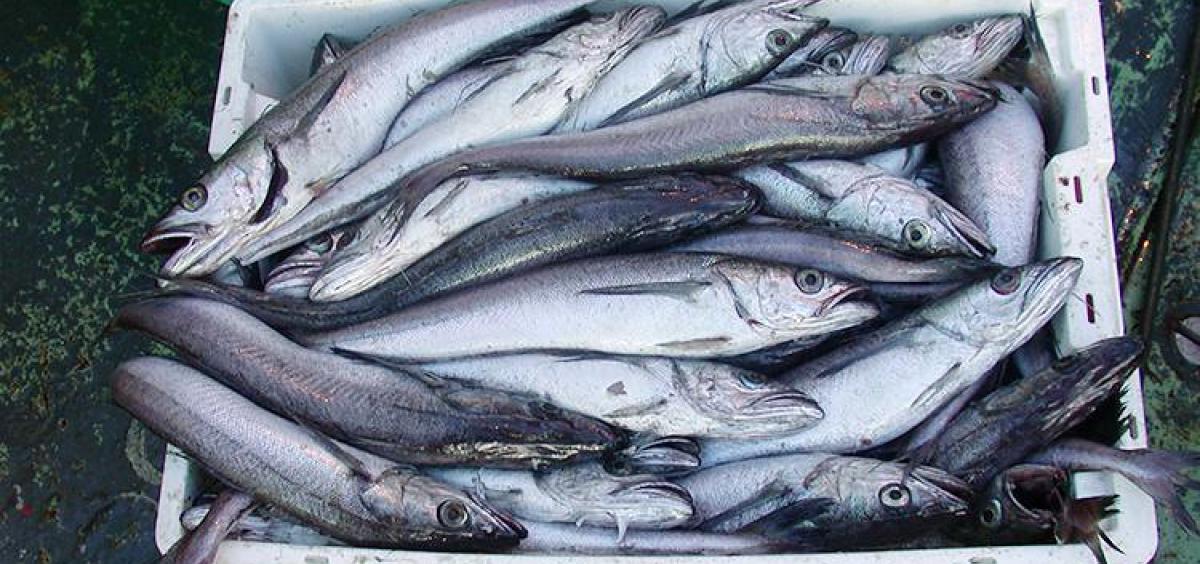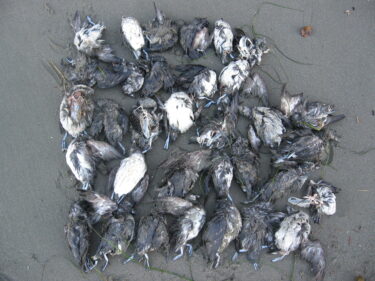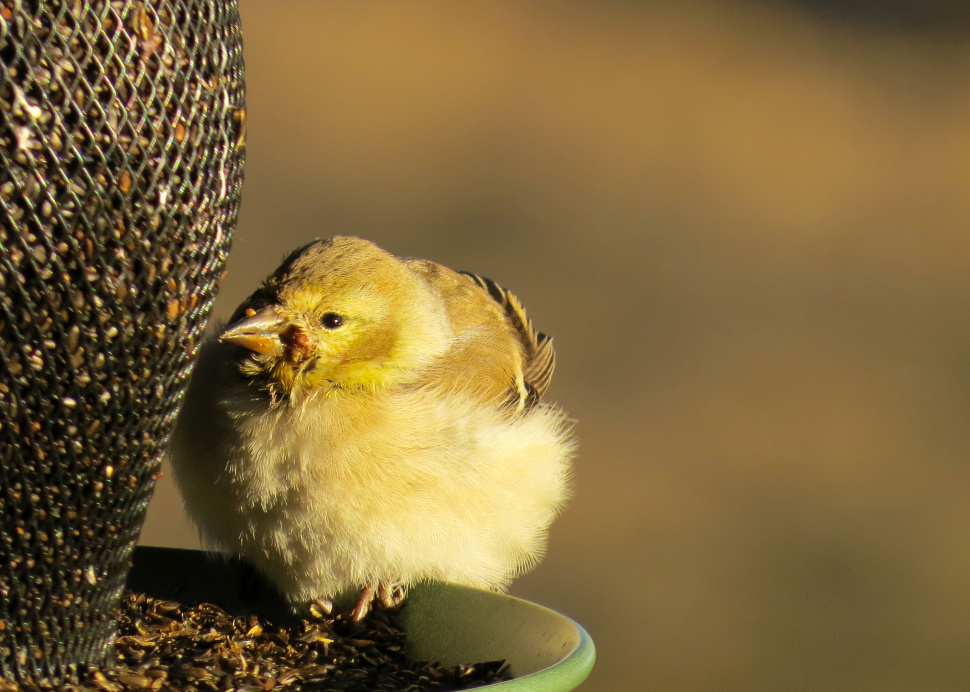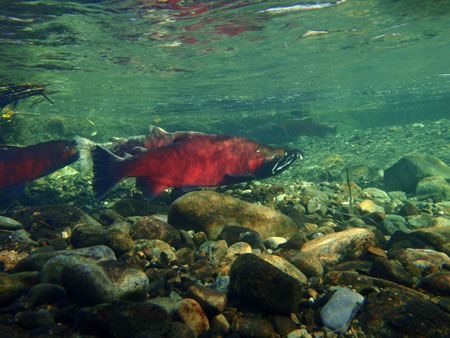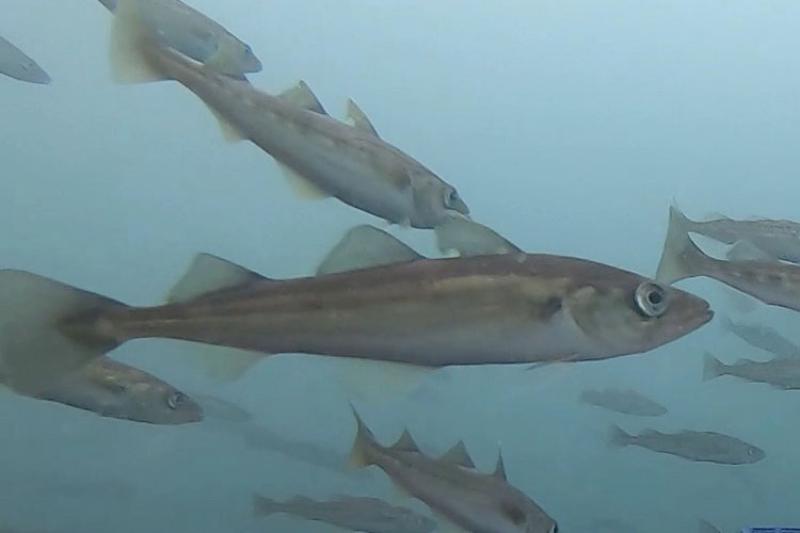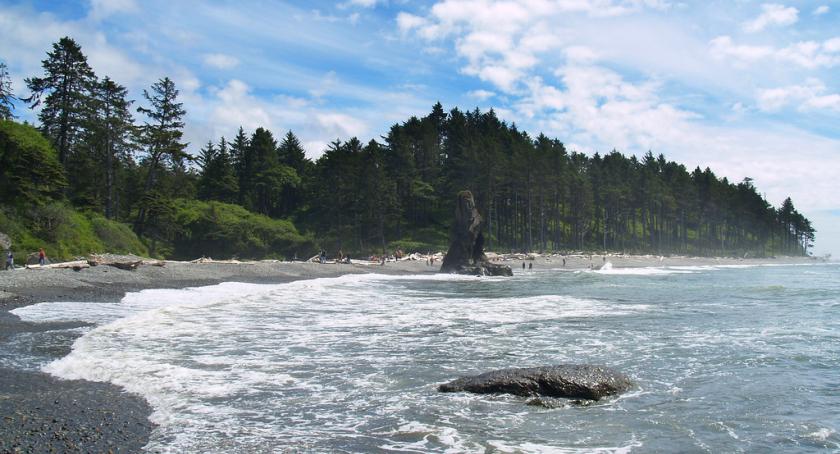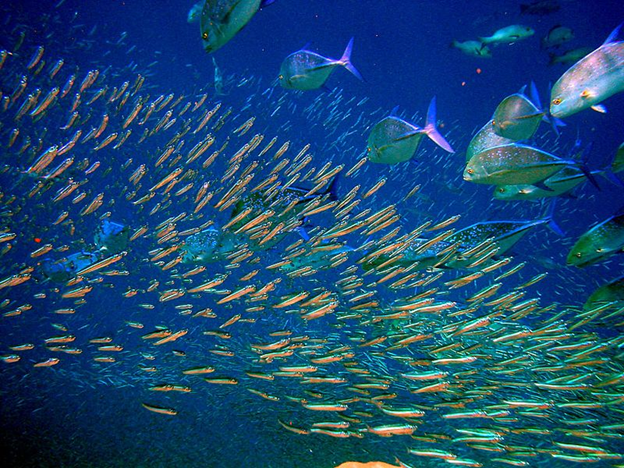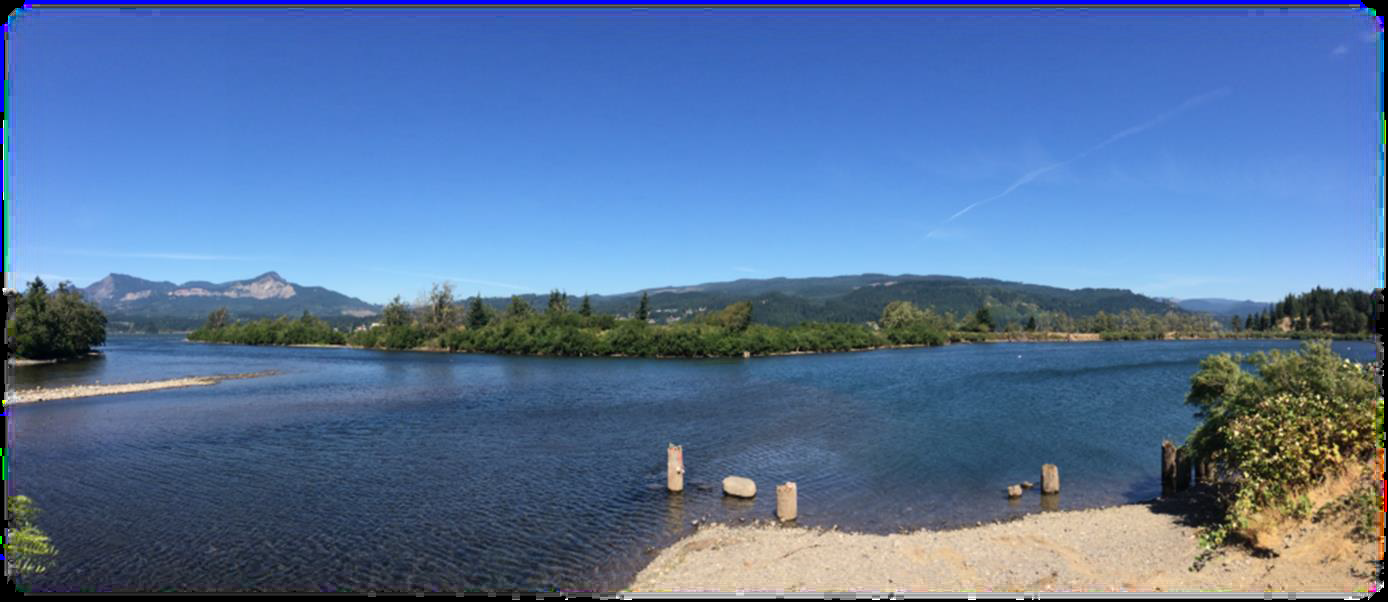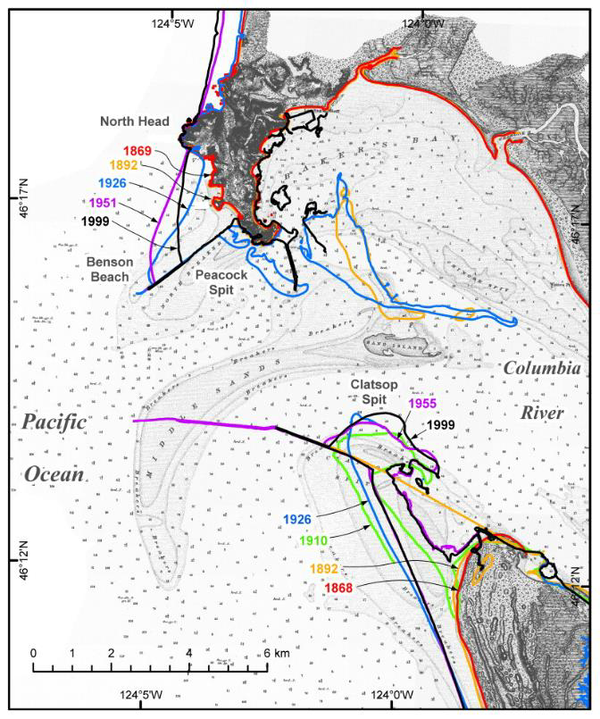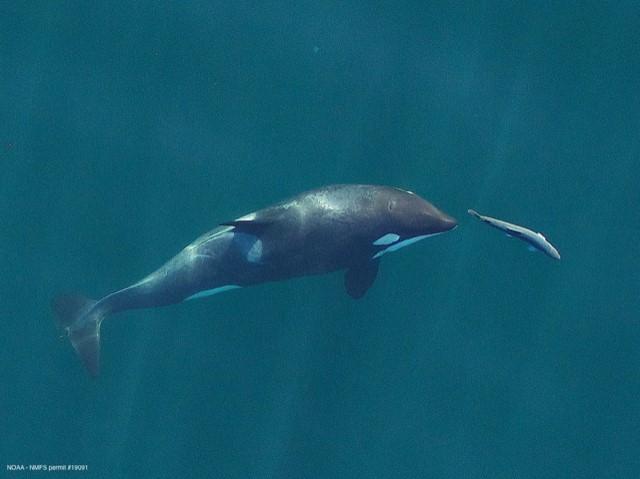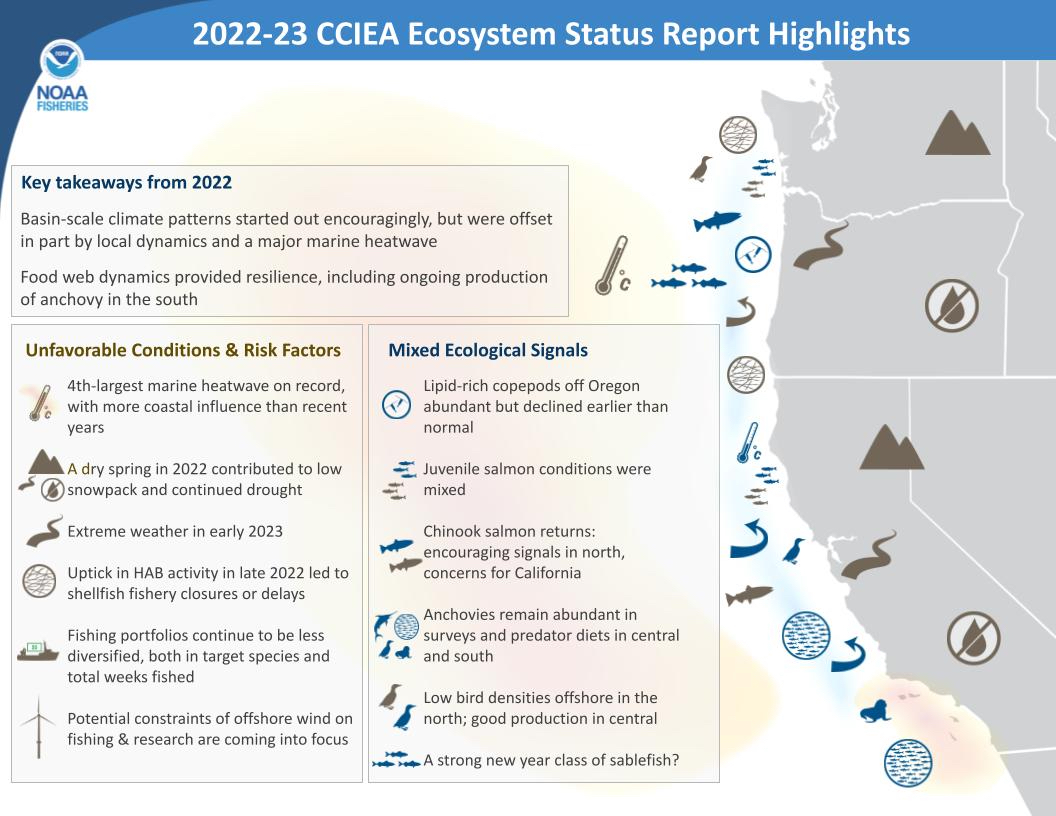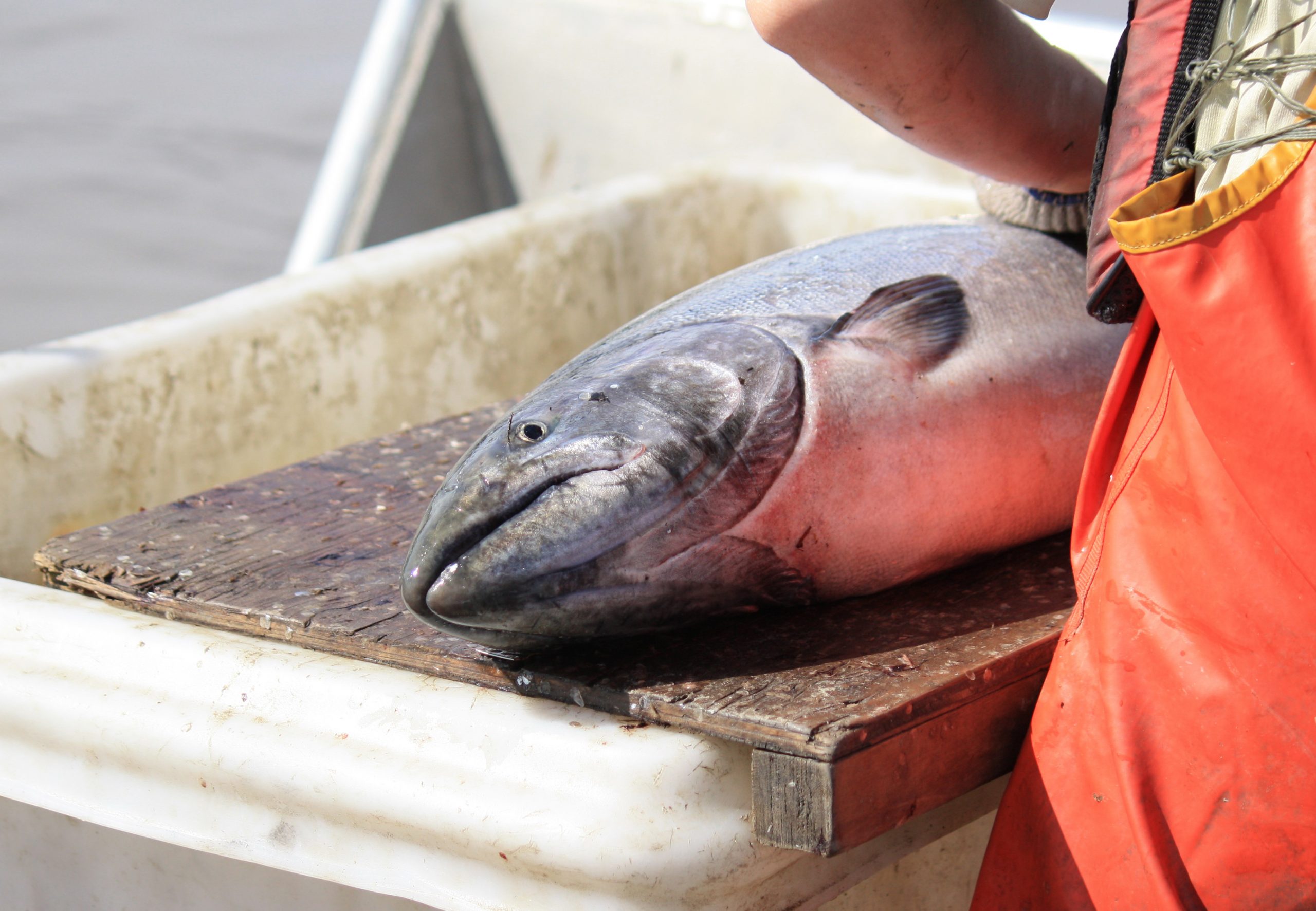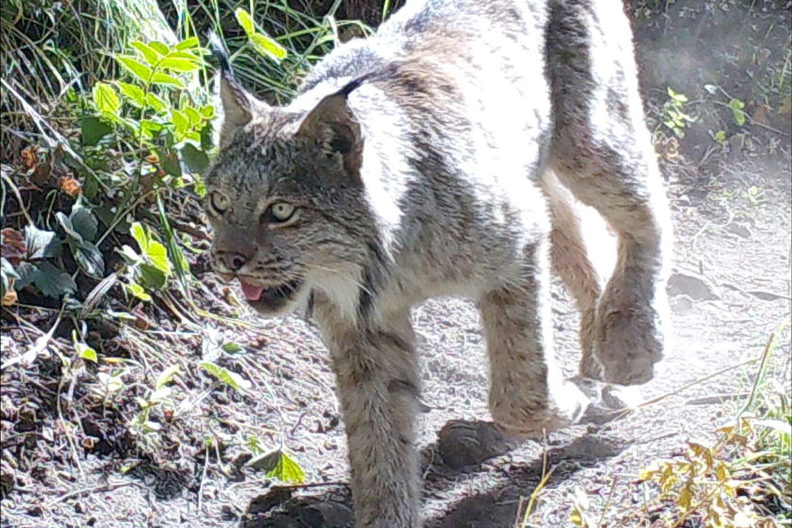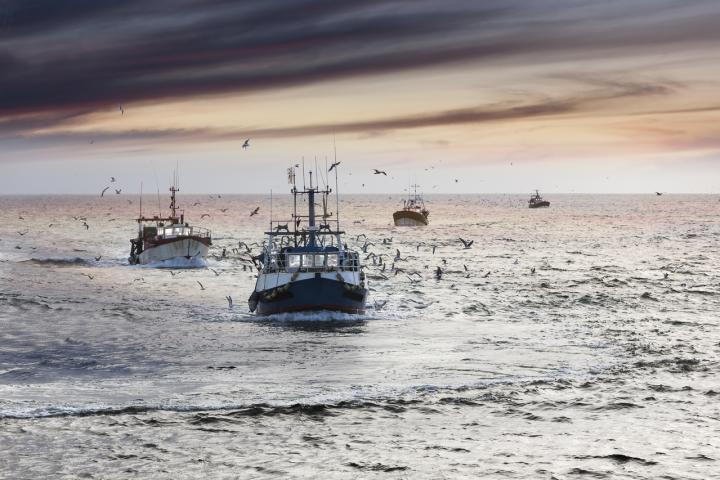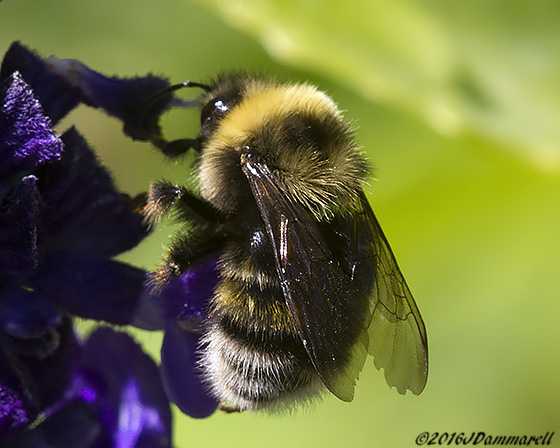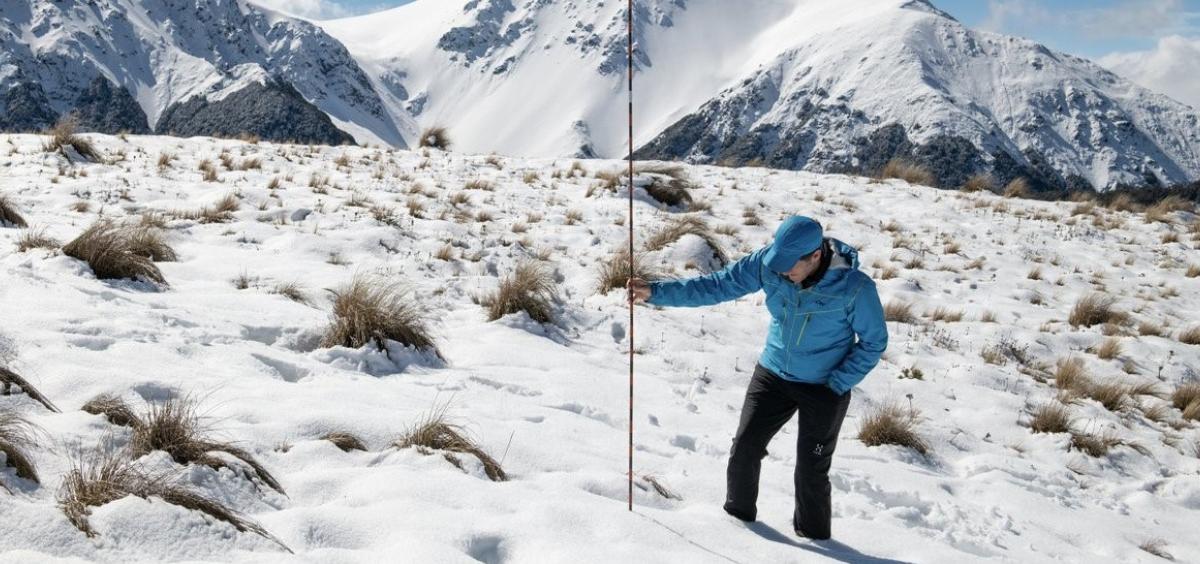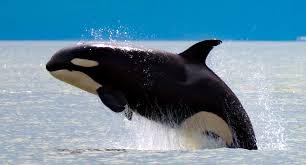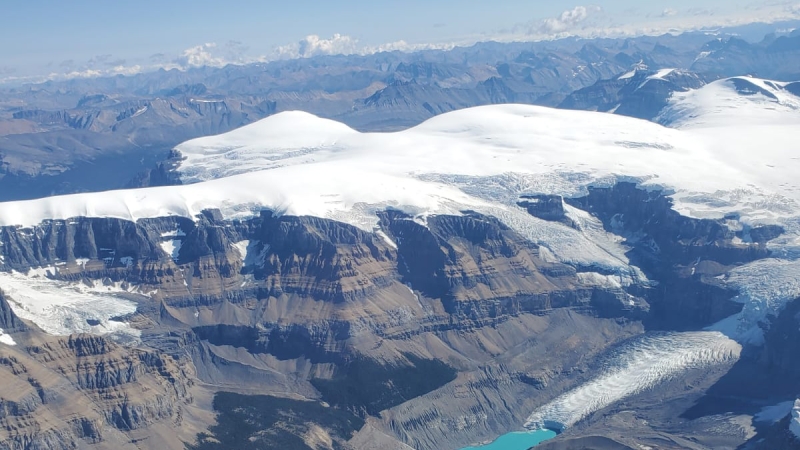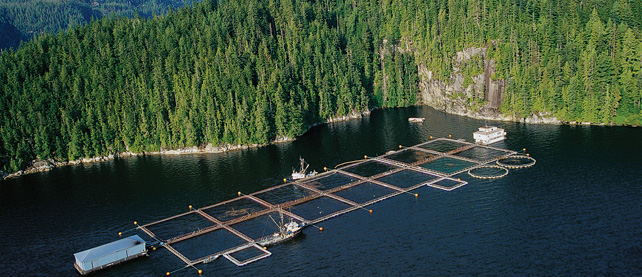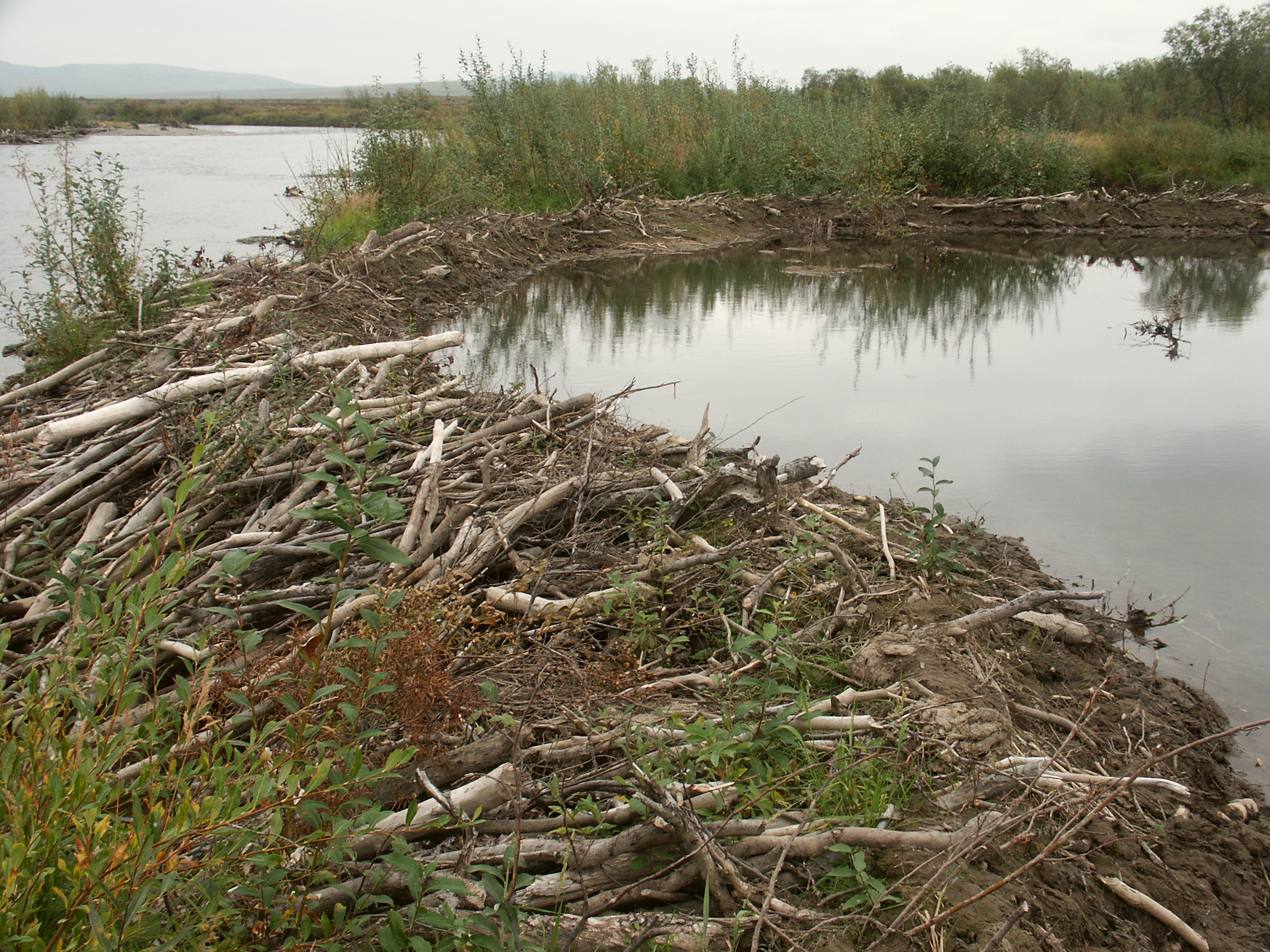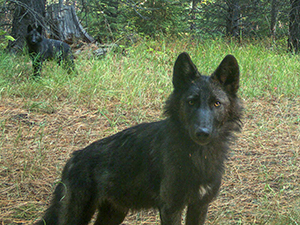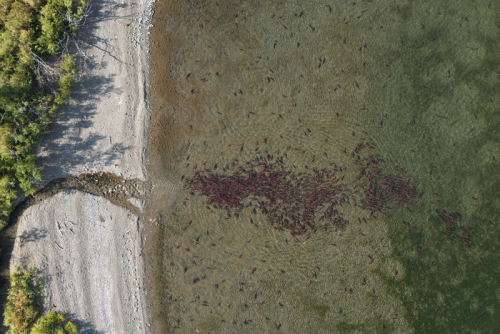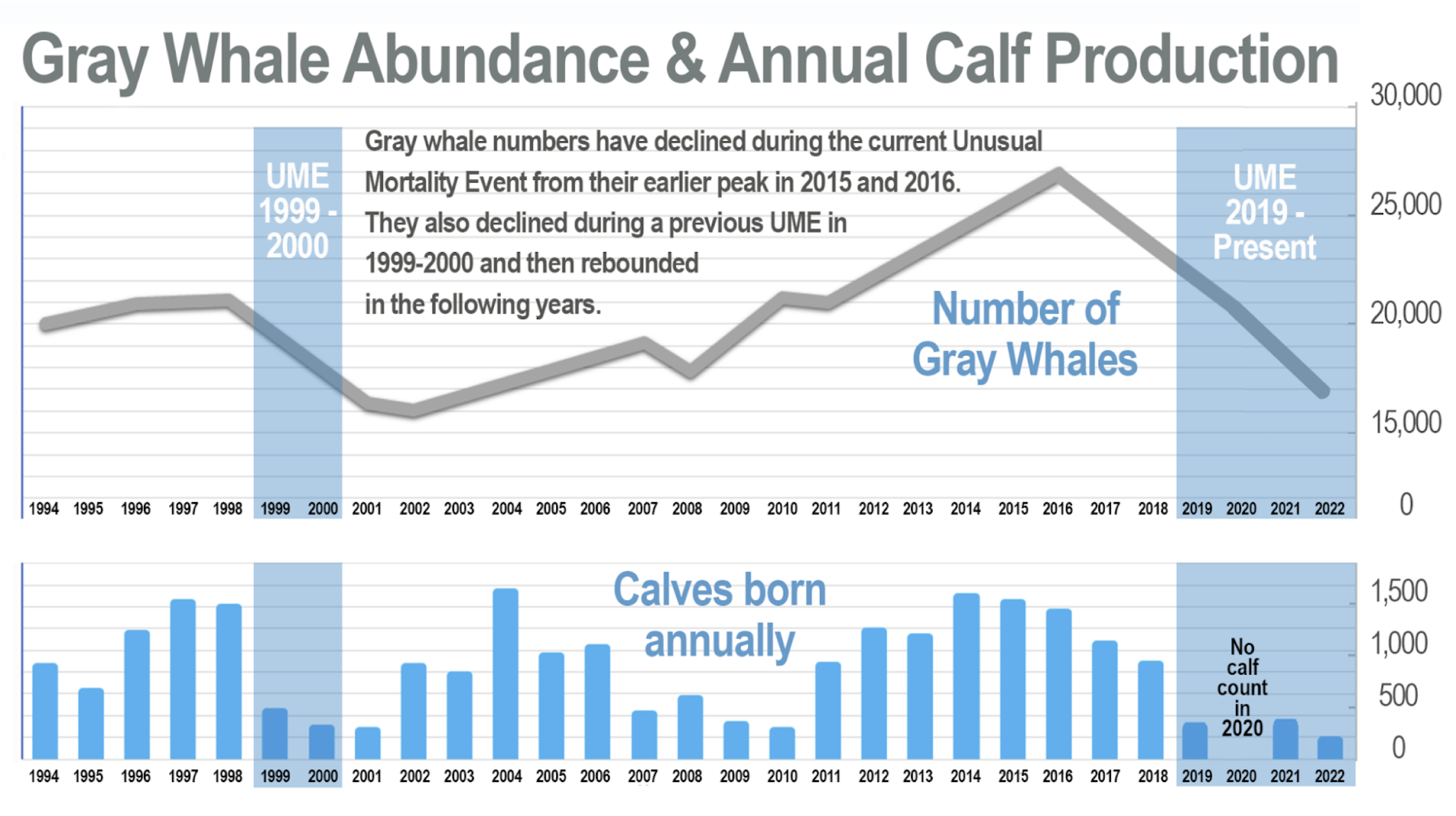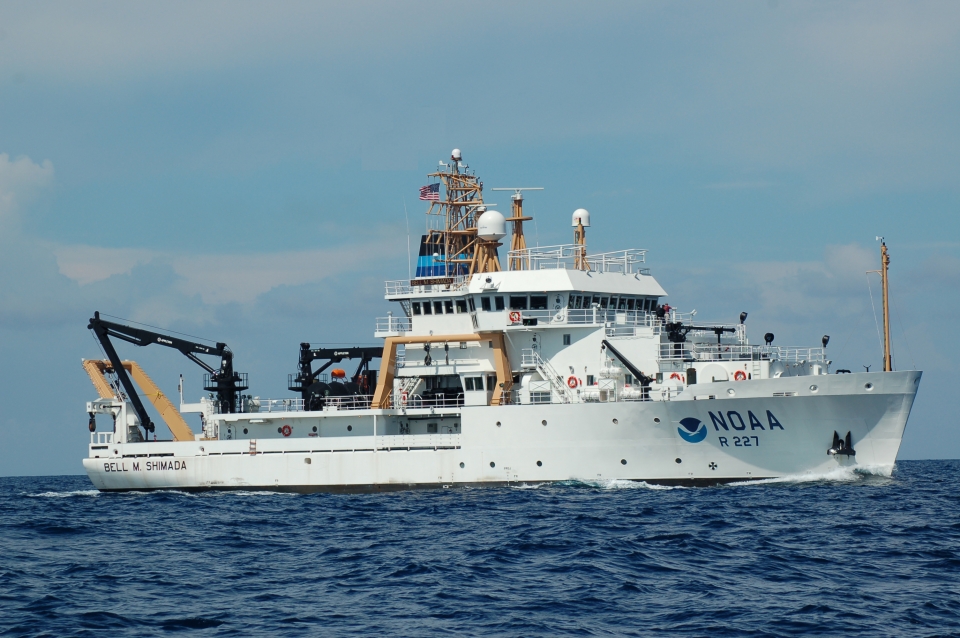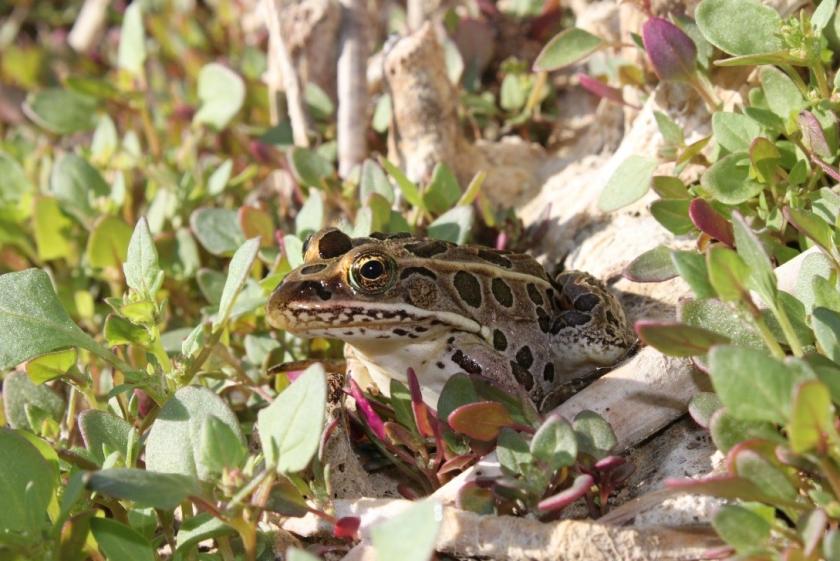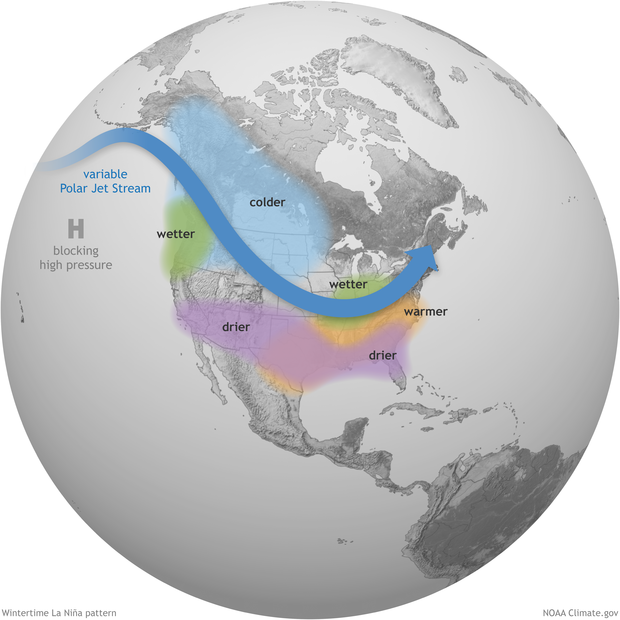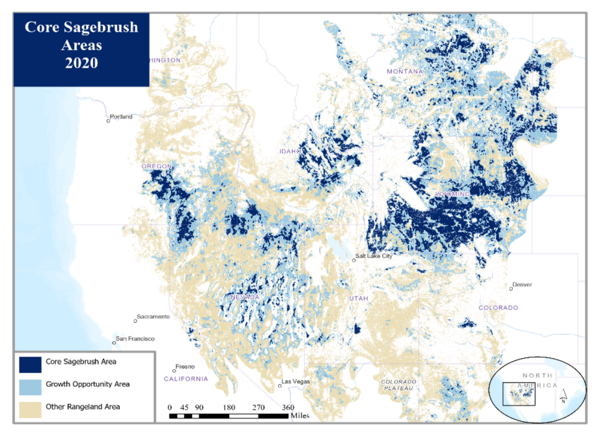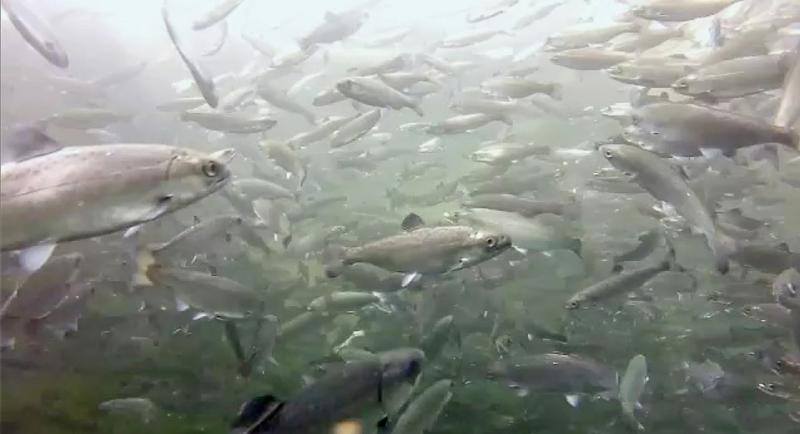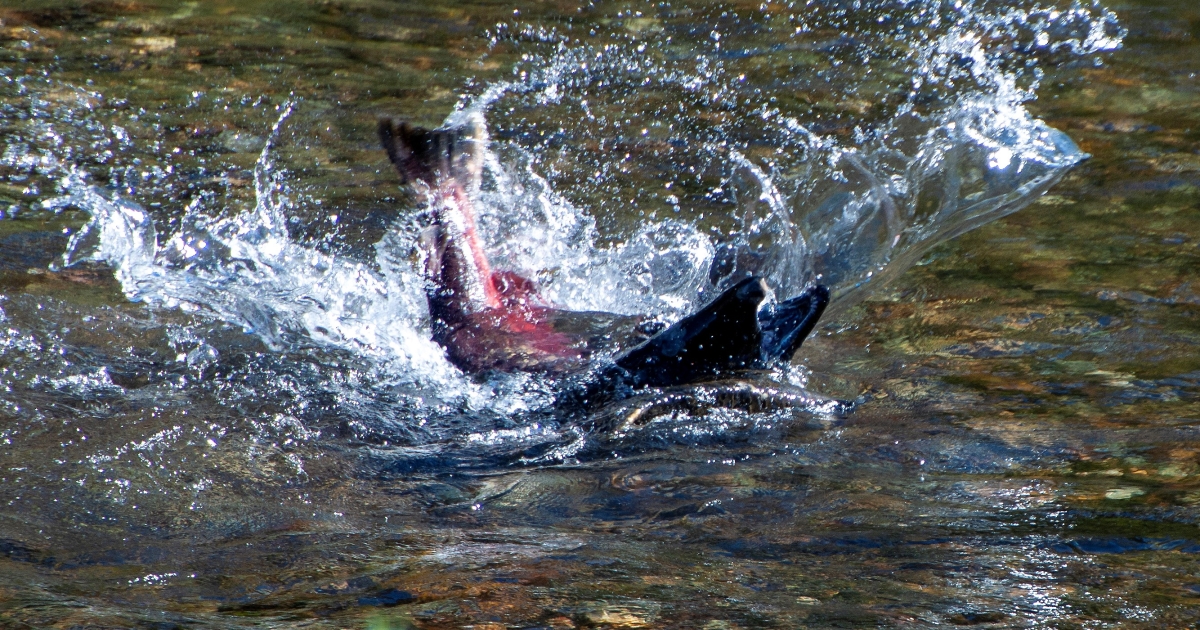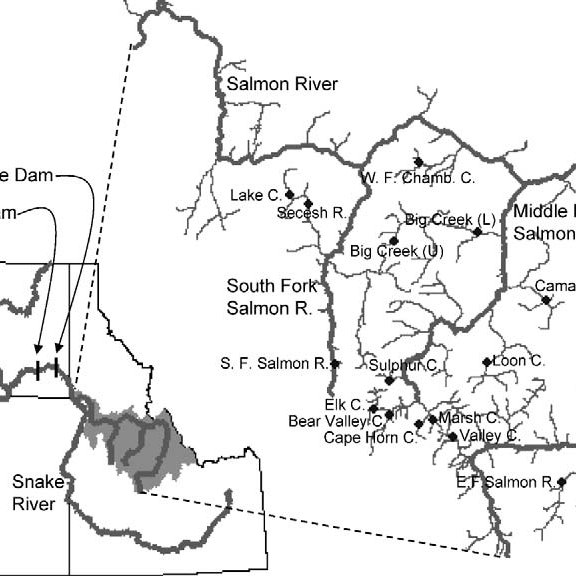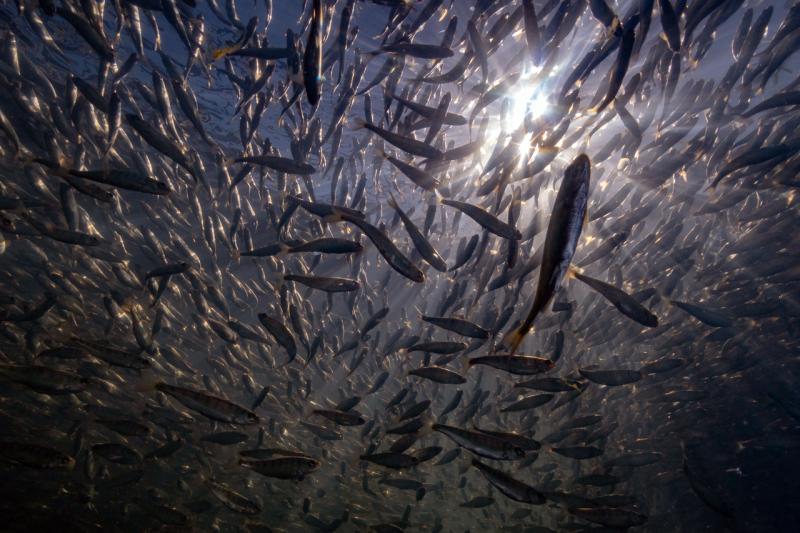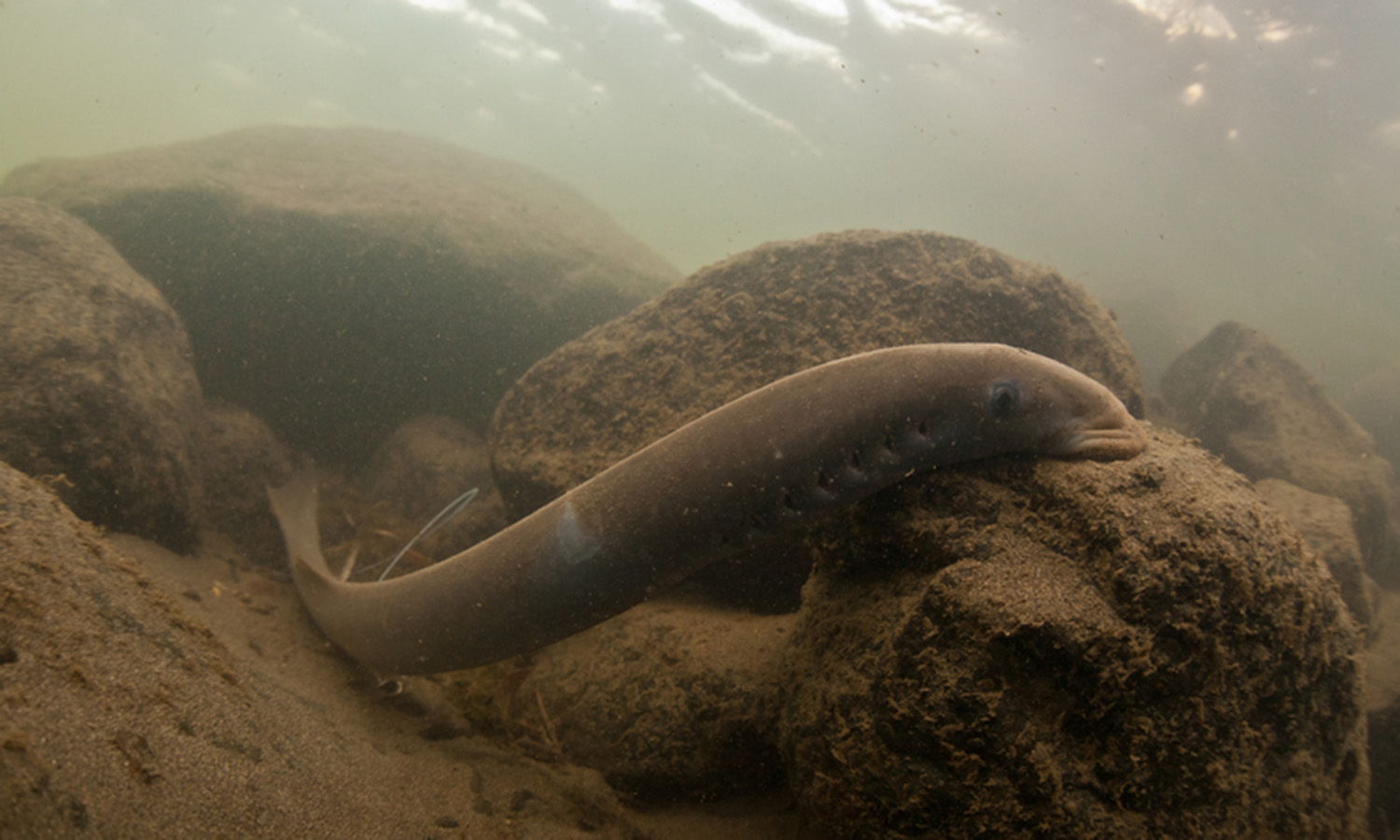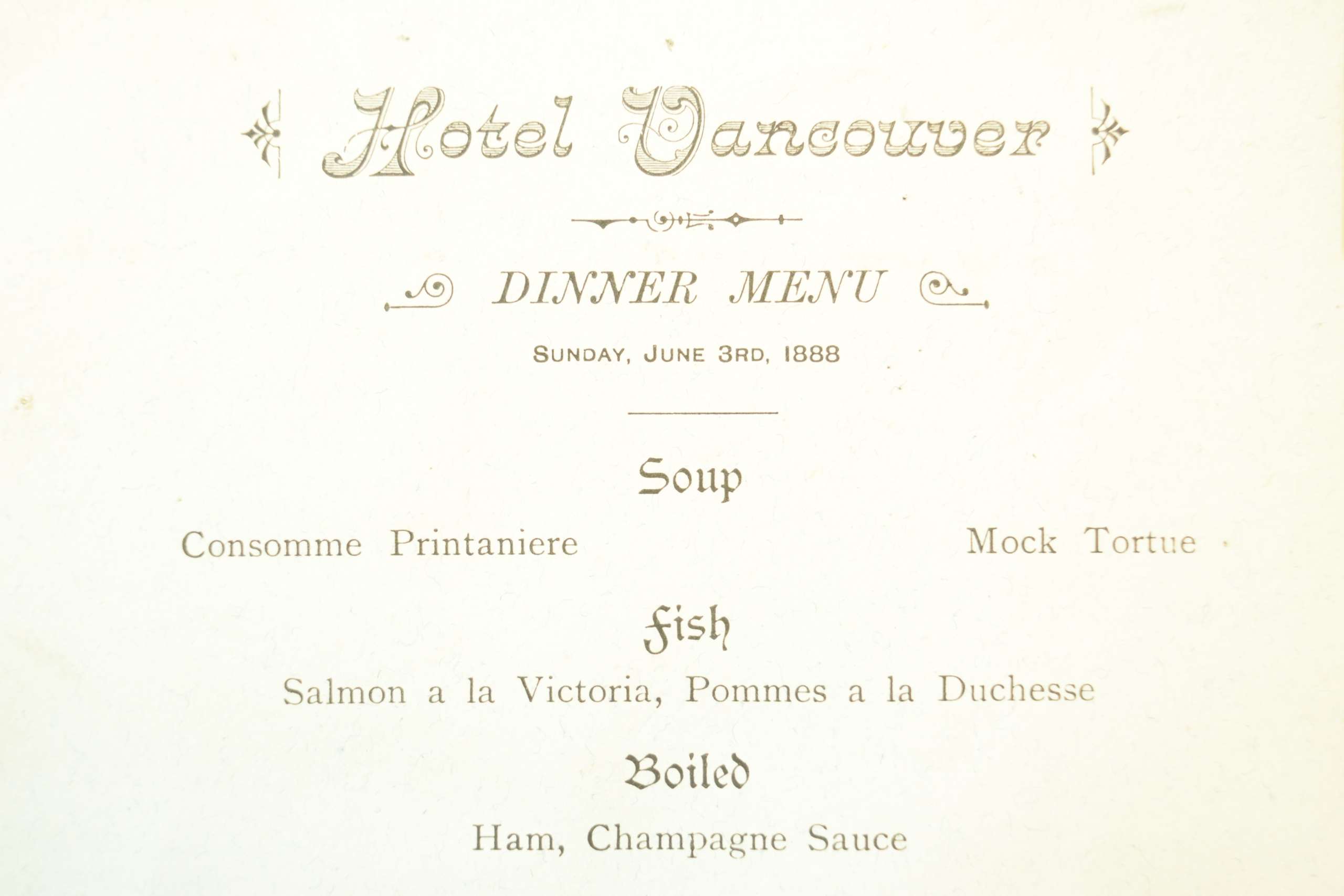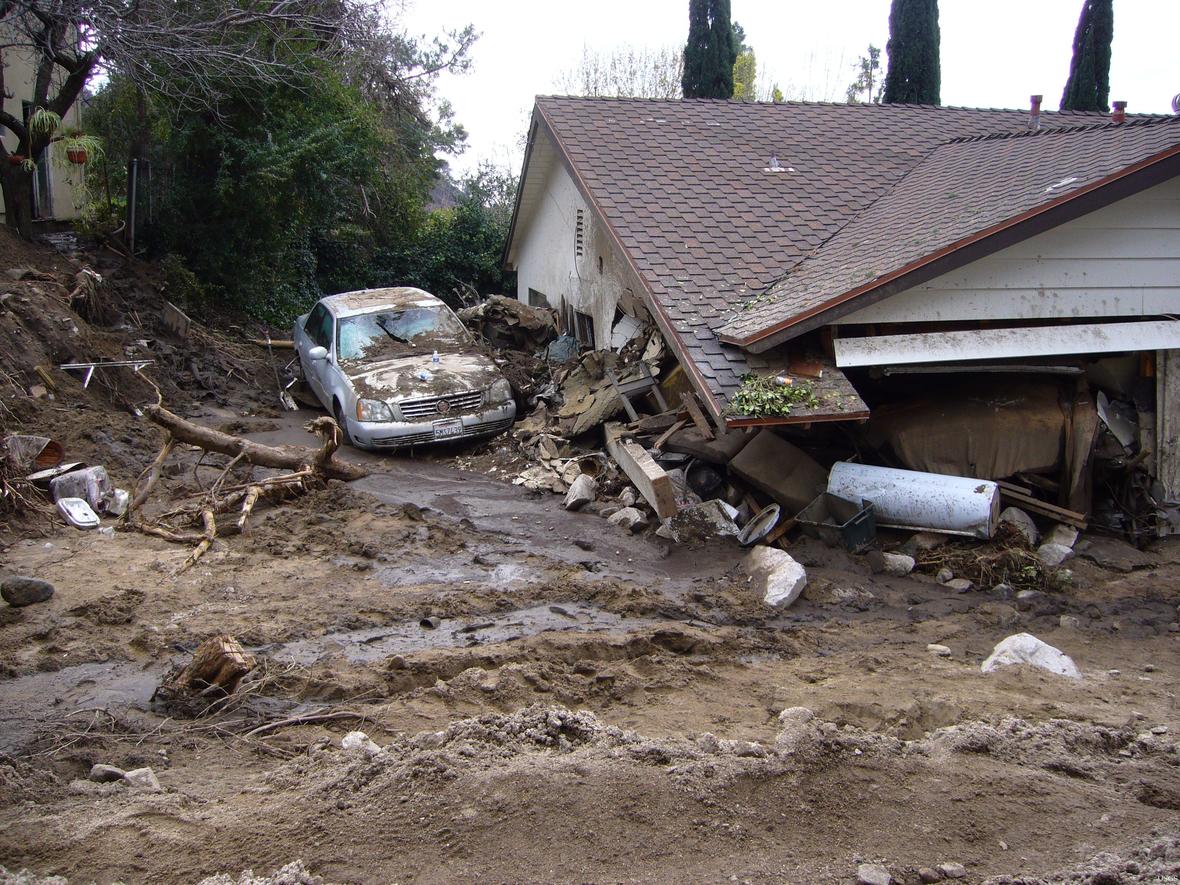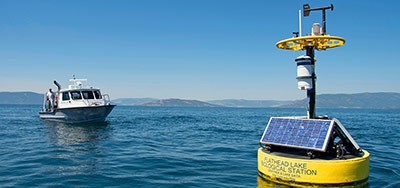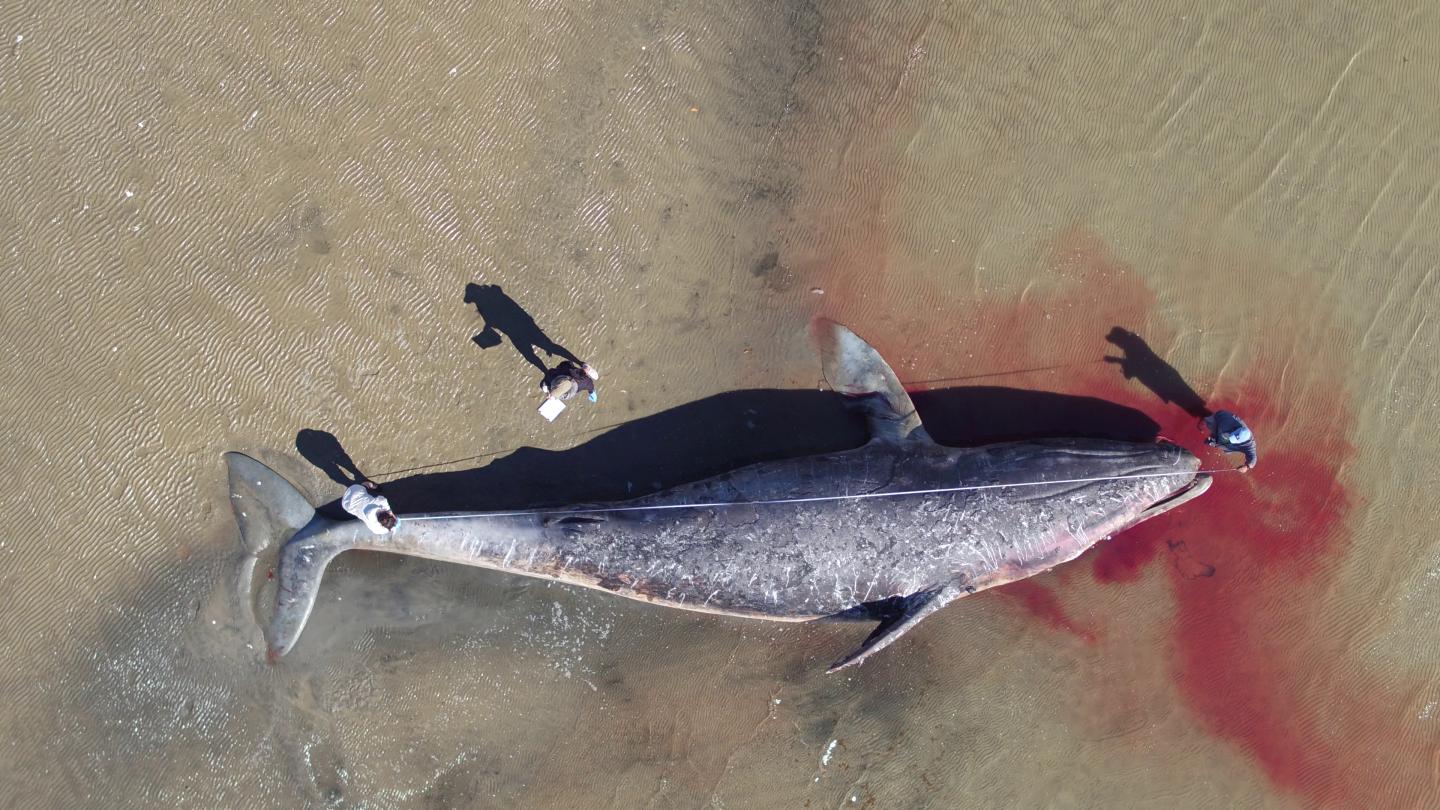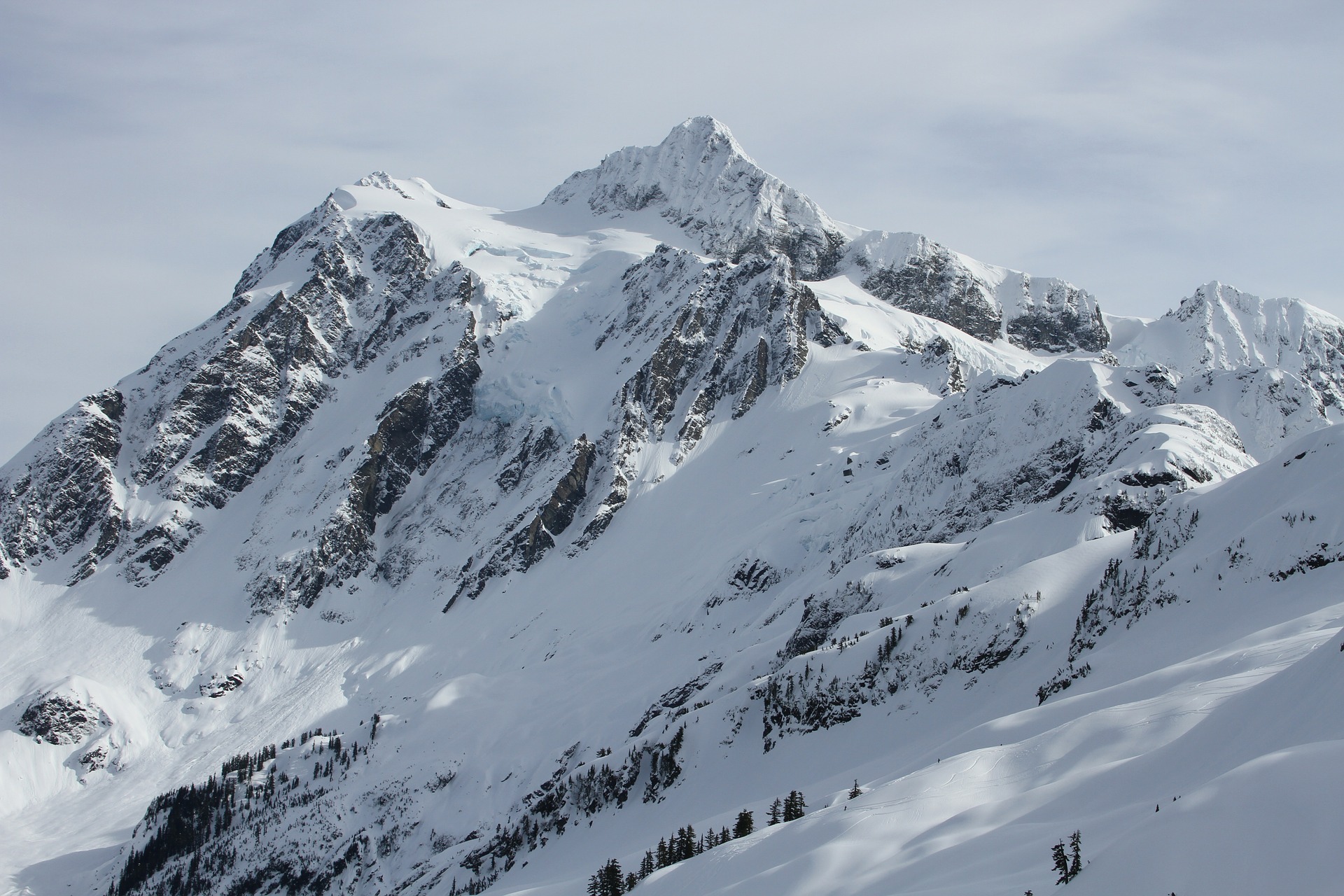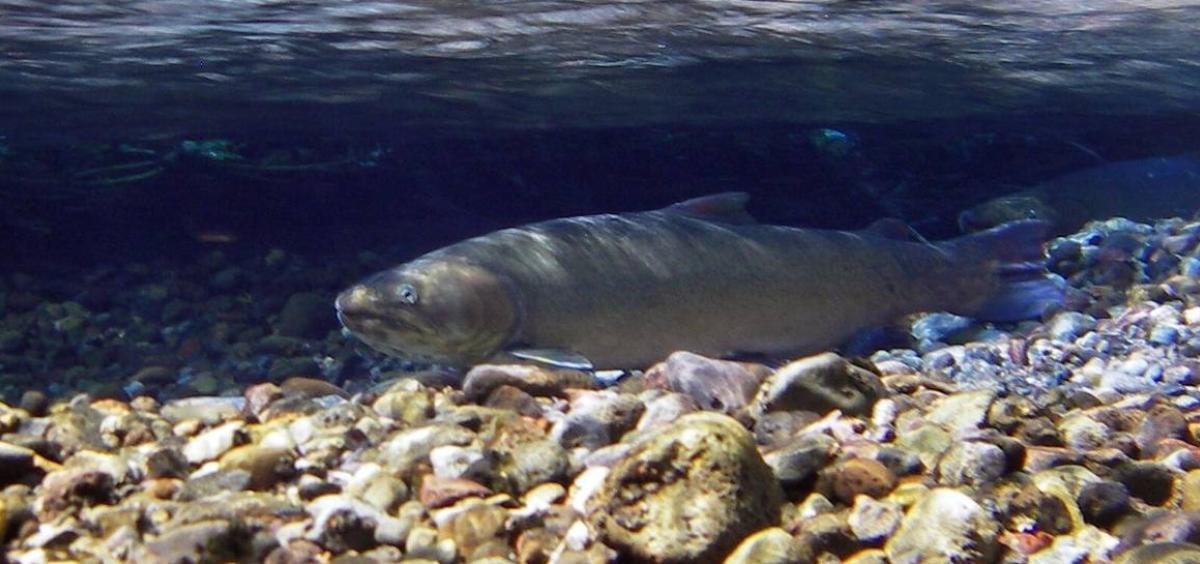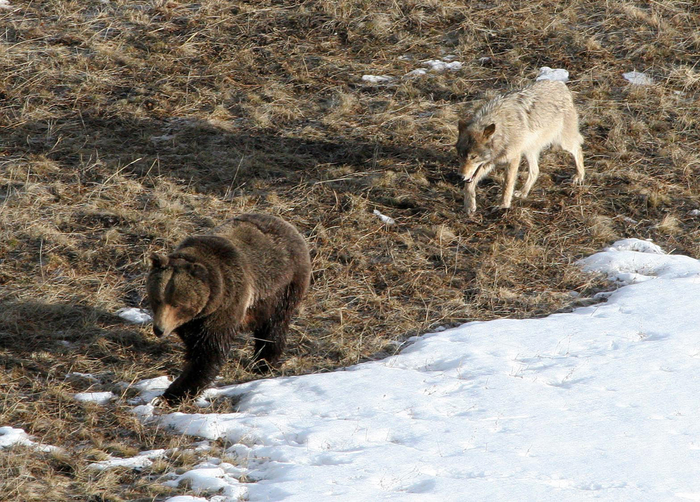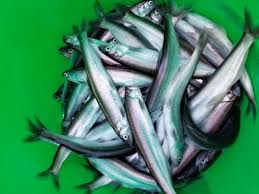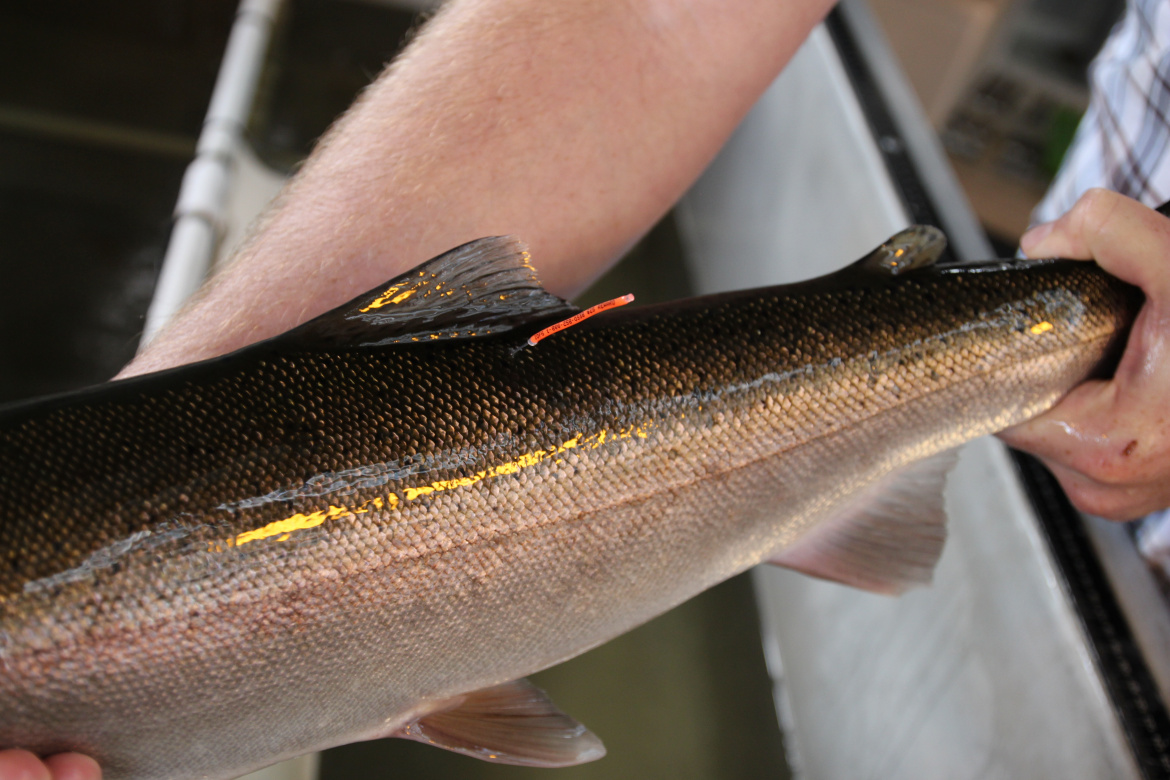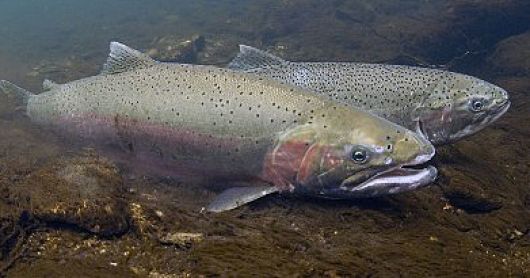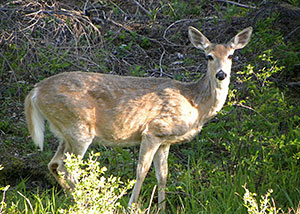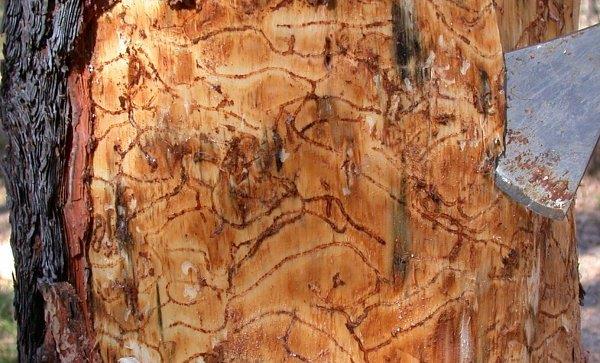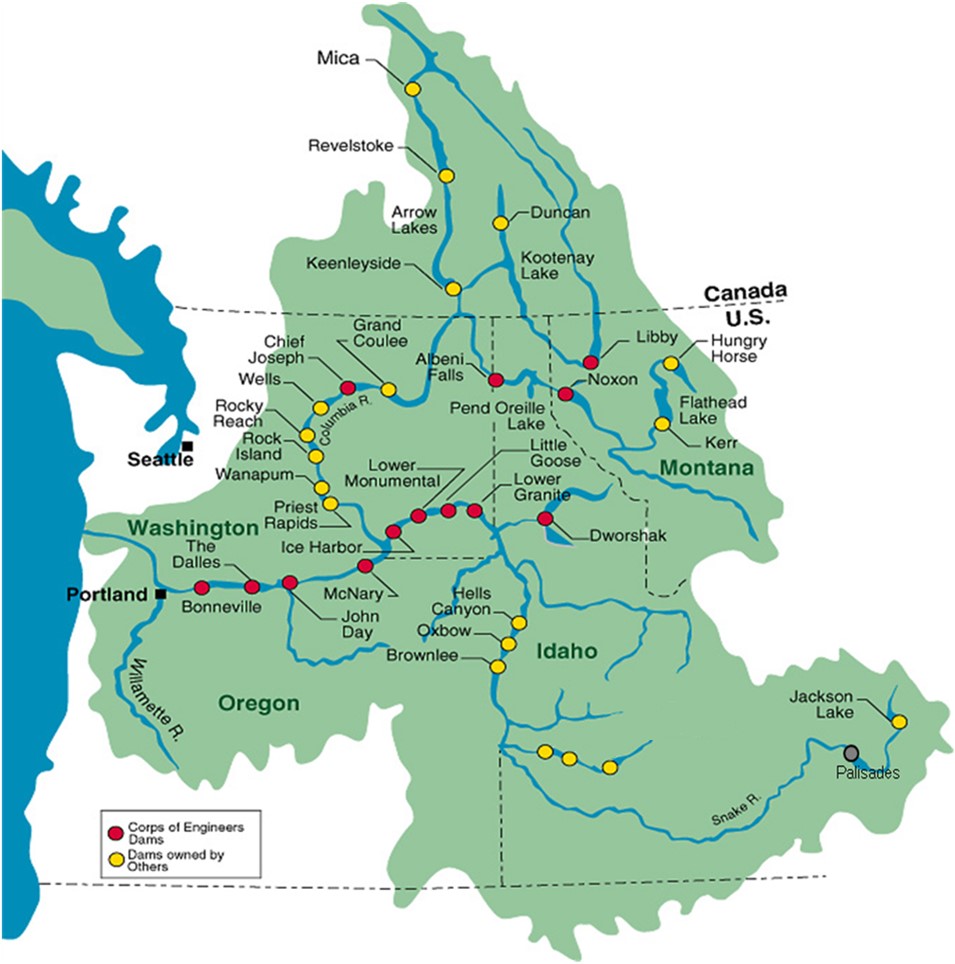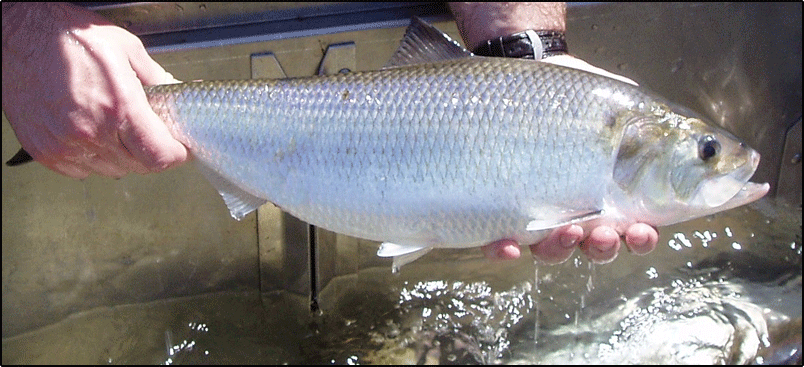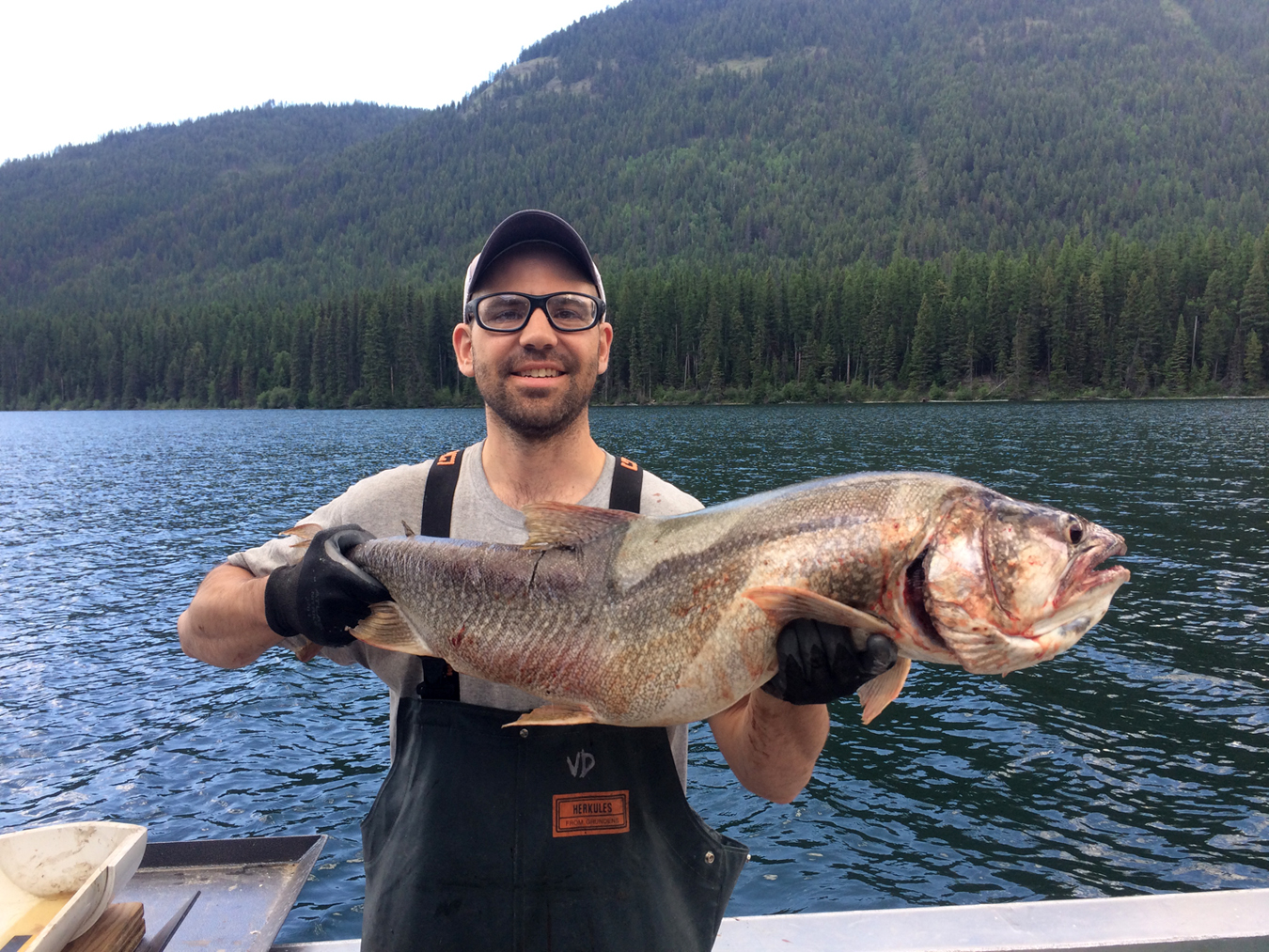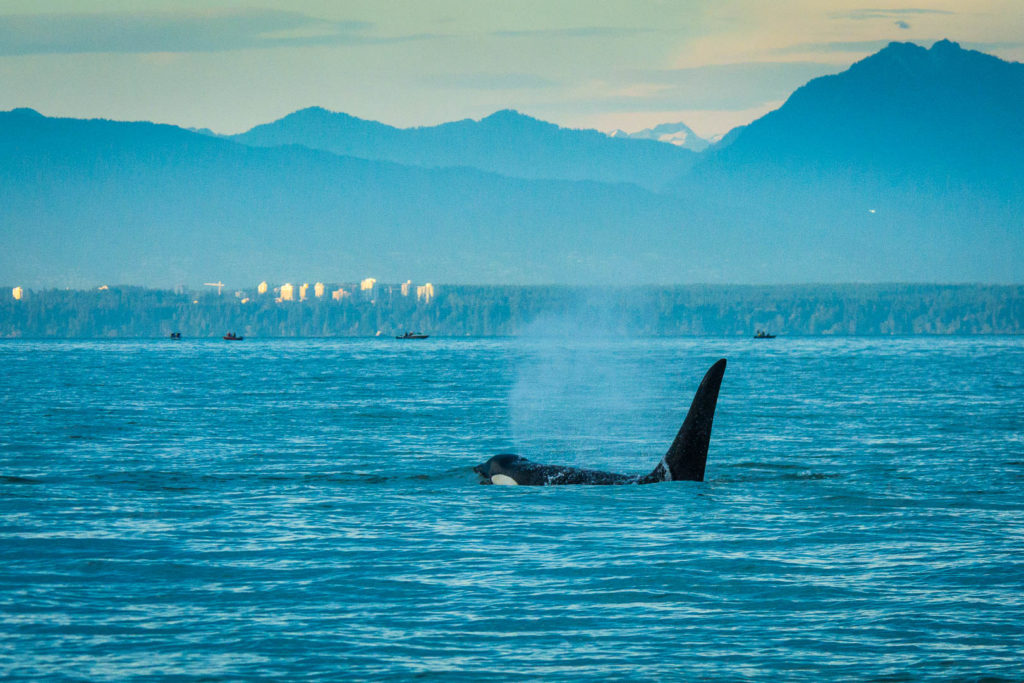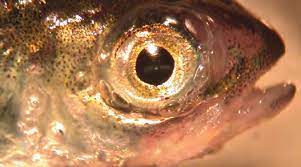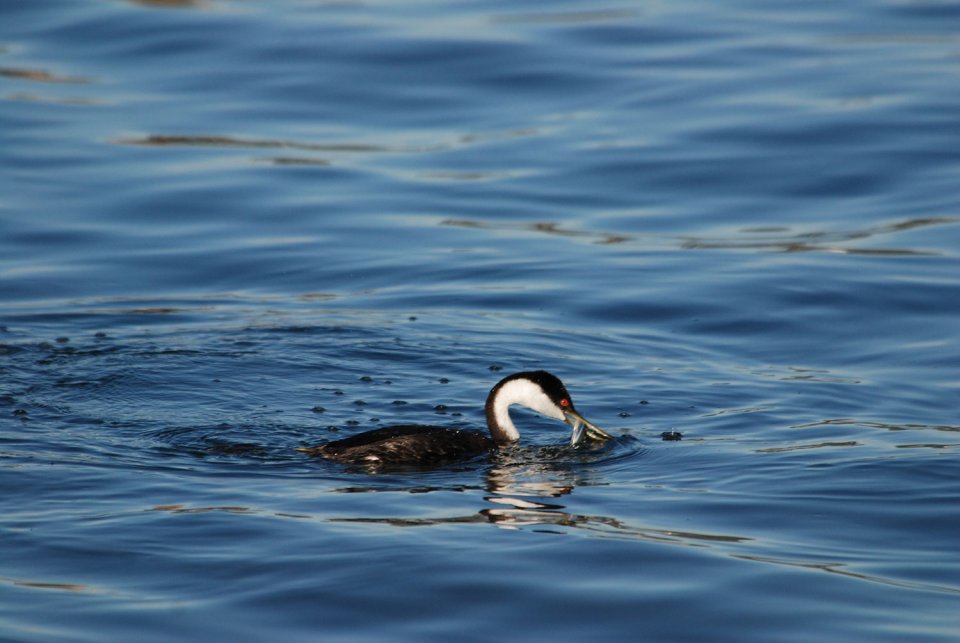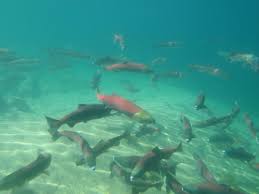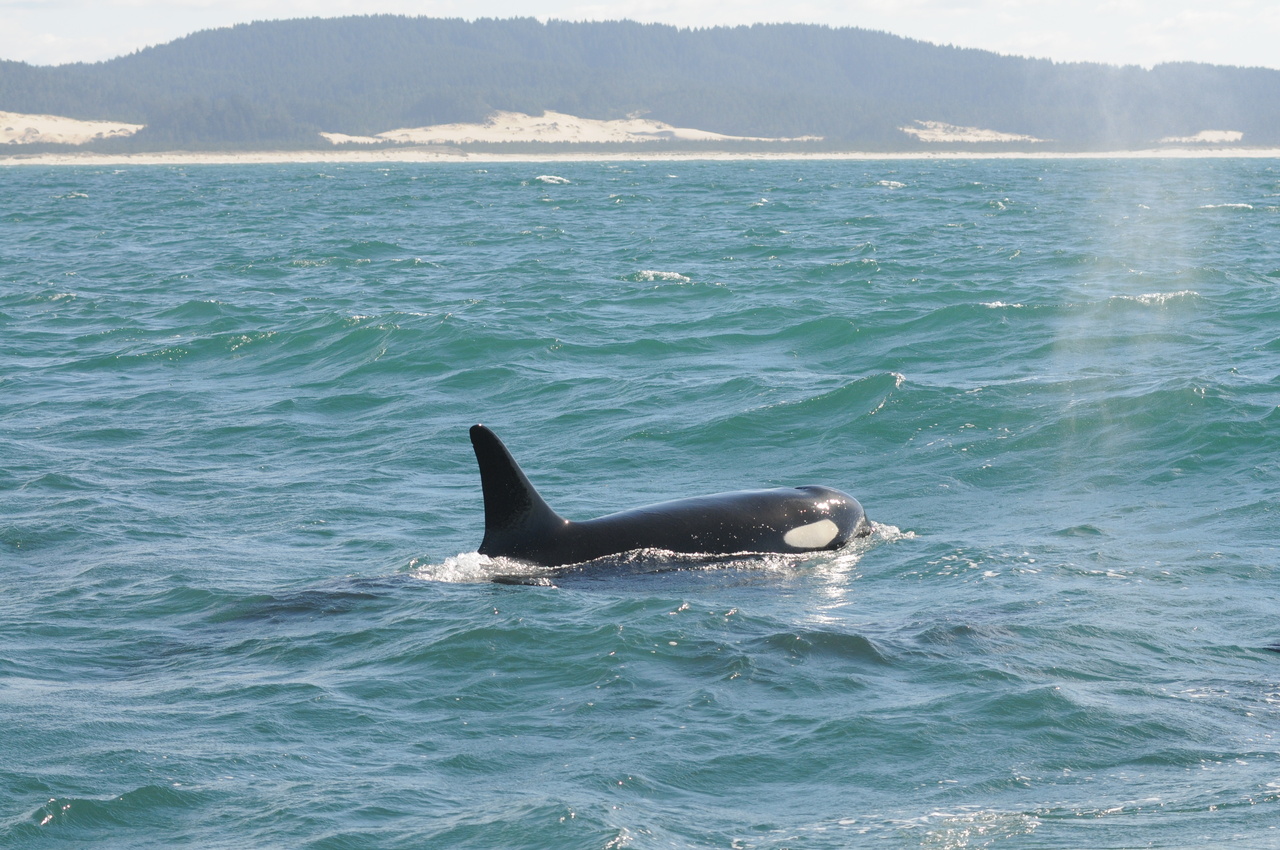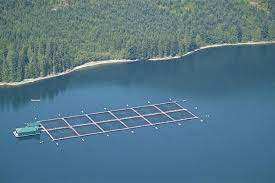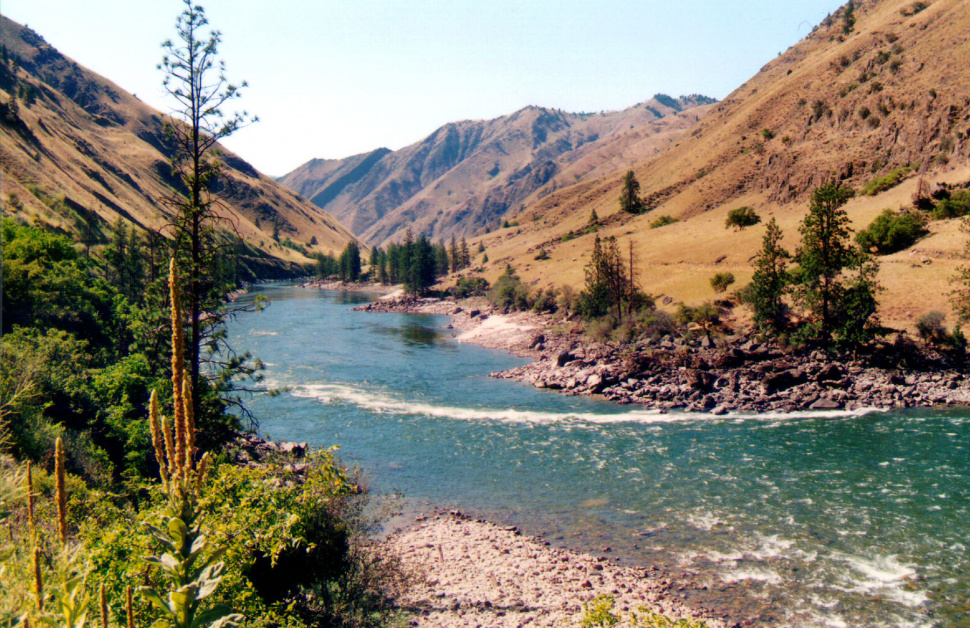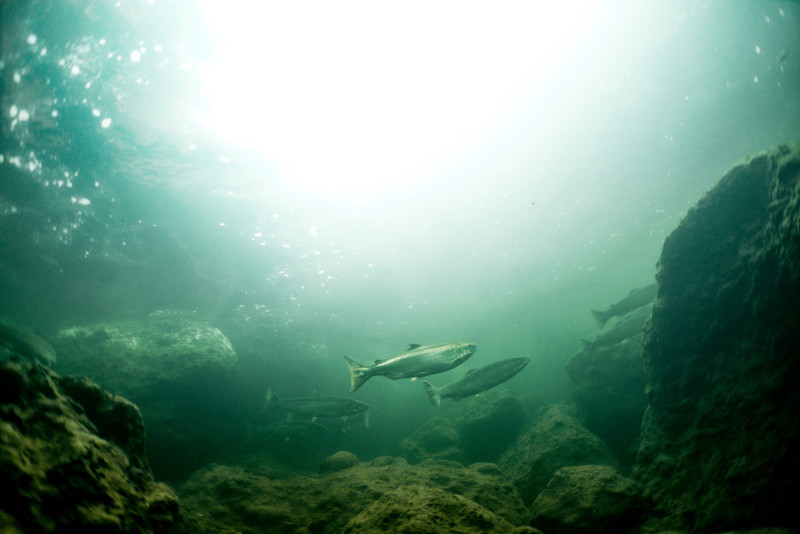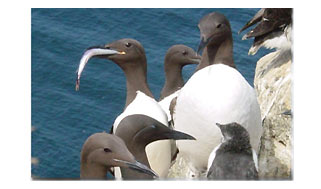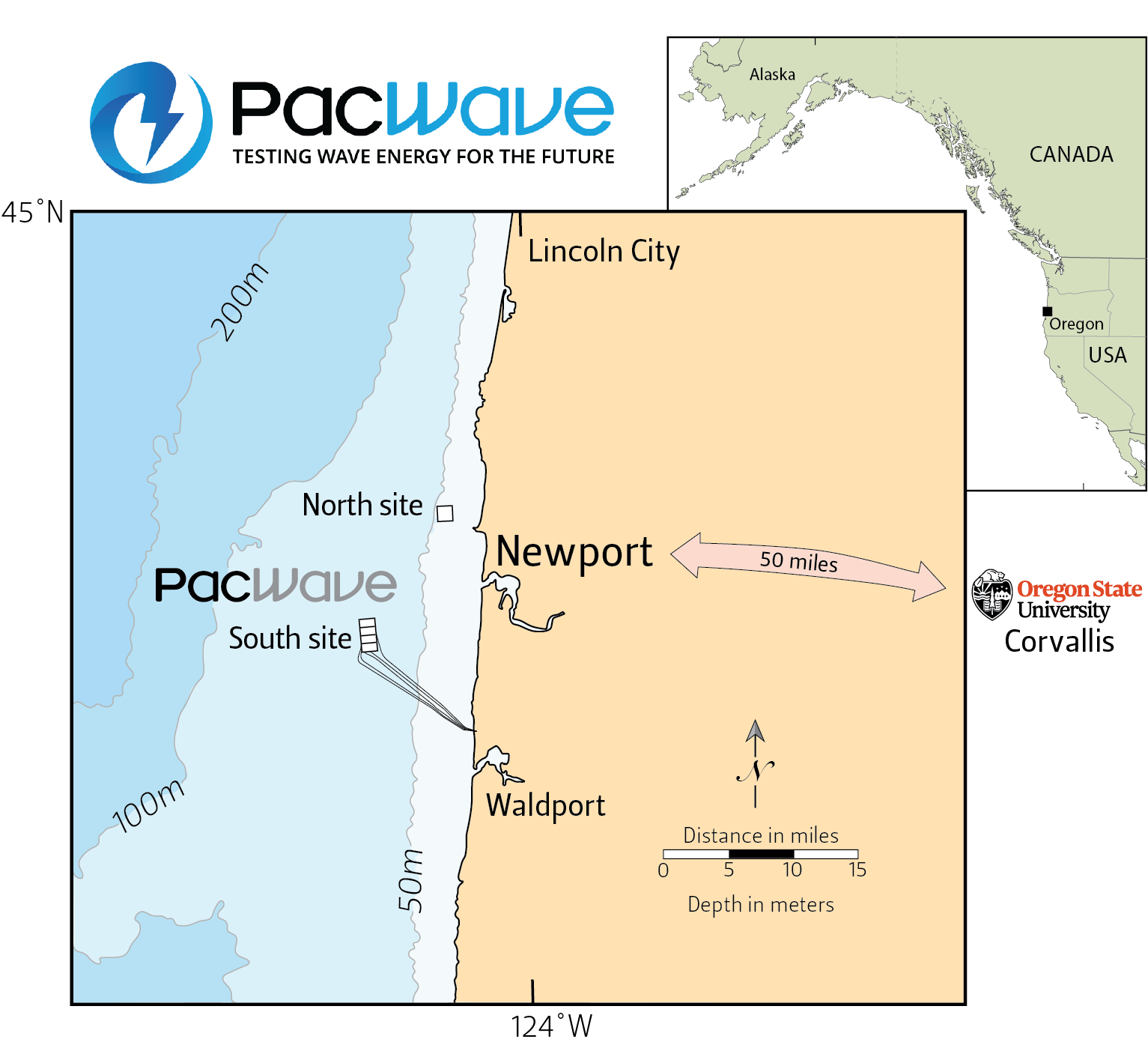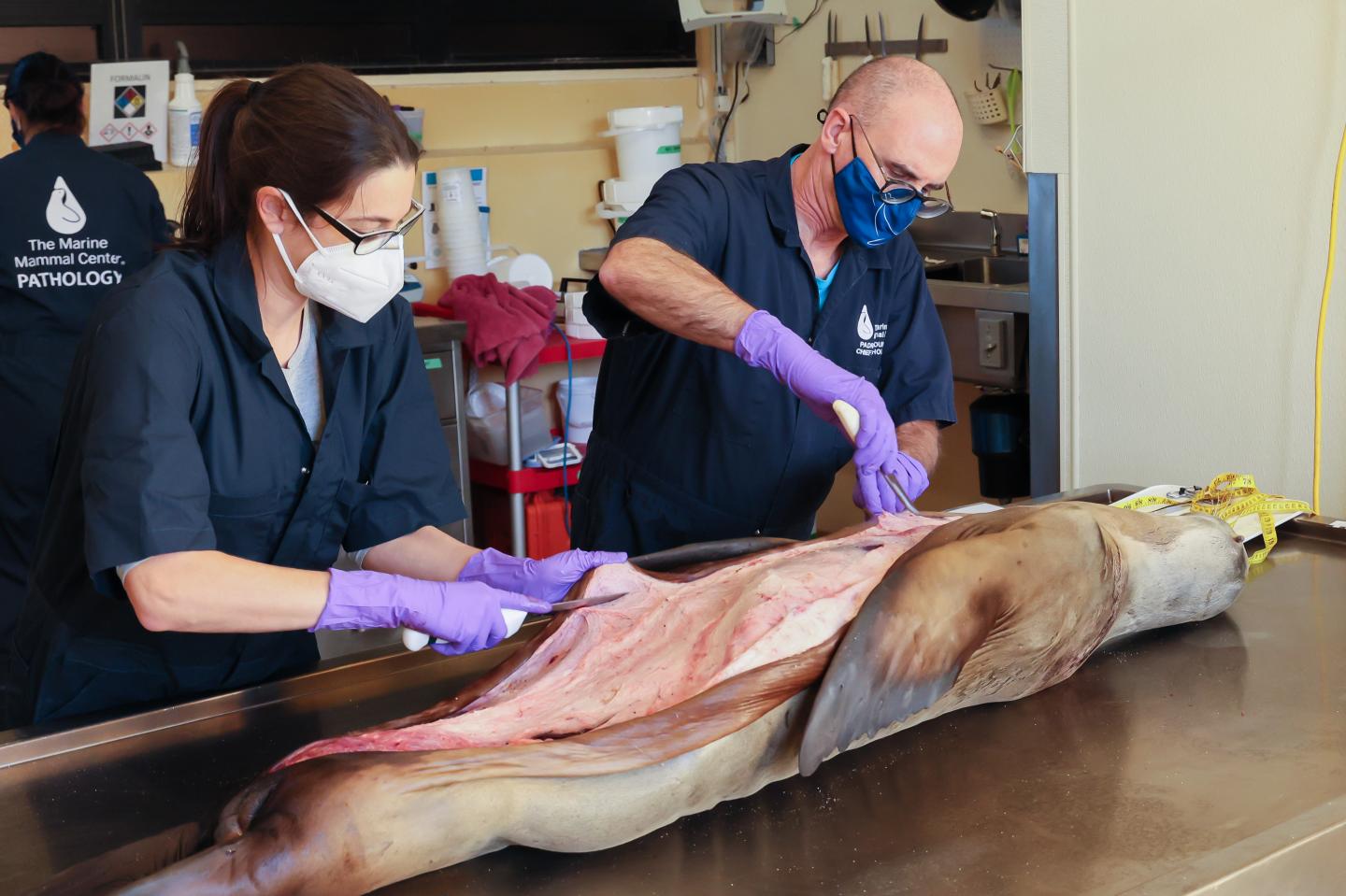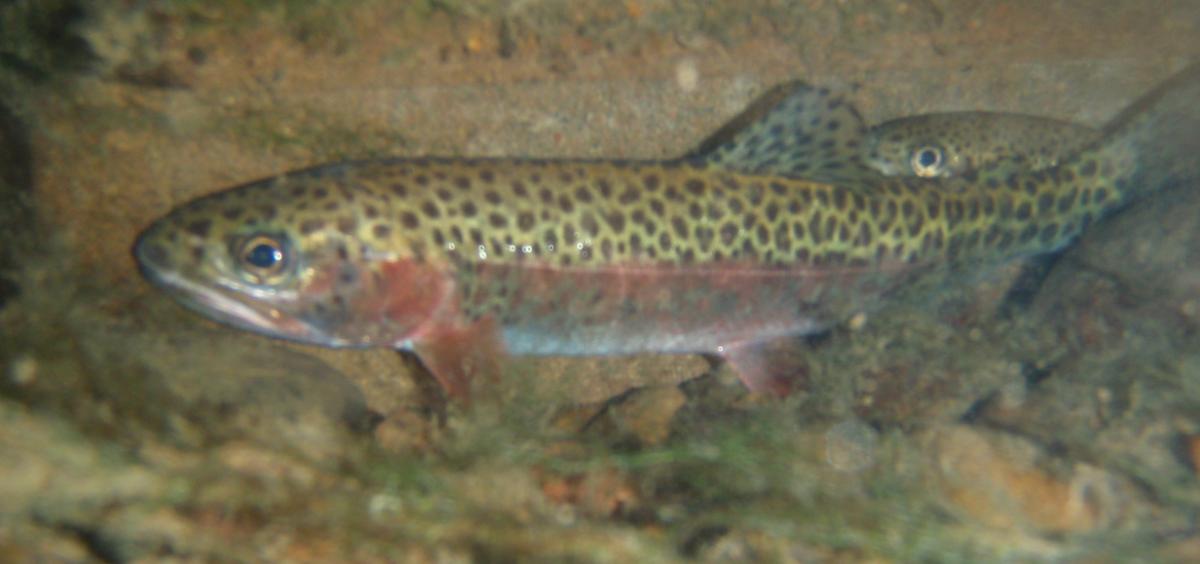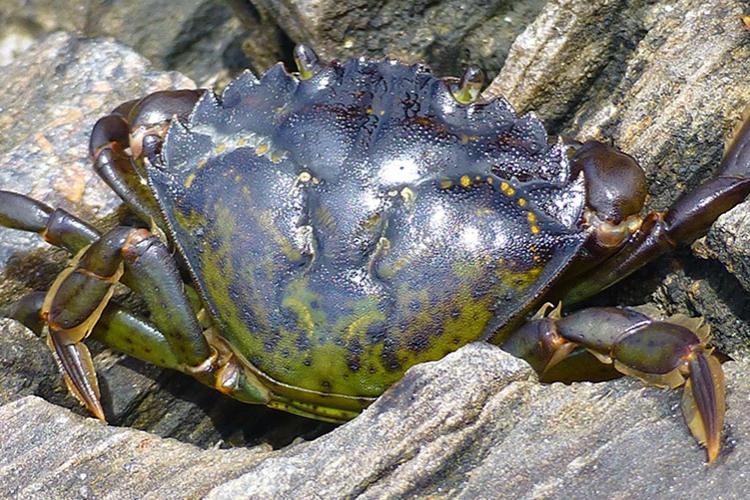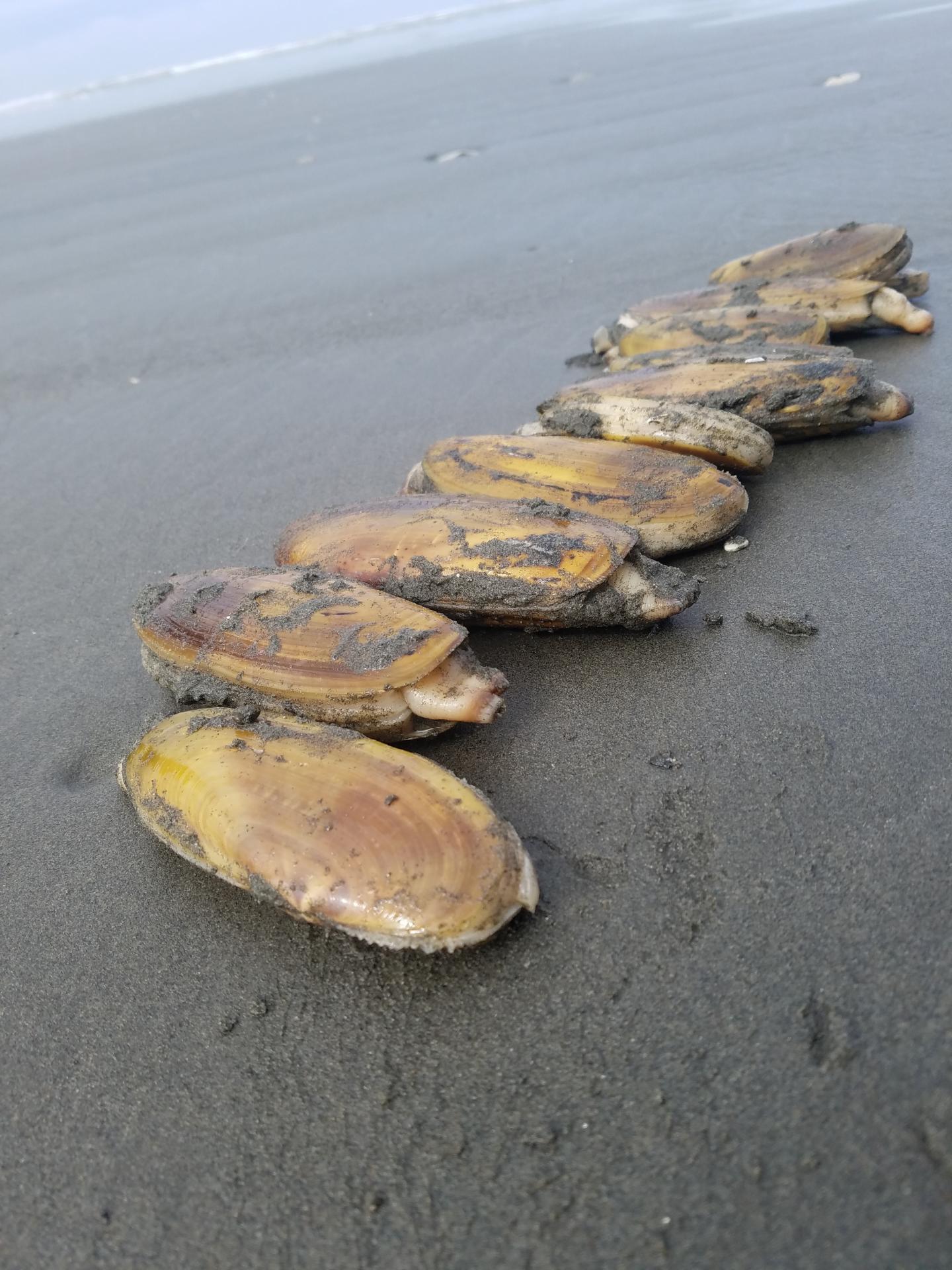WDFW Study Shows Juvenile Chinook Salmon Face Cocktail Of Chemicals In Urban Waters, Dozens Of Contaminants Found In Fish
November 18th, 2025
A new study led by the Washington Department of Fish and Wildlife’s Toxics Biological Observation System unit explores an unseen threat to the Pacific Northwest’s Chinook salmon — chemical contamination.
Washington Working Group Produces Report Assessing Impacts Of Avian Predation On Salmon, Steelhead, Identifies Knowledge Gaps
November 18th, 2025
How and where water bird predation impacts juvenile salmon and steelhead must be considered on a case- by-case basis before taking action against the birds, according to a new report being considered at this week’s Washington Fish and Wildlife Commission meeting.
Scientists Review Long-Time Steelhead Hatchery Program Aimed At ‘Compensating’ For Fish Mortality Due To Lower Snake Dams
October 8th, 2025
A hatchery program designed to compensate for the loss of nearly half the historical abundance of steelhead returning to the Snake River caused by the installation and operation of dams in the 1960s is “highly effective,” according to a recently released review by a panel of scientists. The scientists added that the program practices good science, uses sound actions and is adaptable to the changing conditions in the river.
NOAA Scientists Develop New Method To Measure Toxic Tire Chemical In Marine Life, 6PPD-Quinone Can Kill Coho In Hours
October 8th, 2025
Scientists at NOAA’s Northwest Fisheries Science Center helped pioneer the study of an automobile tire toxin found to kill coho salmon when it runs off highways in stormwater and into streams. Now they have found a way to measure the toxin, 6PPD-quinone, directly in marine life, including fish, shellfish and marine mammals.
Scientists Say Wider Scope Needed When Studying, Restoring Columbia River Estuary, New Performance Measures Needed To Guide Salmon Recovery
September 14th, 2025
A team of scientists has proposed additional guiding principles and performance measures -- based on the full lifecycles of salmon and steelhead -- that they believe will help with Columbia River estuary restoration.
Coho Urban Runoff Mortality Syndrome: WSU Research Team Discovers How Tire Chemical 6PPD Kills Coho, Step To Finding Alternative
August 19th, 2025
For years, scientists at Washington State University’s Puyallup Research & Extension Center have been working to untangle a mystery: Why do coho salmon in Puget Sound creeks seem to suffocate after rainstorms — rising to the surface, gaping, and swimming in circles before dying?
How Much Habitat Restoration Needed To Produce ‘Biological Meaningful Results’? Scientists Review 40 Years Of Projects Under Council Program
July 26th, 2025
In a review of 40 years of habitat restoration projects, a panel of fisheries scientists concluded that projects that remove barriers to salmon and steelhead, augment stream flows and add wood to give streams structure would likely achieve what they set out to do within a short period of time.
New WDFW Study Shows Links Between Changing Ocean Conditions, Declining Survival Of Coastal Winter Steelhead
June 6th, 2025
New Washington Department of Fish and Wildlife research sheds light on the link between a changing climate and ocean and ecosystem conditions; and winter steelhead survival on the Washington coast.
Spring Runoff Older Than You Think: Hydrologists Show Mountain Streamflow Old Snowmelt On Years-Long Underground Journey
May 14th, 2025
Growing communities and extensive agriculture throughout the Western United States rely on meltwater that spills out of snow-capped mountains every spring. The models for predicting the amount of this streamflow available each year have long assumed that a small fraction of snowmelt each year enters shallow soil, with the remainder rapidly exiting in rivers and creeks.
New Research Shows Juvenile Salmon Swim Downriver To Ocean, Then Back Up Other Rivers; ‘Salmon Still Surprise Us’
May 5th, 2025
Stretches of coasts and their rivers form enormous salmon nurseries for the exploring juveniles, the scientists said. The researchers documented coho salmon, steelhead, and cutthroat trout using coastal rivers separated by salt water, and suspect other species may do the same.
Study Shows How Record Abundance Of Pink Salmon In North Pacific Creating Adverse Impacts On Puget Sound Chinook, Killer Whales
February 25th, 2025
Since the 1990s, the decline in numbers of southern resident killer whales in Puget Sound has followed a biennial pattern; births decline and deaths rise in even-numbered years. That biennial pattern matches the decline of Chinook salmon spawner abundance while abundance of pink salmon in the North Pacific and in Puget Sound rivers has risen, according to a study published this month.
Voracious Juvenile Sablefish Spreading Into Warming Northwest Coastal Waters Compete With Young Salmon For Prey
January 20th, 2025
There is a new mouth to feed in the coastal waters of the Northwest where juvenile salmon first enter the ocean, and it’s a hungry one.
Agencies’ Draft ‘Lower Snake River Water Supply Replacement Study’ Out For Review, Four Reservoirs Irrigate Over 55,000 Acres
January 19th, 2025
A federal agency and a state agency have jointly completed a study on the impacts that breaching the four lower Snake River dams would have on water supplies and irrigation.
Latest Oregon Climate Assessment: Precipitation Below Average 18 Of Last 24 Years, Snowfall To Decrease By 50 Percent By 2100
January 10th, 2025
Oregon is becoming warmer and more prone to drought and will see less snow due to climate change, but people and businesses are also adapting to the challenges of a warming planet, the latest Oregon Climate Assessment indicates.
Study Details Salmonid Response To Columbia River Basin Habitat Restoration Projects, Shows Large Benefits For Coho, Steelhead
January 10th, 2025
Floodplain restoration projects designed to improve instream habitat conditions for anadromous fish resulted in an increase in the numbers of juvenile salmon and steelhead, according to a recent study that examined segments of 17 habitat restoration projects in the Columbia River basin.
This Year’s Ocean Indicators Show Low Prey Numbers For Pacific Juvenile Salmon, Suggest Moderate-To-Poor Conditions For Young Salmon
December 15th, 2024
How did climate change impact ocean waters off the U.S. West Coast this past year? What does that tell us about the growth and survival of juvenile salmon for the years to come?
2024 Survival Rate Of Migrating Juvenile Salmon In Columbia/Snake Rivers? Hard To Say With Yet Another Year Of Low Detection, Tagging Rates
November 26th, 2024
Increased spill levels at Snake and Columbia river dams, along with lower water flow in the rivers, hampered the ability of scientists to tag and detect juvenile salmon and steelhead as they migrated downstream in 2024.
EPA Gives Notice Of Developing New Rule To Protect Salmon, Steelhead From Lethal Tire Chemical; ‘Unreasonable Threat To Water, Fish Resources’
November 25th, 2024
The U.S. Environmental Protection Agency is acting on its commitment to three Northwest tribes by issuing an advance notice of proposed rulemaking (ANPR) to collect information on the risks of 6PPD quinone in tires, known to be toxic in stormwater runoff to coho salmon and steelhead in Puget Sound.
Groundwater Declines: Oregon Study Links Farm Irrigation Decisions, Groundwater Levels To Find Potential Solutions
November 25th, 2024
Sustainable rates of groundwater withdrawal in southeast Oregon’s Harney Basin were surpassed 20 years prior to the time declining groundwater levels were generally recognized, a new analysis found.
How Do Lakes Contribute To Water Cycle In Warming World? Study Says Implications For Freezing Later, Melting Earlier
November 1st, 2024
The world’s freshwater lakes are freezing over for shorter periods of time due to climate change. This shift has major implications for human safety, as well as water quality, biodiversity, and global nutrient cycles, according to a new analysis from an international team of researchers.
Oregon Researchers To Study Whether Feeding Seaweed To Cattle Grazing In Sagebrush Ecosystems Reduces Methane Emissions
November 1st, 2024
Oregon State University researchers have received a $1 million grant to study the impact of adding seaweed to the diets of beef cattle as a way to reduce greenhouse gas emissions.
‘We Are On The Brink Of Irreversible Climate Disaster:’ OSU Report Says Of 35 Planetary Vital Signs, 25 At Record Extremes
October 18th, 2024
An international coalition led by Oregon State University scientists concludes in its annual report published this month that the Earth’s worsening vital signs indicate a “critical and unpredictable new phase of the climate crisis” and that “decisive action is needed, and fast.”
Independent Scientists Review NPCC’s Basin Fish/Wildlife Program, Recommend More Comprehensive Climate Change Strategy
October 8th, 2024
In a recent review, a panel of scientists said the Northwest Power and Conservation Council’s Fish and Wildlife Program for the Columbia River basin is still changing and progressing after 40 years of implementation, but will need further updates and improvements, including a better strategy for incorporating climate change into the Program and a more comprehensive analysis of the outcome of removing the four lower Snake River dams.
Chinook, Steelhead Return Forecasts Rise Again While Coho Booming; Coho, Steelhead Passage At Willamette Falls Way Up
September 27th, 2024
Oregon and Washington opened the entire mainstem Columbia River to fall Chinook and coho salmon fishing from Buoy 10 to the Oregon and Washington state border last week. The change by the two-state Columbia River Compact came at its Sept. 18 hearing and was based on an increase in expected fall Chinook returns, as well as higher than average returns of coho.
Marbled Murrelet Study Shows How Artificial Intelligence Can Enhance Monitoring Secretive Species
May 31st, 2024
Artificial intelligence analysis of data gathered by acoustic recording devices is a promising new tool for monitoring the marbled murrelet and other secretive, hard-to-study species, research by Oregon State University and the U.S. Forest Service has shown.
DDT Pollutants Found In Deep Sea Fish, Sediments Off CA Coast; Banned Pesticide Threat To Marine Life, Human Health?
May 17th, 2024
In the 1940s and 1950s, the ocean off the coast of Los Angeles was a dumping ground for the nation’s largest manufacturer of the pesticide DDT – a chemical now known to harm humans and wildlife. Due to the stubborn chemistry of DDT and its toxic breakdown products, this pollution continues to plague L.A.’s coastal waters more than half a century later.
Status Report: Though Some SW Washington Steelhead, Salmon Populations Under ESA Show Improved Numbers Since Listing, None Anywhere Near Recovery
April 18th, 2024
The status of southwest Washington salmon and steelhead listed under the federal Endangered Species Act is generally stable, although none of these fish populations are close to meeting recovery goals, says a recent report by the Lower Columbia Fish Recovery Board and the Washington Department of Fish and Wildlife.
Imperiled Steelhead Migrating Up Columbia/Snake River Show Lowest Survival Bonneville Dam To McNary Dam, Miss Survival Targets
April 18th, 2024
Asotin Creek adult summer steelhead survival is at its lowest in the Bonneville Dam pool as the fish migrate upstream to the Snake River tributary, according to a presentation last week that focused on survival of steelhead listed as threatened under the federal Endangered Species Act. Temperature and harvest (catch and release mortalities) are cited as the main reasons for steelhead struggles in the Bonneville Pool.
Fish Family Tree: McKenzie River Study Shows Reproductive Success For First Generation, Wild-Born Descendants Of Hatchery Chinook Salmon
April 18th, 2024
Researchers who created “family trees” for nearly 10,000 fish found that first-generation, wild-born descendants of hatchery-origin Chinook salmon in an Oregon river show improved fitness.
For First Time, Oregon Satellite Tagging Winter Steelhead ‘Kelts’ To See Where They Go In The Ocean; Rarely Encountered In Commercial Fisheries
April 5th, 2024
Oregon Department of Fish and Wildlife biologists in southern Oregon want to know where steelhead go in the ocean after they spawned in the rivers.
Dam-Sheds: Tribes Report Calculates Loss Of Spring/Summer Chinook On Upper Snake River Due To Dams At 1.4 Million Fish
March 22nd, 2024
An estimated 1.4 million spring/summer Chinook salmon were lost after multiple dams were constructed on the upper Snake River, according to a loss assessment recently completed by the Upper Snake River Tribes Foundation.
Ocean Conditions Key For Columbia River Basin Salmon/Steelhead Survival, NOAA Researchers Say About Average In 2023
March 22nd, 2024
urvival of Columbia River basin salmon and steelhead is poor – in most cases less than 2 percent smolt to adult returns – compared to a Northwest Power and Conservation SARs goal of 6 percent, according to a presentation at the Council’s March meeting.
Strong, Ocean-Warming El Nino Has Arrived But Researchers Say California Current Ecosystem Should Hold Up Better Than Last Time (2015)
March 22nd, 2024
The California Current ecosystem is a vital ocean system stretching from Washington to Baja California. It is facing a strong 2024 El Niño event, a cyclical warming of the Pacific Ocean. However, the latest information from NOAA’s Integrated Ecosystem Assessment program suggests the ecosystem is better positioned to weather these changing conditions than previous El Niño events.
OSU, NOAA Publish First Study Examining Marine Heat Wave Impacts On Entire Ocean Ecosystem In California Current, Food Webs Disrupted
March 22nd, 2024
Marine heat waves in the northeast Pacific Ocean create ongoing and complex disruptions of the ocean food web that may benefit some species but threaten the future of many others, a new study has shown.
Oregon Researchers Lead Effort To Expand Ocean Conditions Monitoring Using Sensors On Crab Pots
March 7th, 2024
Oregon State University researchers are leading an effort to refine the design and expand use of oxygen monitoring sensors that can be deployed in fishing pots to relay critical information on changing ocean conditions to the fishing industry.
Warming Waters Threatening Walleye, Spawning Timing Off With More Variable Spring Thaw
March 7th, 2024
Walleye are one of the most sought-after species in freshwater sportfishing, a delicacy on Midwestern menus and a critically important part of the culture of many Indigenous communities. They are also struggling to survive in the warming waters of the midwestern United States and Canada.
Study Shows Very Low, Brief Levels Of Pesticide Exposure Can Affect Fish For Generations; Offspring ‘Developmentally Deformed’
February 23rd, 2024
Fish exposed to some pesticides at extremely low concentrations for a brief period of time can demonstrate lasting behavioral changes, with the impact extending to offspring that were never exposed firsthand, a recent study found.
Study Looks At Invisible Nanoplastics Threatening Marine Ecosytems; Small Size Penetrates Living Organisms
February 23rd, 2024
Millions of tons of plastic waste enter the oceans each year. The sun’s ultraviolet light and ocean turbulence break down these plastics into invisible nanoparticles that threaten marine ecosystems.
Domestication Selection: Researchers Use DNA To Examine Genetic Differences Between Hatchery, Wild Chinook Salmon
February 16th, 2024
Hatchery-reared salmon show genetic differences from wild populations in only a few generations, but those differences vary among hatcheries.
WSU Researchers Find Permeable Pavements May Reduce Salmon-Killing Tire Wear Particles
February 2nd, 2024
The pore-like structure of permeable pavements may help protect coho salmon by preventing tire wear particles and related contaminants from entering stormwater runoff, according to a Washington State University study.
Montana Study Quantifies Interconnected Impacts Of Climate Change, Irrigation On Hundreds Of Western Watersheds’ Surface Water Flows
February 2nd, 2024
In a study that could help reshape understanding and management of water resources in the Western United States, David Ketchum, a 2023 graduate of the University of Montana systems ecology Ph.D. program, has unveiled a 35-year analysis quantifying the interconnected impacts of climate change and irrigation on surface water flows.
Canadian Researchers Find Toxic Chemicals From Oil Spills, Wildfire Smoke (PAHs) In Killer Whales, Transfers Mother To Fetus
January 5th, 2024
Toxic chemicals produced from oil emissions and wildfire smoke have been found in muscle and liver samples from Southern Resident killer whales and Bigg’s killer whales.
Study Finds High Levels Of Mercury In Snake River’s Smallmouth Bass In Reservoirs Compared To Free-Flowing Stretches
December 13th, 2023
Mercury concentrations are twice as high in smallmouth bass found in reservoirs than those in the free-flowing sections of the Snake River in Idaho and Oregon, according to a joint U.S. Geological Survey and Idaho Power Company study that looked at 1,815 specimens of this popular recreational fishing species from a variety of habitats in 31 sites along 530 miles of the Snake River.
Chelan PUD Juvenile Salmon Passage Study At Rocky Reach Dam Shows High Survival Numbers; HCPs Call For No Net Impact
November 30th, 2023
More than 93% of young Chinook safely passed Rocky Reach Hydroelectric Project last spring, says Chelan PUD. The results represent the most successful survival study of yearling Chinook in the 21-year history of the Rocky Reach Habitat Conservation Plan.
Logging And Climate Change: Forest Modeling By OSU Shows Which Harvest Rotations Maximize Carbon Sequestration
November 30th, 2023
Forest modeling by Oregon State University scientists shows that a site’s productivity – an indicator of how fast trees grow and how much biomass they accumulate – is the main factor that determines which time period between timber harvests allows for maximum above-ground carbon sequestration.
Rethinking Wolf Hunting Behavior: Researchers Observe Wolves Killing Sea Otters, Seals On Alaska Coast
November 3rd, 2023
Firsthand observations of a wolf hunting and killing a harbor seal and a group of wolves hunting and consuming a sea otter on Alaska’s Katmai coast have led scientists to reconsider assumptions about wolf hunting behavior.
OSU Scientists Author State Of The Climate Report: ‘We Are On Our Way To Potential Collapse Of Natural, Socioeconomic Systems’
October 26th, 2023
An international coalition of climate scientists says in a paper published this week that the Earth’s vital signs have worsened beyond anything humans have yet seen, to the point that life on the planet is imperiled.
Study Looks At What Factors Drive Juvenile Salmon Smolts To Pass Columbia/Snake Dams Through Turbines
October 12th, 2023
High spill volumes to maximum total dissolved oxygen levels in order to reduce passage of juvenile salmon smolts through turbines at federal Columbia and Snake river dams is likely to be most effective at night, during high river flows and when temperatures are colder, according to a recent study. These are times when juveniles are less active and their swimming ability is low.
Study: The Massive Surge Of Hatchery Pink Salmon In North Pacific Harming Abundance Of Other Salmon Species, Whales, Birds
September 28th, 2023
Chinook, coho and sockeye salmon are in steep decline in the North Pacific and one of the causes is the proliferation of pink salmon, many of which originate from Russian, Japanese and Alaskan fish hatcheries, according to a recent study by scientists in Alaska, Canada and Washington.
Portland State Inventory Shows Western States’ Glaciers Disappearing, Getting Smaller
September 28th, 2023
The Western United States is losing its glaciers. A new inventory from Portland State University researchers shows that some glaciers have disappeared entirely, some no longer show movement, some are too small to meet the 0.01 square kilometer minimum and some are actually rock glaciers — rocky debris with ice in the pore spaces.
Researchers Use Models To Estimate Where West Coast Salmon Habitat Will Remain Favorable With Warming Climate
September 15th, 2023
With climate change, some spawning habitat in British Columbia could actually expand, peaking in area around 2060, according to a recent study that looked at current stream habitat and projected future favorable spawning habitat as the climate warms.
UW Researchers Find That Fall Snow Levels (December) In Oregon, Washington Can Predict Total Snowfall An Area Will Get
September 15th, 2023
Researchers who study water resources want to know how much snow an area will get in a season. The total snowpack gives scientists a better idea of how much water will be available for hydropower, irrigation and drinking later in the year.
Global Synthesis Of Peer-Reviewed Research On Hatchery Impacts On Wild Salmonids (206 Papers, 1970-2021) Says 80 Percent Show Adverse Impacts
September 7th, 2023
For over a century, fish hatcheries across the world have produced salmonids to supply fisheries, mitigate habitat loss and boost depleted stocks. A newly published review of scientific literature examining the impacts of these programs on wild (i.e., naturally produced) salmonids shows that over 80 percent of global, peer-reviewed research on the topic has found that hatchery fish have adverse effects on wild salmonid populations in freshwater and marine environments.
Coho Salmon Disappearing From Urban Streams; Study Shows Biofiltering Stormwater Runoff Boosts Survival
September 7th, 2023
A relatively simple, inexpensive method of filtering urban stormwater runoff dramatically boosted survival of newly hatched coho salmon in an experimental study. That’s the good news for the threatened species from the Washington State University-led research. The bad news: unfiltered stormwater killed almost all of them.
New Research Shows Surprising Resilience Of Fisheries To Marine Heat Waves; 248 Heat Waves 1993-2019 Analyzed
September 7th, 2023
New research has found that marine heat waves – prolonged periods of unusually warm ocean temperatures – haven’t had a lasting effect on the fish communities that feed most of the world.
UW Study Quantifies Fossil Fuel Emissions Causing Polar Bear Declines; Method Can Be Used For Other Species Impacted By Global Warming
September 7th, 2023
New research from the University of Washington and Polar Bears International in Bozeman, Montana, quantifies the relationship between greenhouse gas emissions and the survival of polar bear populations.
Climate Change Will Make Fishing For West Coast Groundfish More Difficult As Species Redistribute; Vessels Will Have To Travel Farther, Fish Deeper
August 23rd, 2023
Shifting ocean conditions associated with climate change will likely send high-value sablefish into deeper waters off the West Coast, new research shows. That could make the fish tougher to catch and force fishing crews to follow them or shift to other, more accessible species.
Is A Growing American White Pelican Population In Mid-Columbia River Threat To Salmonids? Researchers Now Studying Predation Impacts
August 10th, 2023
A growing American white pelican population on an island in the mid-Columbia River basin could be a new threat to salmon and steelhead. The large white birds not only scoop out batches of juvenile fish, they also have been known to eat adult salmon, including sockeye salmon and other fish as large as 29 inches.
Study Of Protected Birds Found Dead Along Powerlines In The West Found Illegal Shooting A Significant Threat, 66 Percent Of Birds Studied Shot
August 10th, 2023
A study examining protected birds found dead along power lines on public lands in the western U.S. shows that gunshot deaths were three times more common than deaths from other causes.
Construction Work On First Permitted Wave Energy Test Facility Off Oregon Coast Will Be Visible This Month
August 10th, 2023
The next step in Oregon State University’s construction of a wave energy testing facility off the Oregon Coast is visible to residents and visitors to the area this month.
Study Tracks Decades Of Juvenile Salmon Migration Timing For 66 West Coast Populations; Climate Change Impacts Vary
July 27th, 2023
Climate change has led to earlier spring blooms for wildflowers and ocean plankton but the impacts on salmon migration are more complicated, according to new research.
Scientists Develop Tool To Predict Dam Removal Costs; Up To 32,000 U.S. Dams May Be Removed By 2050
July 27th, 2023
Scientists analyzed more than 650 dam removal projects over 55 years in the United States totaling $1.52 billion inflation-adjusted dollars to develop a tool to better estimate the cost of future dam removals.
OSU Researchers Developing Technology To Treat Wastewater So Usable For Irrigating Crops; Ag Uses 70 percent Of World’s Available Freshwater
July 27th, 2023
Researchers in the Oregon State University College of Engineering are developing technology to convert wastewater into a product that would simultaneously irrigate and fertilize crops.
Paper Synthesizes Latest Research On Wildfires In The West, More Firefighters On Ground, In Air Not The Answer
July 27th, 2023
Since 1980, fires have gotten significantly larger and more severe across California and the western United States, vastly increasing the amount of destruction they cause.
Wake-Up Call: Climate Change Has Reduced Availability Of Water In Colorado River Basin Equivalent To Entire Storage Of Lake Mead (10 Trillion Gallons)
July 27th, 2023
A recent study has revealed that climate change has had a profound impact on the Colorado River Basin between the years 2000 and 2021. The study shows that over this period, more than 40 trillion liters (10 trillion gallons) of water were lost due to climate change effects, which is roughly equivalent to the entire storage capacity of Lake Mead.
PNWA Report Says Research On Delayed Mortality Effects Of Lower Snake River Dams On Salmon, Steelhead Inconclusive
July 13th, 2023
Do the effects of juvenile salmon and steelhead passage through the four lower Snake River dams carry over into later life stages, contributing to high mortality in the ocean and far too low smolt-to-adult returns to the Snake River basin? In other words, does the stress of dam passage lead to delayed mortality?
WSU Study Shows Substantial Spread Of Invasive Asian Clams In Columbia River, Threat To River’s Food Web
July 13th, 2023
The invasive Asian clam is more common in the lower Columbia River than its native habitat of southeast Asia, according to a study of the clam’s abundance in the river.
When Ocean Warms, Chinook Bycatch In Pacific Hake Fishery Rises; Changing Water Temperatures Affect Salmon Distribution
July 13th, 2023
Rates of Chinook salmon bycatch in the Pacific hake fishery rise during years when ocean temperatures are warmer, a signal that climate change and increased frequency of marine heatwaves could lead to higher bycatch rates, new research indicates.
UW Research Show Massive Seabird Die-Offs Off West Coast Indicator Of Marine Heat Waves; Can Kill Millions Of Birds Within Months
July 13th, 2023
New research led by the University of Washington uses data collected by coastal residents along beaches from central California to Alaska to understand how seabirds have fared in recent decades. The paper shows that persistent marine heat waves lead to massive seabird die-offs months later.
Avian Responses To Climate Change: Birds Raise Fewer Young When Spring Arrives Earlier In A Warming World
July 13th, 2023
A new study of North American songbirds finds that birds can’t keep up with the earlier arrival of spring caused by climate change. As a result, they’re raising fewer young.
Scientists Concerned About Increasing Skin Disease In Southern Resident Killer Whales; May Be Sign Of Compromised Immune System
June 29th, 2023
In a recently published study, scientists investigating the endangered southern resident killer whales have made a noteworthy observation: the prevalence of skin disease within this population has shown a significant increase.
Canadian Researchers Say Urban Rain Gardens Could Reduce Toxic Chemical From Tires Killing Salmon
June 29th, 2023
Specially designed gardens could reduce the amount of a salmon-killing toxic chemical associated with tires entering our waterways by more than 90 per cent, new research shows.
Group To Sue Oregon, California Transportation Agencies For Failing To Consider Fatal Impacts To Salmon From Tire Chemical
June 16th, 2023
The Center for Biological Diversity filed a formal notice of its intent to sue the Oregon and California state transportation agencies for failing to consider fatal impacts to salmon from toxic tire pollution.
Clean Energy Microgrids Can Help Communities Adapt To Wildfires, Safety Power Shutoffs
June 16th, 2023
Wildfires have become increasingly frequent due to climate change, with record occurrences in areas not historically prone to them. In California, wildfires and regional power shutoffs have cost billions and taken lives. For some 46 million Americans living next to forests – at what scientists call the “wildland-urban interface” (WUI) – the risks of wildfire can be especially acute.
Researchers Survey Studies Of Avian Predation Of Columbia River Salmon, Steelhead; Identify Trends, Predator-Prey Dynamics, Fish Susceptibility Factors
June 8th, 2023
The breeding season for avian predators, March–August, overlaps with the peak out-migration of juvenile salmon and steelhead, April -- August, according to a recent survey of literature that looked specifically at peer-reviewed studies of Caspian terns, double-crested cormorants and gulls that prey on salmonids in the Columbia River basin.
Department Of Commerce, Cantwell Announce Millions Of Dollars For Northwest Salmon Recovery, Hatcheries, New Science Center
June 8th, 2023
U.S. Sen. Maria Cantwell (D-WA) this week joined U.S. Secretary of Commerce Gina Raimondo and NOAA Administrator Rick Spinrad to announce an $83 million commitment to rebuild the Northwest Fisheries Science Center in Seattle, $240 million for Northwest salmon and steelhead hatchery infrastructure, and $60 million for Mitchell Act hatcheries.
Lessons From ‘Blob’ Will Help Manage Fisheries During Future Marine Heatwaves; ‘Greatest Immediate Climate Threat To Oceans’
June 8th, 2023
In early 2014, a great anomaly descended upon the seas: A patch of warm water that manifested in the Gulf of Alaska. Scientists called it “The Blob.”
Alaskan, Russian Scientists Collaborate To Study How Ocean Warming Driving Bering Sea Fish Stocks Beyond Traditional Habitats
June 8th, 2023
As the ocean warms, marine fish are on the move—beyond their traditional habitats and across international boundaries. Understanding these patterns of movement is essential to predicting change and managing climate-resilient fisheries.
Study: Even With Population Density Increase, Food Decline, Climate Change, Human Impacts, Yellowstone Grizzlies Maintaining Body Fat For Hibernation
June 8th, 2023
Grizzly bears in the Greater Yellowstone Ecosystem have been able to gain the body fat they need for hibernation even as population densities have increased and as climate change and human impacts have changed the availability of some foods, according to a new study by the U.S. Geological Survey and its partners.
Regional Researchers Mount Three-Year Effort To Study Impacts Of Climate Change Off Washington’s Coast; ‘A Sentinel Site’
May 18th, 2023
A team of Oregon State University researchers is leading a three-year effort to learn more about climate fluctuations in Olympic Coast National Marine Sanctuary using more than 20 years of oceanographic data.
First-Ever A.I. Algorithm Correctly Estimates Coastal Fish Stocks; Could Save Millions, Bridge Global Data, Sustainability Divide
May 18th, 2023
For the first time, a newly published artificial intelligence (AI) algorithm is allowing researchers to quickly and accurately estimate coastal fish stocks without ever entering the water. This breakthrough could save millions of dollars in annual research and monitoring costs while bringing data access to least-developed countries about the sustainability of their fish stocks.
New Mapping Research Reveals Hotspots For 41 Infectious Agents In Wild Pacific Salmon Along British Columbia Coast
April 26th, 2023
A new study assesses the marine distribution of dozens of infectious agents in wild Pacific salmon in the marine environment. The novel study reveals where salmon populations have experienced infection “hotspots,” some featuring potentially detrimental pathogens.
Mimicking Natural Spring Runoff: Researchers Tagging Juvenile Sacramento River Salmon To Measure Survival Benefits Of ‘Pulse Flows’
April 26th, 2023
Researchers from NOAA Fisheries and University of California Santa Cruz are tagging several groups of juvenile salmon in the Sacramento River system to help measure the benefits from the river’s first “pulse flow.” A pulse flow is a rapid increase and decrease in dam released water designed to resemble natural spring runoff.
Study Documents Wide-Ranging Declines Of North American Wild Chinook; Reforms Should Include Fisheries Management Of Mixed-Stock Ocean Fisheries
April 20th, 2023
A new study offers a comprehensive look at the state of North American wild Chinook salmon. Researchers say findings hold new insights for fisheries managers looking to address wide-ranging declines among Chinook stocks.
Tribes, Corps Studying Impacts Of Sediment Buildup (Deltas) At Mouths Of Columbia River Tribs; Impacts Temps, Predation, Salmon Survival
April 14th, 2023
The amount of sediment carried by Columbia River waters to the Pacific Ocean has declined by about half since Bonneville Dam was built in 1935. Much of the sediment no longer moved by the river has found a home at the mouths of tributaries, creating shallow sediment fans or deltas where warm water and predators impact juvenile salmon and steelhead, some listed under the federal Endangered Species Act.
Migratory Birds Can Partially Offset Climate Change, But Such Compensation Comes With Cost
April 14th, 2023
Deteriorating habitat conditions caused by climate change are wreaking havoc with the timing of bird migration.
Study Examines Ways To Dredge Columbia River Mouth For Navigation While Maintaining Healthy Nearshore Habitats, Limit Sediment Lost At Sea
April 7th, 2023
The Columbia River carries a lot of sediment from the interior. As North America's largest river by volume flowing into the Pacific Ocean, every year the Columbia transports an estimated 5 million tons of sediment downstream.
Why Are Southern Resident Killer Whales Not Recovering? Ground-Breaking Study Shows Inbreeding Major Contributor To Decline Of Endangered Orcas
March 22nd, 2023
The small size and isolation of the endangered population of Southern Resident killer whales in the Pacific Northwest have led to high levels of inbreeding. This inbreeding has contributed to their decline, which has continued as surrounding killer whale populations expand, according to research published in Nature Ecology and Evolution.
Northwest Washington Study: With Less Salmon To Eat, Bald Eagles Showing Up On Dairy Farms To Get Food From Farm By-Products
March 22nd, 2023
Bald Eagles and dairy farmers exist in a mutually beneficial relationship in parts of northwestern Washington State. According to a new study, this "win-win" relationship has been a more recent development, driven by the impact of climate change on eagles' traditional winter diet of salmon carcasses, as well as by increased eagle abundance following decades of conservation efforts.
With End Of La Nina, Ocean Conditions Likely Trending Downward For Salmon, Steelhead Survival, Mass Of Warm Water In North Pacific
March 16th, 2023
Good years in the Pacific Ocean for salmon and steelhead, as the last couple of years have been, are an anomaly. Instead, ocean conditions are generally trending downward, according to a NOAA Fisheries scientist briefing the Northwest Power and Conservation Council.
UW/NOAA Study Looks At Why Northern Resident Orcas Doing Better Than Southern Residents; They Hunt Differently
March 16th, 2023
In the Pacific Northwest and British Columbia, scientists have been sounding the alarm about the plight of southern resident orcas. Annual counts show that population numbers, already precarious, have fallen back to mid-1970s levels.
California Current Ecosystem Status Report Shows Disconnect Between Oceanographic Predictions, Observed Conditions
March 16th, 2023
Ecological relationships across the Pacific Coast that once guided annual expectations such as salmon returns are evolving as climate change disrupts long-standing connections. NOAA Fisheries researchers report these findings in their latest Ecosystem Status Report for the California Current Ecosystem.
California Salmon: Shrinking Age Distribution Of Returning Spawners Increases Impacts Of A Bad Year, Warming Climate; Older Fish Rarely Observed
March 9th, 2023
By returning to spawn in the Sacramento River at different ages, Chinook salmon lessen the potential impact of a bad year and increase the stability of their population in the face of climate variability, according to a new study by scientists at UC Santa Cruz and NOAA Fisheries.
Oregon State Scientists Analyze 41 Climate Change ‘Amplifying Feedback Loops’; Threats Looming From Tipping Points
March 9th, 2023
An international collaboration led by Oregon State University scientists has identified 27 global warming accelerators known as amplifying feedback loops, including some that the researchers say may not be fully accounted for in climate models.
WSU Study Estimates, Surprisingly, About 50 Canada Lynx in Glacier National Park; Could Provide Climate Haven
March 9th, 2023
Glacier National Park is home to around 50 Canada lynx, more than expected, surprising scientists who recently conducted the first parkwide occupancy survey for the North American cat.
New Data On Salmon Behavior In Ocean, Availability of Chinook For Endangered Orcas, Resets Threshold For Fishing Limits
February 17th, 2023
New research examines how Chinook salmon from West Coast rivers travel through the ocean. It shows that endangered Southern Resident killer whales do not have access to as many salmon prey as previously thought.
UM Study On Montanans’ Views About Grizzly Bears: Most Think The Bruins Have Right To Exist, But Also Support Allowing Hunting
February 16th, 2023
For an animal whose population barely tops 2,000, Montana’s grizzly bears hold an outsized presence in the psyche and politics of the Treasure State.
Endangered Southern Resident Killer Whale Mothers Pay High Price For Raising Sons: Sacrifice Reproduction (And Species Recovery) To Care For Male Offspring
February 9th, 2023
Raising sons is an exhausting experience that leaves killer whale mothers far less likely to produce more offspring, new research shows.
Top Predator Feeding On Top Predator: After Eliminating Deer On Alaska Island, Wolves Now Stalking, Eating Sea Otters
January 26th, 2023
Wolves on an Alaskan island caused a deer population to plummet and switched to primarily eating sea otters in just a few years, a finding scientists at Oregon State University and the Alaska Department of Fish and Game believe is the first case of sea otters becoming the primary food source for a land-based predator.
USGS Says Drought, Pesticides Have Reduced Western Bumble Bee By 57 percent, Could Rise To 97 Percent In Some Regions
January 26th, 2023
The western bumble bee was once common in western North America, but increasing temperatures, drought, and pesticide use have contributed to a 57% decline in the occurrence of this species in its historical range, according to a new U.S. Geological Survey-led study.
With Spring Heatwaves, Rapid Melt, April 1 May No Longer Be Reliable Benchmark For Evaluating Snowpack Levels, Western Water Supplies
January 26th, 2023
Snow-capped mountains aren’t just scenic – they also provide natural water storage by creating reservoirs of frozen water that slowly melt into watersheds throughout the spring and summer months. Much of the Western U.S. relies on this process to renew and sustain freshwater supplies, and new research underscores the impacts of extreme weather conditions on this annual cycle.
Research Shows Microplastics Increase Severity of IHNV, Virulent Pathogen In Salmonid Aquaculture
January 26th, 2023
Microplastics—tiny particles generated as plastics weather and fragment—pose a growing threat to ecosystem and human health. A new laboratory study shows these threats extend beyond direct physical or chemical impacts, revealing that the presence of microplastics increases the severity of an important viral fish disease.
How Much Are Sea Lions, Seals Contributing To Salmon Decline In Washington Waters? Will Require Targeted Lethal Removal To Find Out
January 20th, 2023
There is a “preponderance” of evidence that sea lions and seals (pinnipeds) in Washington’s Salish Sea and outer coast have contributed to the decline of salmon and steelhead in state waters, concludes a recent report by the Washington State Academy of Sciences.
PNNL Research: Water Resources Managers Need To Take Heed Of Western Winter Storms Getting Larger, Wetter
January 20th, 2023
New research shows that the wettest and most extreme winter storms in the Western United States are only growing wetter and larger. These powerful storms are changing shape in a warmer world, sprawling to drench more land while simultaneously growing more intense at their cores.
Harvard Study Puts A Number On What Exxon Knew Decades Ago About Climate Science
January 20th, 2023
Climate projections reported by ExxonMobil scientists between 1977 and 2003 were accurate and skillful in predicting subsequent global warming and contradicted the company’s public claims, a new Harvard study shows.
PNW Study: Landslides Size, Frequency Influenced By Road Building, Logging More Than Heavy Rain
January 20th, 2023
A long-term Pacific Northwest study of landslides, clear-cutting timber and building roads shows that a forest’s management history has a greater impact on how often landslides occur and how severe they are compared to how much water is coursing through a watershed.
Climate Change Study Shows Douglas Fir Trees More Stressed By Drier Air Than Less Rain
January 20th, 2023
Douglas-fir trees will likely experience more stress from drier air as the climate changes than they will from less rain, computer modeling by Oregon State University scientists shows.
Toxic Toilet Paper Chemical, Other ‘Forever Chemicals’ Found In Bodies Of Endangered Southern Resident Killer Whales, Moved Up Food Chain
January 13th, 2023
A chemical used in the production of toilet paper and 'forever chemicals' have been found in the bodies of orcas in British Columbia, including the endangered southern resident killer whales.
Goodbye Frozen, Freshwater Reservoirs: Researchers Say Most Glaciers In Western Canada Gone In 80 Years
January 13th, 2023
UW Puget Sound Study Shows Warming Oceans Have Decimated Marine Parasites; ‘Could Mean Bad Stuff For Us’
January 13th, 2023
More than a century of preserved fish specimens offer a rare glimpse into long-term trends in parasite populations. New research from the University of Washington shows that fish parasites plummeted from 1880 to 2019, a 140-year stretch when Puget Sound — their habitat and the second-largest estuary in the mainland U.S. — warmed significantly.
Study Says Corridors Between Western National Parks (Mt. Rainier-North Cascades) Would Enhance Mammals’ ‘Persistence Time’
January 13th, 2023
National parks are the backbone of conservation. Yet mounting evidence shows that many parks are too small to sustain long-term viable populations and maintain essential, large-scale ecological processes, such as large mammal migrations and natural disturbance regimes.
Scientists Say Tribes Using ‘Cautious, Stepwise Approach’ In Moving Forward With Reintroducing Salmon In Upper Columbia Blocked Areas
December 16th, 2022
A team of scientists generally gave good marks for a long-term, three-phase plan by the Upper Columbia United Tribes to reintroduce salmon and steelhead upstream of two major Columbia River dams that have blocked passage of the fish for 80 years.
Where To Put The Birds? Research Says Cormorants Chased Off Columbia River Estuary Island Eat Far More Salmon, Steelhead Upstream
November 16th, 2022
Double-crested cormorants will eat many times more salmon and steelhead per bird as a proportion of their diet the farther they are pushed upstream in the Columbia River estuary, according to a presentation this week at the Northwest Power and Conservation Council’s Fish and Wildlife Committee meeting.
Q&A: Researchers Discuss ‘Aquaculture Over-Optimism’ And Need For Wild Fish Stocks To Feed The World
November 16th, 2022
The growth rate of seafood farming worldwide peaked in 1996, according to new University of British Columbia research, highlighting the importance of rebuilding wild fish stocks to feed future demand.
Mitigating Climate Change With Beavers; Study Details How Beaver Dams Improve Water Quality In Warming Streams, Remove Contaminants
November 11th, 2022
As climate change worsens water quality and threatens ecosystems, the famous dams of beavers may help lessen the damage.
NOAA Awards $4.2 Million To Study Climate Change Impacts On West Coast Marine Ecosystems; Hypoxia Killing Dungeness Crabs
November 11th, 2022
The National Oceanic and Atmospheric Administration has awarded Oregon State University and its research partners $4.2 million to investigate how multiple climate change-related stressors are impacting marine ecosystems off the coast of Oregon, Washington and Northern California.
Fish Eyes May Point Sideways, But They Look Down For Swimming, Up For Hunting
November 3rd, 2022
Just as you might look down at the sidewalk as you walk, fish look downward when they swim, a new study by a Northwestern University-led international collaboration has confirmed.
Study Shows North America’s Migratory Birds Getting Smaller As Adaption To Climate Change, Helps Shed Body Heat
October 28th, 2022
A UCLA-led study published this week reveals that migratory birds across North America are getting smaller, a change the researchers attribute to the rapidly warming climate.
Guest Column: As chinook salmon get thinner and fewer, southern resident killer whales struggle to find enough food
October 27th, 2022
As marine species continue to decline worldwide, the southern resident killer whale population — which now stands at 75 individuals — along the west coast of North America, has baffled scientists who are trying to understand why this population is struggling.
Why Is A Wolf Gray Or Black? Disease Outbreaks May Influence Coat Color Of Wolves Across North America
October 27th, 2022
New research from the University of Oxford, Yellowstone National Park, and Penn State, published this week in the journal Science, may have finally solved why wolves change color across the North American continent.
WSU Study Shows Drones Found Double The Number Of Potential Redds In Wenatchee River Compared To Ground-Level Observations
October 20th, 2022
Struggling salmon populations could get some help from the sky. A Washington State University study showed that drone photography of the Wenatchee River during spawning season can be effective in estimating the number of rocky hollows salmon create to lay their eggs, also called “redds.”
West Coast Gray Whale Numbers Continue Decline; May Be Struggling To Find Food Amid Ecological Changes
October 20th, 2022
Gray whales that migrate along the West Coast of North America continued to decline in number over the last two years, according to a new NOAA Fisheries assessment. The population is now down 38 percent from its peak in 2015 and 2016, as researchers probe the underlying reasons.
Where Are Columbia River Salmon Present In The North Pacific? Scientists Studying Data From International High Seas Expedition
October 20th, 2022
Between February and April 2022, five international research vessels participated in the largest ever pan-Pacific research expedition to study the winter ecology of salmon in the North Pacific Ocean.
Is Endangered Species Act Failing? Study Says Most Species Don’t Receive Protection Until Populations Too Small For Real Recovery
October 20th, 2022
Since its passage in 1973, the U.S. Endangered Species Act has been the strongest law to prevent species extinctions in the United States, and has served as a model of conservation policy to other nations.
A Rare ‘Three-Peat’ La Nina This Year: Study Suggests Climate Change In Short Term Favoring La Ninas, El Ninos Long Term
October 6th, 2022
Forecasters are predicting a “three-peat La Niña” this year. This will be the third winter in a row that the Pacific Ocean has been in a La Niña cycle, something that’s happened only twice before in records going back to 1950.
How Fish Respond To Fire: Study Shows After Wildfire Burned Entire Oregon Watershed, Salmonids Showed Resiliency
October 5th, 2022
The number of trout in a southern Oregon stream system showed no decline one year after a fire burned almost the entire watershed, including riparian zone trees that had helped maintain optimal stream temperatures for the cold-water fish.
Can We Save The West’s Disappearing Sagebrush Ecosystem? Scientists Provide Roadmap For Conservation Efforts
September 22nd, 2022
A report published today by a team of scientists from a dozen organizations provides a product designed to boost efforts by land and wildlife managers to restore and conserve the imperiled sagebrush ecosystem across the full extent of its range, which covers more than 165 million acres.
No More Plastic Polluting Flip-Flops? Scientists Develop New Polyurethane Materials That Biodegrade In Ocean Water
September 19th, 2022
Plastics, now ubiquitous in the modern world, have become a rising threat to human and environmental health. Around the planet, evidence of plastic pollution stretches from grocery bags in the deep sea to microplastics in our food supplies and even in our blood.
OSU Leaf Temperature Study Suggest Climate Change Will Reduce Forests’ Ability To Act As Carbon Sink, Leaves Get Too Warm
September 13th, 2022
A new study led by Oregon State University suggests leaves in forest canopies are not able to cool themselves below the surrounding air temperature, likely meaning trees’ ability to avoid damaging temperature increases, and to pull carbon from the atmosphere, will be compromised in a warmer, drier climate.
Study Says 35 Percent Of Montana’s Cold-Water Habitats May Not Be Suitable For Trout By 2080; For Now, Anglers Adapting
September 8th, 2022
Despite decades of resiliency, climate change may put Montana’s popular trout fisheries at risk, according to a new study.
Research: If No Global Warming Mitigation, World’s Fish Stocks Will Drop 36 Percent Of Current Levels, Can’t Rebuild
September 8th, 2022
Global fish stocks will not be able to recover to sustainable levels without strong actions to mitigate climate change, a new study has projected.
PNNL Develops Faster Way To Track Fish Through Dams; Sends Real-Time Data To Cloud For Day-To-Day Decisions On Fish Passage
August 25th, 2022
A new acoustic receiver developed by researchers at Pacific Northwest National Laboratory sends near-real-time fish tracking data to the digital cloud, providing timely information to dam operators and decision-makers about when, where, and how many fish are expected to pass through dams.
Roadway Runoff With Toxic Compound From Tires Killing ESA Salmon; Road Building With Federal Funds Must Consider Impacts
August 24th, 2022
Stormwater runoff containing a toxic compound from automobile tires that washes into streams is lethal to protected coho salmon, Pacific steelhead, and Chinook salmon, according to new research published today. In contrast, sockeye salmon seem largely unaffected by the same compounds.
New Study Measures 38 Years Of Glacier Change In Alaska’s Kenai Fjords; 13 Of 19 Show Substantial Retreat
August 11th, 2022
As glaciers worldwide retreat due to climate change, managers of national parks need to know what’s on the horizon to prepare for the future. A new study from the University of Washington and the National Park Service measures 38 years of change for glaciers in Kenai Fjords National Park, a stunning jewel about two hours south of Anchorage.
New Hood River Study: Spawning Hatchery Steelhead Have Little Influence On Wild Fish Productivity
July 28th, 2022
Though federal and state biologists have agreed to stop releasing hatchery winter and summer steelhead into the Hood River basin, a new study says that hatchery fish spawning in the river have little influence on wild winter steelhead productivity. Other variables, such as stream flow, abundance of sea lions in the Columbia River and ocean conditions have more influence than hatchery fish on the river’s spawning grounds.
‘Intensively Monitored Watersheds’ Report Details Habitat Restoration Benefits For Juvenile Salmon, But Lack Of Increase In Adult Abundance
July 8th, 2022
In the Pacific Northwest, thirteen watersheds are “intensively monitored” to provide key data on regional salmon and steelhead recovery efforts. A new report has mixed messages about the success of habitat restoration in boosting returns of adult fish listed under the Endangered Species Act.
U.S., Canadian Scientists Publish Review Of Mining Risks To Salmon-Bearing Watersheds; 3,600 Active, Abandoned Mines Sitting In Fish Habitat
July 7th, 2022
Recently, a group of 23 science and policy experts from the U.S. and Canada published a review of mining risks to watersheds ranging from Montana to British Columbia and Alaska.
OSU, Yurok Tribe Launch Partnership To Study What Klamath River Watershed Will Look Like After Dam Removal
July 7th, 2022
Oregon State University researchers will embark this month on a 3½-year partnership with the Yurok Tribe to study what the connections between river quality, water use and the aquatic food web will look like after four Klamath River dams are dismantled.
Using 60 Years Of Data, Idaho Study Details How Climate Change Is Shrinking Salmon Habitat
June 30th, 2022
A new study led by a University of Idaho researcher offers high-resolution details on how Chinook salmon habitats, due to climate change, are being lost on Bear Valley Creek, a headwater stream of the Salmon River in central Idaho.
Salmon Predation In The North Pacific: UW Study Shows How Salmon Group Size Affects Predation Risk, Foraging Success
June 30th, 2022
Animals that live in groups tend to be more protected from predators. That idea might be common sense, but it’s difficult to test for some species, especially for wild populations of fish that live in the ocean.
Raining Microplastics: Flathead Lake May Look Clean, But Study Details Microplastic Pollution And Its Sources
June 30th, 2022
While researchers have known for years that microplastics exist in Flathead Lake, the concentrations and origins of the microplastic pollution have remained a mystery.
Global Warming Causing Ocean To Lose Memory; Creates Challenge For Climate Predictions, Managing Marine Resources
June 8th, 2022
Using future projections of the latest generation of Earth system models, a new study found that most of the world's ocean is steadily losing its year-to-year memory under global warming.
WSU Researchers Develop Drone System To Chase Off Pest Birds: ‘We Could Make Drones Look Like Predators’
June 8th, 2022
In the future, cameras could spot blackbirds feeding on grapes in a vineyard and launch drones to drive off the avian irritants, then return to watch for the next invading flock. All without a human nearby.
Whale Watching Boaters Fined For Getting Too Close To Puget Sound’s Endangered Killer Whales; Boats Interrupt Feeding On Salmon
June 3rd, 2022
Two recreational boaters illegally approached endangered Southern Resident killer whales in rented boats last fall. They have agreed to pay fines for violating regulations that protect the whales from vessel traffic and noise.
Columbia Basin’s Sagebrush Steppe One Of Country’s Most Endangered Ecosystems; Study Looks At Ways To Control Wildfire
May 18th, 2022
New research led by an Oregon State University scientist provides the first long-term study of methods to control the spread of wildfire in the sagebrush steppe ecosystem that dominates parts of the western United States.
Study Offers First Direct Evidence That Translocating Imperiled Pacific Lamprey From Lower Columbia To Interior Increased Productivity
April 27th, 2022
A new study provides the first direct evidence that translocations of Pacific Lamprey from lower Columbia River dams to the Snake River basin boosted larval abundance, increased juvenile production in the interior Columbia River and demonstrated successful migration to the Pacific Ocean.
Olympic Peninsula Glaciers, Snowfields Disappearing Fast; Diminishing Streams For Fish
April 27th, 2022
Since about 1900 Washington state’s Olympic Peninsula has lost half of its glacier area and since 1980, 35 glaciers and 16 perennial snowfields have disappeared.
Menus As Climate Change Data? British Columbia Researchers Find Evidence Warming Waters Affect What Seafood Restaurants Serve
April 27th, 2022
Pacific Northwest seafood lovers may see more Humboldt squid but less sockeye salmon on restaurant menus in the near future due to climate change.
First Study To Examine Burn Patterns Of 2020 Megafires In Oregon; Younger Trees, Low Canopy Height Most Susceptible To High Mortality
April 26th, 2022
In early September 2020, severe winds, high heat, and prolonged drought conditions led to the explosive growth of wildfires along the western slopes of the Cascades Mountains in the Pacific Northwest. The fires engulfed enormous tracts of forestland, destroyed communities, took dozen of lives, and cost hundreds of millions to fight.
Without New Spillway Detectors Hard To Know If Higher Spill At Columbia/Snake Dams Is Benefitting Salmon
April 15th, 2022
Entering another spring season of Columbia River basin salmon and steelhead juveniles being moved downriver with much higher spill levels at federal hydropower dams than in the past, the monitoring of results of such operations has become difficult. Higher spill is pushing tagged smolts away from detection facilities, which creates data gaps when measuring the effectiveness of more spill for fish.
Climate Change Will Bring To PNW Extreme Rain Events Within 12 Months Of Extreme Wildfires, Devastating Debris Flows
April 14th, 2022
In the early morning hours of January 9, 2018, intense rainfall loosened debris and mud in the Santa Ynez mountains, in Santa Barbara County, that had been torched by the Thomas Fire just months before.
Solar, Wind Energy Production Sees Sharp Rise In 2021, Hydro Drops 12 Percent Due To Drought In West
April 13th, 2022
The national economy is reenergizing, quite literally. In 2021, Americans used 5% more energy than in 2020, according to the most recent energy flow charts released by Lawrence Livermore National Laboratory.
Fitbit For Freshwater: Flathead Lake Biological Station Part Of Pioneering Research On Tracking River Health In Real Time
April 7th, 2022
Current and former researchers with the University of Montana’s Flathead Lake Biological Station were part of a scientific team that used modern environmental sensor technology to track freshwaters vital signs in near real time.
California Has Zero-Mortality Goal For Whales In California Current Ecosystem; Study Stresses Need For Holistic Approach
April 7th, 2022
Whales are threatened by a variety of human activities off the West Coast of the United States, including fishing, ship traffic, and pollution. Overlap between these stressors can compound effects on whale populations, but are rarely addressed by current whale-protection policies in California, according to a study from the University of California, Davis.
NOAA Study Indicates Climate Warming Will Bring Less Atmospheric Rivers To Pacific Coast States, Less High-Elevation Precipitation
April 7th, 2022
The people, economy, and ecosystems of the Pacific coast states of California, Oregon and Washington are highly dependent on cool-season atmospheric rivers for their annual water supply.
Large Quantities Of Plastic Now Found In Arctic Ocean; Found In All Organisms From Plankton To Whales
April 7th, 2022
2021 California Current Ecosystem Report: For Juvenile Salmon, Cooler Coastal Conditions Off NW Coast With Abundant Food
March 31st, 2022
A new report shows cooler waters on the West Coast were sandwiched between a marine heatwave and historically hot, dry conditions on land in 2021. NOAA Fisheries researchers from the Northwest and Southwest Fisheries Science Centers presented these findings to the Pacific Fishery Management Coun
Covid Reservoir: Researchers Say White-Tailed Deer Can Transmit Covid For Five Days After Infection, In 5 States 40 Percent Infected
March 31st, 2022
A new Cornell University study finds North American white-tailed deer – shown in 2021 surveys of five states to have coronavirus infection rates of up to 40% – shed and transmit the virus for up to five days once infected.
Oregon Researchers Say Amount Of Carbon Released During Large Western Wildfires Wildly Overstated; Could Misdirect Climate Mitigation Policy
March 17th, 2022
Research on the ground following two large wildfires in California’s Sierra Nevada mountain range showed the vast majority of carbon stored in trees before the blazes was still there after the fires.
Klamath Study Shows How Tribes Managed Forests For Millenia, Cultural Burning Practices Maintained Forest Structure
March 17th, 2022
Decades of logging and fire suppression have left California’s forests prone to drought, infestation and catastrophic wildfire. Climate change is only exacerbating these impacts. But for thousands of years before, during and after European colonization, Indigenous tribes have lived within and among these forests, intentionally lighting fires to manage landscapes and ecosystem mosaics, enhance habitat, produce food and basketry materials, clear trails, reduce pests and support ceremonial practices.
OSU Researchers Create Tool To Protect Native Fish From Hybridizing With Non-Natives; Studied 47 Columbia River Sub-basins
March 10th, 2022
Oregon State University researchers have created a tool to assess the risk of hybridization among native and non-native fish, a development that could aid natural resource managers trying to protect threatened or endangered freshwater fish species.
Researchers Seek To Understand Why California Squid Being Found In Gulf Of Alaska; What Does It Mean For Salmon, Other Animals?
March 10th, 2022
As the name implies, California market squid are often sold in stores and typically found between Baja California and Monterey Bay. So, the squid’s periodic appearance in the Gulf of Alaska – about 745 miles north of its expected range – has given researchers pause.
Counting Snowshoe Hares, Indicator Species: WSU Researchers Use ‘Camera-Trapping’ Methods As Alternative To Live Trapping
March 10th, 2022
The number of hares in a forest is a good indicator of how healthy that ecosystem is — and now there’s a better way to find out.
Electric Truck Hydropower? No Dams, No Reservoirs, No Disturbance To Fish Passage
March 10th, 2022
Mountain regions have a large potential for hydropower that cannot be harnessed effectively by conventional technologies, says the International Institute for Applied Systems Analysis. IIASA researcher Julian Hunt and an international team of researchers developed an innovative hydropower technology based on electric trucks that could provide a flexible and clean solution for electricity generation in mountainous regions.
Tire Particles Common Microplastic Found In Aquatic Ecosystems; Affecting Organisms’ Growth, Behavior
March 3rd, 2022
Small particles from tires inhibited the growth and caused adverse behavioral changes in organisms found in freshwater and coastal estuary ecosystems, two new Oregon State University studies found.
Farmed Atlantic Salmon Require Wild-Caught Fish As Feed; Study Says Inefficient, Wastes Nutrients, Depletes Global Stocks
March 3rd, 2022
Farming Atlantic salmon requires a high volume of wild-caught fish as feed but produces only a small percentage of the world’s farmed fish supply.
What Will Climate Change Mean For Future Of Outdoor Recreation In U.S. West?
March 3rd, 2022
Change can be hard, especially when it involves soaring summer temperatures, mega-droughts, invasive species and other items from the list of unpleasant outcomes of climate change. In the Western U.S. where skiing, hiking, biking, hunting and other forms of outdoor recreation are core to many people’s lives, and where local economies rely on income generated by these activities, the impacts are already difficult to ignore.
Groundbreaking Study Documents Widespread, Frequent Lead Poisoning In North American Bald, Golden Eagles
February 24th, 2022
A first-of-its-kind, eight-year study has found widespread and frequent lead poisoning in North American bald and golden eagles impacting both species’ populations.
OSU Wildfires Study Contradicts Common Narrative; Shows Most Fires On Forest Lands Come From Private Property
February 17th, 2022
Research led by Oregon State University shows that fires are more likely to burn their way into national forests than out of them.
Study Explains Why Wolf Kill Rates Drop When Bears Are Around; ‘Wolf Foraging Behavior Doesn’t Occur In Vacuum’
February 10th, 2022
If you are a wolf living in Yellowstone National Park, bears mess with you. They show up uninvited and steal kills from your pack. And when scavenging bears drive you away from tasty carcasses, you and your fellow wolves will – strangely enough – kill less often.
New Atlas Finds Globe’s Glaciers Have Less Ice Than Thought; Revises Outlook For Freshwater Availability, Sea Level Rise
February 10th, 2022
The first atlas to measure the movement and thickness of the world’s glaciers gives a clearer, but mixed picture of the globe’s ice-bound freshwater resources, according to researchers from the Institute of Environmental Geosciences and Dartmouth College.
Annual Salmon Survival Report Says Breaching, More Spill Necessary To Improve Snake River Salmon/Steelhead Smolt-To-Adult Returns
February 3rd, 2022
An annual salmon survival study by the Fish Passage Center says increasing smolt-to-adult returns to recovery levels for Snake River salmon and steelhead will require breaching the Lower Snake River dams and increasing spill at lower Columbia River dams.
Another Big Return Of ESA-Listed Eulachon (Smelt) Expected For Columbia River; Commercial Test Fishery Approved
January 27th, 2022
For the second consecutive year, Oregon and Washington are expecting a big run of eulachon into the Columbia River, and so approved a limited conservation-level commercial test fishery through February.
Study Says Hatchery-Reared Steelhead Grow Faster Than Wild Fish, But Show Lower Survival In Wild, Suggests Rearing Changes
January 27th, 2022
Hatchery-raised steelhead trout have offspring that are good at gaining size under hatchery conditions but don’t survive as well in streams as steelhead whose parents are wild fish, new research by Oregon State University shows.
Idaho Wild Steelhead/Angling Study: Far Fewer Wild Fish Caught Than Hatchery, High Catch-Release Survival
January 27th, 2022
A two-year study showed Idaho’s wild steelhead are caught by anglers less often than hatchery fish, and they survive at a very high rate after being caught and released.
Bad Trend For Olympic Peninsula Wild Steelhead: Populations Down More Than Half Since 1950s, Fish Returning 1-2 Months Later
January 27th, 2022
Wild steelhead populations in the Olympic Peninsula have declined by more than half since the 1950s.
International Year Of Salmon Initiative Launches Largest Ever Pan-Pacific High Seas Research Expedition To Study Salmon
January 27th, 2022
The International Year of the Salmon (IYS) and the North Pacific Anadromous Fish Commission have announced the launch of the 2022 IYS Pan-Pacific Winter High Seas Expedition supported by NPAFC member countries (Canada, Japan, the Republic of Korea, the Russian Federation, and the United States of America) and partners.
Enhanced Statistical Analysis Of Tagged Killer Whales Find Undiscovered Behaviors, Could Aid Conservation Efforts
January 27th, 2022
Ecologists need to understand wild animal behaviors in order to conserve species, but following animals around can be expensive, dangerous, or sometimes impossible in the case of animals that move underwater or into areas that can’t be reached easily.
How Do Salmon Find Way To Spawning Grounds? New Theory Focuses On Magnetite In Noses, Ancient Genetic Systems
January 13th, 2022
It’s widely understood that animals such as salmon, butterflies and birds have an innate magnetic sense, allowing them to use the Earth’s magnetic field for navigation to places such as feeding and breeding grounds.
Montana Study Shows Climate Change, Invasive Species Driving Widespread Declines of Native Trout In Northern Rockies
January 13th, 2022
In a new study, University of Montana researchers found that climate change drives native trout declines by reducing stream habitat and facilitating the expansion of invasive trout species.
Study Shows Animals With ‘Site Fidelity’ (Salmon) Having Tough Time Adjusting To Climate Change, Habitat Disruption
January 13th, 2022
Like humans, wild animals often return to the same places to eat, walk on the same paths to travel and use the same places to raise their young.
NOAA: 2021 West Coast Ocean Conditions Best In 24 Years, Should Bode Well For Juvenile Salmon Entering Sea
January 6th, 2022
NOAA Fisheries is reporting promising news for juvenile salmon – good ocean conditions existed off the West Coast of Oregon and Washington during 2021.
ESA Status Review Of Puget Sound Killer Whales: Downward Trend, Face High Risk Of Extinction
January 6th, 2022
NOAA Fisheries five-year review of the status of Southern Resident killer whales says the species continues to face a high risk of extinction and should remain listed as endangered.
Viral Reservoir: Researchers Detect Covid-19 In White-Tailed Deer, ‘A New Maintenance Host Outside Humans’
January 6th, 2022
Scientists have detected infection by at least three variants of the virus that causes COVID-19 in free-ranging white-tailed deer in six northeast Ohio locations, a research team has reported.
NW Power/Conservation Council Hears Scientists’ Reviews Of Significant Salmon Survival Research
December 17th, 2021
A year ago the region’s Independent Scientific Advisory Board was tasked with reviewing four scientific issues with important implications for Columbia River basin salmon management. This week the Northwest Power and Conservation Council heard a 75-minute presentation on three of these reviews.
Melting Western North America Glaciers Due To Climate Change May Produce Thousands Of Miles Of New Salmon Habitat
December 9th, 2021
Retreating glaciers in the Pacific mountains of western North America could produce around 6,150 kilometers of new Pacific salmon habitat by the year 2100, according to a new study.
Danish Food-Tasting Study: We Prefer Farmed Salmon As Long As We Don’t Know What We Are Eating
December 9th, 2021
A great many packages of sliced and vacuum-sealed smoked salmon find their way into Danish shopping carts every year. The vast majority of this smoked salmon is sourced from Norwegian aquaculture farms.
Columbia River Basin Wildfires Study: Snow Cover Critical For Post-Fire Revegetation In Forest Mountain Regions
December 2nd, 2021
How much and how long a severely burned Pacific Northwest mountain landscape stays blanketed in winter snow is a key factor in the return of vegetation, research by Oregon State University and the University of Nevada, Reno shows.
Global Warming Driving Western Pine Beetles To Kill Far More Ponderosa Pines In Western U.S.: Catastrophic Die-Offs Coming?
December 2nd, 2021
In California’s Sierra Nevada, western pine beetle infestations amped up by global warming were found to kill 30% more ponderosa pine trees than the beetles do under drought alone. A new supercomputer modeling study hints at the grim prospect of future catastrophic tree die-offs and offers insights for mitigating the combined risk of wildfires and insect outbreaks.
Phase 2 Reintroduction Of Anadromous Fish Above Grand Coulee Dam: Tribes Seek Support For Funding ($176 Million Over 21 Years), Implementation
November 18th, 2021
Upper Columbia River tribes laid out plans this week that will cost the region about $176 million to reintroduce salmon and steelhead upstream of federal dams. The dams have been blocking access to the fish since Grand Coulee Dam was built in 1942.
Studies Showing High Passage Of Juvenile Salmon Through Upper Columbia PUD Dams
November 18th, 2021
More than 94 percent of migrating juvenile yearling chinook salmon pass upper-Columbia River publicly-owned dams safely, according to two studies by two of the dams’ owners.
Scientists Present Shad Findings To NW Power/Conservation Council; No Indication Upward Trend Will Level Out
November 18th, 2021
The most abundant anadromous fish in the Columbia River basin is not salmon, nor is it steelhead. It is non-native shad, which outnumbers the basin’s iconic species in the river by millions of fish.
Science Panel’s Review Of Draft Annual Salmon Survival Study Urges Better Communication On Report’s Importance; ‘Critical Data For Managers’
November 18th, 2021
Each year the Fish Passage Center produces its Comparative Survival Study, a compendium of salmon and steelhead survival and smolt-to-adult return statistics at Columbia and Snake river dams, but in general the FPC fails to say why the statistics are important and how they can be used by others in the region, according to a panel of scientists.
NOAA Details Breakdown Of $3 Billion To Be Received From Infrastructure Bill
November 18th, 2021
NOAA Administrator Rick Spinrad this week announced the breakdown of the nearly $3 billion his agency will receive under the Infrastructure Investment and Jobs Act signed Monday by President Biden.
Montana Study Reveals How Invasive Species Over Time Disrupt Native Species’ Food Webs; Lake Trout Vs. Bull Trout
November 11th, 2021
Invasive species cause biodiversity loss and about $120 billion in annual damages in the U.S. alone. Despite plentiful evidence that invasive species can change food webs, how invaders disrupt food webs and native species over time has remained unclear.
Northwest Mountains’ Snowpack Steadily Declining; Study Looks At Impacts On Water Resources With ‘Low-To-No-Snow’ Future
November 4th, 2021
Mountain snowpacks around the world are on the decline, and if the planet continues to warm, climate models forecast that snowpacks could shrink dramatically and possibly even disappear altogether on certain mountains, including in the western United States, at some point in the next century.
After California Megafire, Fleeing Deer Returned Home Hours Later With Trees Still Smoldering
November 4th, 2021
USGS Study Indicates Early Fall Wildfires In West May Increasingly Disrupt Pacific Flyway Bird Migration
October 21st, 2021
Early fall wildfires in the western states and the smoke they generate pose a risk to birds migrating in the Pacific Flyway, according to a new study by the U.S. Geological Survey. GPS data from the 2020 wildfire season indicate that at least some migratory birds may take longer and use more energy to avoid wildfire smoke.
Western Wildfires Smoke Not Just A Western Problem: Study Details Smoke-Related Deaths, Health Impacts East Of Rockies
October 21st, 2021
While most of the largest U.S. wildfires occur in the Western U.S., almost three-quarters of the smoke-related deaths and visits to the emergency room for asthma occur east of the Rocky Mountains.
How Might Offshore Wind Farms Off West Coast Affect Wildlife? Researchers Receive Grant To Collect Data On Marine Mammal, Seabird Distribution
October 21st, 2021
Oregon State University’s Marine Mammal Institute has been awarded a $2 million grant to collect data about distribution and density of marine mammals and seabirds that will be used to inform decisions about offshore wind energy development.
Three-Year Oregon Wild/Hatchery Coho Study Seeks Information To Improve Hatchery Mating Strategies To Protect Wild Fish
October 14th, 2021
A new study of the genetic profiles of wild and hatchery coho salmon demonstrates important distinctions in how the two types of fish form mating pairs.
UBC Study Suggests No Shortage Of Prey For Southern Resident Killer Whales In Canadian Waters During Summer
October 14th, 2021
A popular assumption that there are fewer Chinook salmon during the summer in Canadian waters for southern resident killer whales, compared to an abundance of fish for northern resident killer whales, has been challenged by a study led by scientists at the University of British Columbia.
Study Analyzes Non-Native Warmwater Fish Consumption Of Juvenile Salmon In Reservoirs; Walleye Predation Much Higher Than Native Pikeminnow
September 23rd, 2021
When warmwater fish species like bass, walleye and crappie that are not native to the Pacific Northwest, but prized by some anglers, overlap with baby spring chinook salmon in reservoirs in Oregon’s Willamette River they consume more baby salmon than native predatory fish per individual, new research found.
Understanding Gas Bubble Trauma On Juvenile Fish At Dams: Study Deep Dives Into Relationship Between GBT, Depth
September 23rd, 2021
A recent study has made a direct connection between the severity of gas bubble trauma in juvenile salmonids caused by total dissolved gas at dams and the pressure experienced in deeper water where the severity of GBT is less.
New Research Documents How Less Available Salmon Leading To Poor Body Condition Of Killer Whales; Greater Risk Of Death
August 26th, 2021
The body condition of endangered Southern Resident killer whales reflects changes in Chinook salmon numbers in the Fraser River and the Salish Sea. This is according to new research using aerial photogrammetry from drones to track changes in their body condition over time.
NMFS Denies Petitions To List Coastal Spring Chinook As Separate ‘Evolutionary Significant Unit’ From Fall Chinook
August 19th, 2021
The National Marine Fisheries Service denied two petitions this week that, if they had been approved, would have separated spring chinook from the fall chinook evolutionary significant unit along two areas of the Oregon and California coast. The petitions also asked for spring chinook, once separated from its fall chinook ESU, to be listed separately as a threatened or endangered species under the federal Endangered Species Act.
IPPC Report Says Climate Change Widespread, Rapid, Intensifying: For PNW More Marine Heatwaves, Droughts, Fires; Less Snowpack, Declining Glaciers
August 12th, 2021
Marine heatwaves in the Pacific Ocean will increase in both intensity and duration as will ocean acidification along the Pacific Northwest coast, says the latest report from the Intergovernmental Panel on Climate Change released this week.
Research: When Nearby Boats Have Navigational Sonar Turned On, Travel Fast, Killer Whales Struggle To Capture Prey
August 5th, 2021
Increased abundance of salmon in the inland waters of the Salish Sea increased the odds of endangered Southern Resident killer whales capturing salmon as prey, but increased speeds of nearby boats did just the opposite, according to new research findings.
EPA Issues Salish Sea Health Report With 10 Indicators; Chinook (Declining), Killer Whales (Declining), Water Quality (Declining)
August 5th, 2021
The U.S. Environmental Protection Agency and Environment and Climate Change Canada have released their joint “The Health of the Salish Sea Report” analyzing 10 indicators of the health of the Salish Sea, the shared estuary that includes the Strait of Juan De Fuca, Puget Sound, and Georgia Basin.
Lower Willamette River Contaminants Impact Growth Rates, Threaten Population Abundance Of ESA-Listed Wild Spring Chinook
July 22nd, 2021
The suite of contaminants found in the lower Willamette River’s Portland Harbor is impacting growth rates – resulting in smaller fish – and population viability of the threatened upper Willamette wild subyearling spring chinook salmon that rear there. That could mean the smaller fish would be more susceptible to avian predation and less successful at finding their own prey when they reach the lower Columbia River estuary, says a new study.
Funded By Pacific Lamprey Conservation Initiative, Biologists Use E-DNA To Track Presence Of Lamprey In Deschutes River Basin
July 22nd, 2021
Pacific lamprey have lived in the Deschutes River basin for millennia and native peoples in the area have counted on the lamprey for thousands of years for their nutrient rich meat. The fish have a tribal significance in their teachings, in their stories and in their ceremonies, says Lyman Jim of the Confederated Tribes of the Warm Springs.
Study Explores How Oregon Liberals, Conservatives Think About Climate Science; ‘Completely Different Epistemic Vantage Point’
July 22nd, 2021
In the United States, climate change is controversial, which makes communicating about the subject a tricky proposition.
UBC Study: Physical Fitness Of Wild Pacific Sockeye Salmon Not Affected By PRV Virus From Farmed Atlantic Salmon
July 15th, 2021
The respiratory performance of wild Pacific sockeye salmon functions normally even when infected with piscine orthoreovirus (PRV), according to a new study released this week.
WDOE Paper Addresses Orca Task Force Recommendation To Prioritize, Take Action On Chemicals Impacting Killer Whales, Prey (Salmon)
July 8th, 2021
Unregulated contaminants that enter bodies of waters from wastewater treatment plants have biological impacts on fish species, such as chinook salmon, as well as on the endangered population of Southern Resident Orca whales in Puget Sound, according to a recent paper released late last week by the Washington Department of Ecology.
Independent Science Panel Reviews Recent Research Asserting Ocean Conditions Main Culprit In Decline Of Columbia Basin Salmon, Not Dams
June 30th, 2021
In a review of a controversial 2020 research paper which asserted that chinook salmon decline in West Coast-wide rivers, including the Columbia River, was the same whether a river was dammed or not, scientists said the study’s analysis does indeed support such a claim.
OSU’s New Wildfire Models Show Fewer Lightning-Caused Ignitions But Much Larger Fires By Mid-Century: What Do We Do About It?
June 24th, 2021
Human-caused wildfire ignitions in Central Oregon are expected to remain steady over the next four decades and lightning-caused ignitions are expected to decline, but the average size of a blaze from either cause is expected to rise, Oregon State University modeling suggests.
Study: Salmon Virus Originating From Atlantic Salmon Farms Continually Infecting Wild Juvenile Chinook Salmon In BC Waters
May 27th, 2021
Piscine orthoreovirus (PRV) – which is associated with kidney and liver damage in Chinook salmon – is continually being transmitted between open-net salmon farms and wild juvenile Chinook salmon in British Columbia waters, according to a new genomics analysis published this week in Science Advances.
‘Grandiose Thought Experiment’: UO Study Indicates Strong Climate Change Skeptics Unlikely To Change Beliefs Even With New Evidence
May 27th, 2021
Climate skeptics who aren't persuaded by the existing evidence from climate change are unlikely to change their minds for many years, according to a newly published quantitative study by a University of Oregon environmental economist.
Streamflows And Salmon Survival: Study Shows How Managed Pulse Flows In Dammed River Substantially Increases Survival
May 20th, 2021
Juvenile salmon migrating to the sea in the Sacramento River face a gauntlet of hazards in an environment drastically modified by humans, especially with respect to historical patterns of stream flow. Many studies have shown that survival rates of juvenile salmon improve as the amount of water flowing downstream increases, but "more is better" is not a useful guideline for agencies managing competing demands for the available water.
WSU Research Finds ‘Epigenetic Features’ In Hatchery Steelhead Not Present In Wild Fish, Might Account For Lower Hatchery Survival
May 20th, 2021
Alterations in the “epigenetic programming” of hatchery-raised steelhead trout could account for their reduced fertility, abnormal health and lower survival rates compared to wild fish, according to a new Washington State University study.
The Competing Trade-Offs Of Mixed-Stock Fisheries: Can Fisheries Benefit From Such Biodiversity Without Harming Weak Populations?
May 13th, 2021
A new study by researchers from Simon Fraser University and Canada’s Department of Fisheries and Oceans reveals the trade-offs of fish biodiversity--its costs and benefits to mixed-stock fisheries--and points to a potential way to harness the benefits while avoiding costs to fishery performance.
Expect The Wildfires To Get Worse: Urban Areas Will See Degrading Air Quality
May 6th, 2021
From the Pacific Northwest to the Rocky Mountains, summers in the West are marked by wildfires and smoke. New research from the University of Utah ties the worsening trend of extreme poor air quality events in Western regions to wildfire activity, with growing trends of smoke impacting air quality clear into September.
Study Looks At How Combination Of Extreme Events Led To Labor Day Fires Burning 11 percent Of Oregon Cascades
April 29th, 2021
An unprecedented combination of strong easterly winds and low humidity coupled with prolonged drought conditions drove the spread of catastrophic wildfires in the Oregon Cascades last September, a new study has found.
That Age-Old Question, Do Fish Feel Pain? Researchers Conclude You Can’t Say They Can’t
April 29th, 2021
An international, multidisciplinary team that includes faculty members from The University of Texas at Arlington has published a paper in the journal Philosophical Psychology that wades into the debate about whether fish feel pain.
Independent Science Panel Reviews Conflicting Studies On Impacts Of Columbia/Snake Dam Bypass Systems On Juvenile Salmonids, Smolt-To-Adult Returns
April 23rd, 2021
The bypass systems at Columbia/Snake dams for juvenile salmon and steelhead are mostly attracting the smaller fish, which return as adults in lower numbers than larger fish. Is it the size of the fish impacting survival, or “delayed mortality” from dam passage?
Research Documents How Pacific Coast Ancestral Subsistence Strategies Employed Dietary Solutions To Avoid ‘Salmon Starvation’ (Too Much Lean Protein)
April 15th, 2021
Humans cannot live on protein alone – even for the ancient indigenous people of the Pacific Northwest whose diet was once thought to be almost all salmon.
Scientists Warn About Risk Of Moving Endangered Species To New Locations As Conservation Strategy; Worries About Pathogen Spread
April 15th, 2021
Moving endangered species to new locations is often used as part of species conservation strategies, and can help to restore degraded ecosystems. But scientists say there is a high risk that these relocations are accidentally spreading diseases and parasites.
Why Are Alaska’s Returning Chinook Salmon Getting Smaller, Younger? Study Suggest Marine Predators Target Bigger Fish
April 9th, 2021
Older Chinook salmon may die in the ocean more often than previously thought, according to a life cycle simulation created by Alaska researchers.
Strategy For A Drying Northwest: In Some Places Fish Rescue May Be Only Feasible Management Option To Avoid Extinction
April 2nd, 2021
As the climate warms and more and more cascading streams dry up, changing those streams to disconnected puddles that trap migrating juvenile salmon and steelhead, humans may have to step in to rescue the fish. Without this intervention, some stocks may go extinct, according to a recent study.
NOAA Considering Whether Klamath River Spring Chinook Separate From Fall Chinook, Petitioner Seeks ESA Listing
April 2nd, 2021
NOAA Fisheries is looking into whether Southern Oregon and Northern California coastal spring/fall chinook salmon should be separated, recognizing spring and fall chinook from the Klamath River basin as two separate species.
New EPA Administrator Resets Science-Focused Federal Advisory Committees, Return To Standard Process
April 1st, 2021
U.S. Environmental Protection Agency Administrator Michael S. Regan this week announced his decision to reestablish the membership of the Science Advisory Board (SAB) and the Clean Air Scientific Advisory Committee (CASAC), and reorient the SAB standing committees.
Study Shows Avian Predation On Salmon Smolts In Columbia River Plume Higher With Turbidity, Smaller Plume, Fewer Forage Fish
March 26th, 2021
Juvenile salmon run the gamut of predators – birds, other fish and pinnipeds – as they migrate from their rearing grounds far upstream in the Columbia River basin all the way to the ocean, but they also are confronted with predators as they enter the ocean.
Trump Administration’s ‘Open Science Rule’ Revoked; New Order Aimed At Strengthening Scientific Integrity At Interior
March 11th, 2021
The Interior Department last week took steps “to recommit to scientific integrity and empower the agency’s scientific and technical experts to use the best available science.”
100-Year-Old Salmon Scales Allows Researchers To Track Decline In Wild Salmon, Diversity In Canada’s Second Largest Salmon Watershed
February 26th, 2021
The diversity and numbers of wild salmon in Northern B.C. have declined approximately 70 percent over the past century, according to a new Simon Fraser University study.
OSU, USFS Researchers Use DNA In Water Samples To Track Genetic Diversity Of Pacific Salmon In Oregon Rivers
February 26th, 2021
Scientists at Oregon State University and the U.S. Forest Service have demonstrated that DNA extracted from water samples from rivers across Oregon and Northern California can be used to estimate genetic diversity of Pacific salmon and trout.
Feds Award OSU Lease For Nation’s First Wave Energy Testing Facility: $80 Million Project Off Newport
February 26th, 2021
An Oregon State University-led project to build the nation’s first pre-permitted wave energy testing facility cleared a critical hurdle this week as the federal Bureau of Ocean Energy Management awarded the university a lease to operate in federal waters about seven miles off the Oregon Coast.
Study Shows Eye Lenses Will Reveal An Endangered Salmon’s Life History, Habitats Used, What It Ate
February 5th, 2021
Scientists from the University of California, Davis, demonstrate that they can use stable isotopic analysis of the eye lenses of freshwater fish -- including threatened and endangered salmon -- to reveal a fish's life history and what it ate along the way.
Research Shows High Levels Of Cancer In California Sea Lions; Exposure To Toxins
February 5th, 2021
Scientists at The Marine Mammal Center - the world's largest marine mammal hospital - have found that viral-caused cancer in adult California sea lions is significantly increased by their exposure to toxins in the environment. The study is the result of over 20 years of research and examination of nearly 400 California sea lion patients by The Marine Mammal Center.
Elwha Dam Removal Study: Steelhead Blocked By Dams Retained Genetic Diversity Needed To Resume Ocean-Going Migration
January 29th, 2021
According to a new study examining the effects of removing dams on Washington’s Elwha River, dams do not impact the genetic diversity of steelhead. The findings indicate that steelhead populations cut off from the ocean by dams can rebound and maintain the same natural genetic diversity as fish populations below dams.
NW Study Compares E-DNA To ElectroFishing In Detecting Fish; ‘I Can Tell What’s In That Stream Based On What’s In This Bottle Of Water’
January 29th, 2021
Scientists at Oregon State University have found that sampling stream water for evidence of the presence of various species using environmental DNA, known as eDNA, can be more accurate than electrofishing, without disrupting the fish.
Study: NE Pacific’s Thinning Surface Layer Points To A Future Of More Destructive Ocean Warming, Devastate Marine Ecosystems
January 29th, 2021
When thick, the surface layer of the ocean acts as a buffer to extreme marine heating--but a new study from the University of Colorado Boulder shows this "mixed layer" is becoming shallower each year. The thinner it becomes, the easier it is to warm. The new work could explain recent extreme marine heatwaves, and point at a future of more frequent and destructive ocean warming events as global temperatures continue to climb.
Colville Tribes’ Salmon Releases Into Sanpoil River Above Grand Coulee Dam Show Nest-Building, Spawning
January 15th, 2021
Many of the 100 tagged, hatchery surplus adult summer chinook salmon released in August by the Colville Tribes in the Sanpoil River above Grand Coulee Dam built nests and through tracking have provided important baseline information for the possible reintroduction of salmon and steelhead above Chief Joseph and Grand Coulee dams.
Five-Year Status Review Of ESA-Listed West Coast Salmon, Steelhead Due This Fall: NOAA Says Don’t Expect Any Big Listing Changes
January 15th, 2021
NOAA Fisheries is currently completing its five-year status review of 17 Pacific Salmon species and 11 steelhead populations listed under the Endangered Species Act, including 13 listed species in the Columbia River Basin. A final report is expected by October.
Independent Science Panel Next Year To Review Significant Research With Implications For Columbia/Snake River Salmon, Steelhead Management
December 18th, 2020
The region’s Independent Scientific Advisory Board next year will review four scientific issues with important Columbia River basin salmon management implications, including recent research documenting salmon declines in West Coast rivers without major dams, stressing ocean conditions as the key driver of salmon survival.
Study Suggests Traditional Salmon Fishing Practices, Management Could Help Revitalize Pacific Fisheries
December 11th, 2020
Across the North Pacific, salmon fisheries are struggling with climate variability, declining fish populations, and a lack of sustainable fishing opportunities. According to a new study from a team of Indigenous leaders and conservation scientists, help lies in revitalizing Indigenous fishing practices and learning from Indigenous systems of salmon management.
Research: Tire-Related Chemical In Stormwater Killing Over Half Of Adult Coho In Puget Sound Urban Streams; Fish Exposed To ‘Giant Chemical Soup’
December 3rd, 2020
Every fall more than half of the coho salmon that return to Puget Sound's urban streams die before they can spawn. In some streams, all of them die. But scientists didn't know why.
Study Offers Comprehensive Look At Multitude Of Mortal Human, Environmental Threats Facing Killer Whales
December 3rd, 2020
Pathology reports on more than 50 killer whales stranded over nearly a decade in the northeast Pacific and Hawaii show that orcas face a variety of mortal threats—many stemming from human interactions.
After B.C. Discovery Scientists Monitoring Alaskan Waters For Invasive, Voracious European Green Crab; Threat To Salmon, Dungeness Crab
December 3rd, 2020
Natural resource managers in British Columbia discovered several adult male and female European green crabs on Haida Gwaii this past July. Alarm bells immediately went off for biologists in Alaska.
Study: Razor Clams On Washington’s Remote Olympic Coast Found Containing Microplastics
December 3rd, 2020
Portland State University researchers and their collaborators at the Quinault Indian Nation and Oregon State University found microplastics in Pacific razor clams on Washington's sparsely populated Olympic Coast -- proof, they say, that even in more remote regions, coastal organisms can't escape plastic contamination.
Study Finds Some Sport Fish Caught Repeatedly, Could Throw Off Population Counts
November 20th, 2020
A new study reports that, for several species of oceanic sport fish, individual fish that are caught, released and re-caught are more likely to be caught again than scientists anticipated. The findings raise some interesting questions for policy makers tasked with preserving sustainable fisheries.

